Abstract
The first portion of this study describes in detail the different aspects of stool examinations, including the collection, preservation, and pooling of specimens, macroscopic and bacterioscopic examination, enrichment methods, and cultivation on a variety of solid media. The author also deals with the examination of vomits and of water. The performance and value of different identification tests (agglutination, haemolysis, and bacteriophage) and confirmatory tests are then considered. An annex is included on bacteriological procedures in the laboratory diagnosis of cholera.
Full text
PDF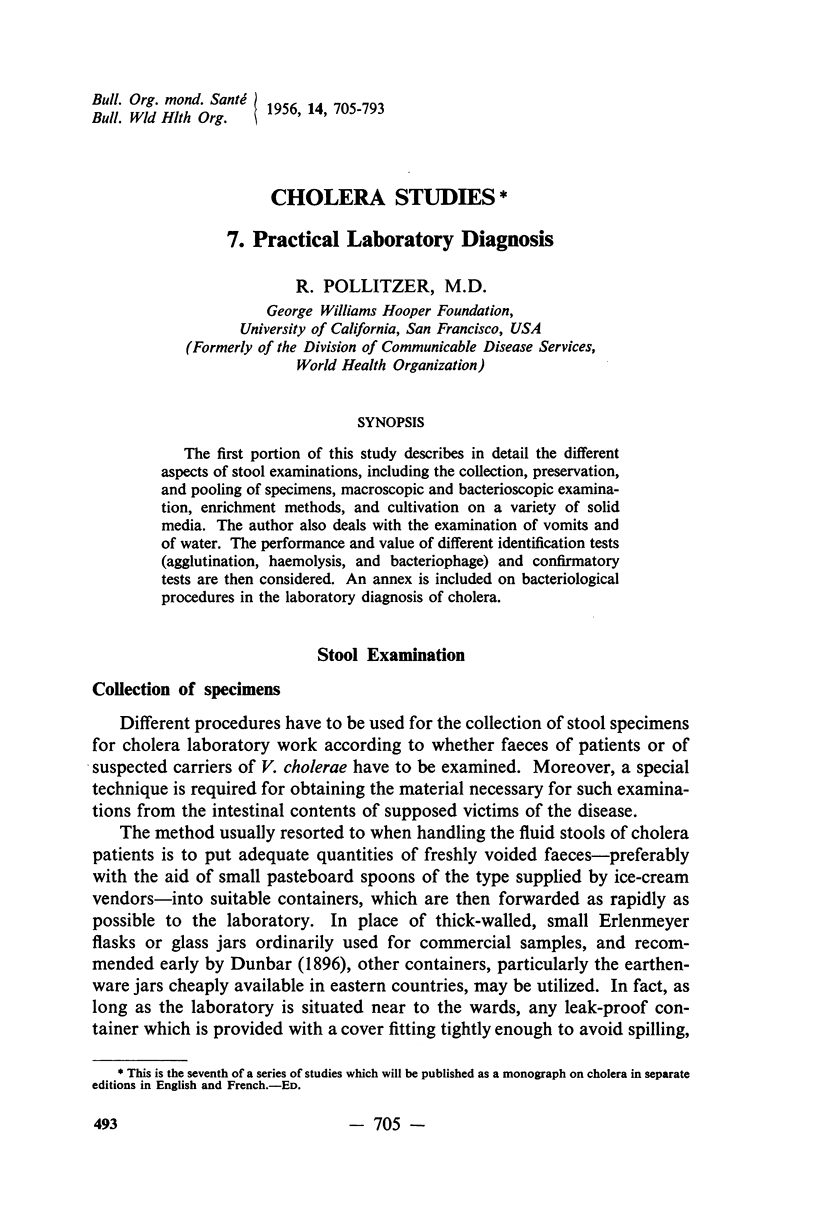
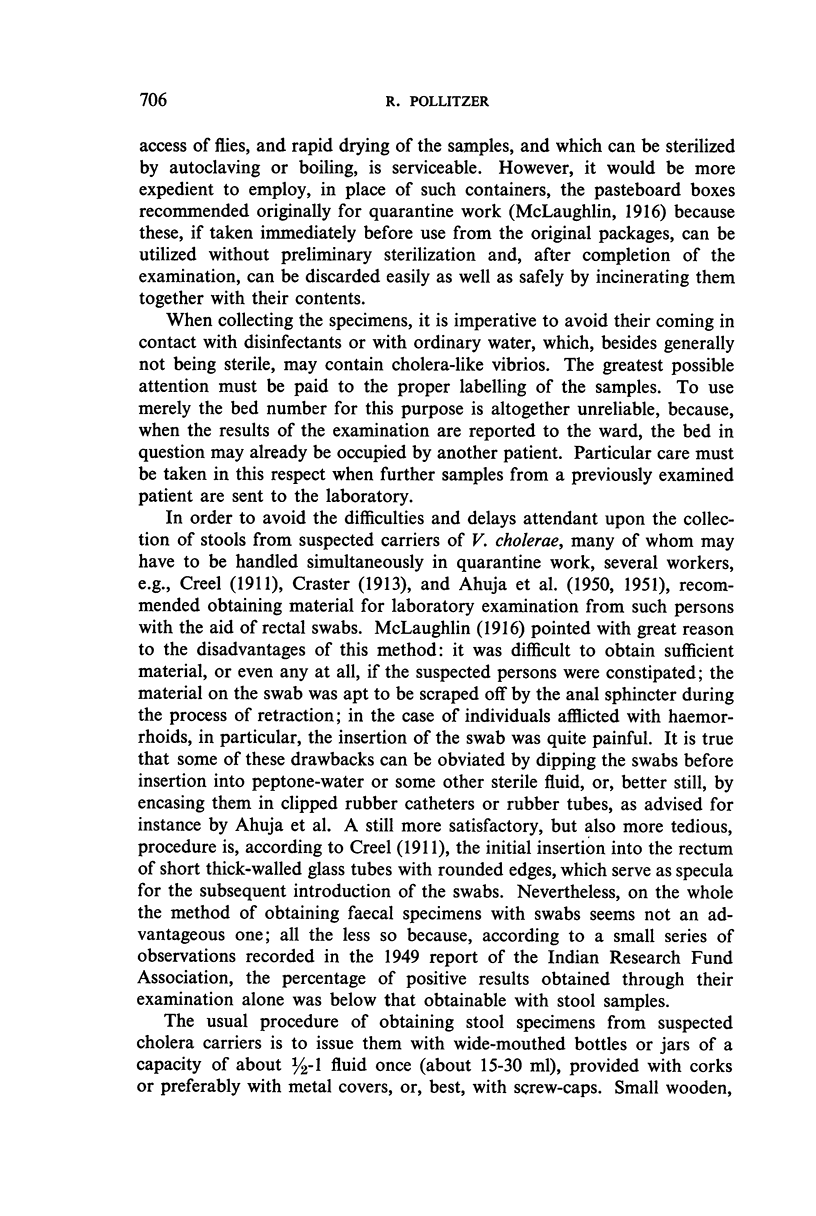
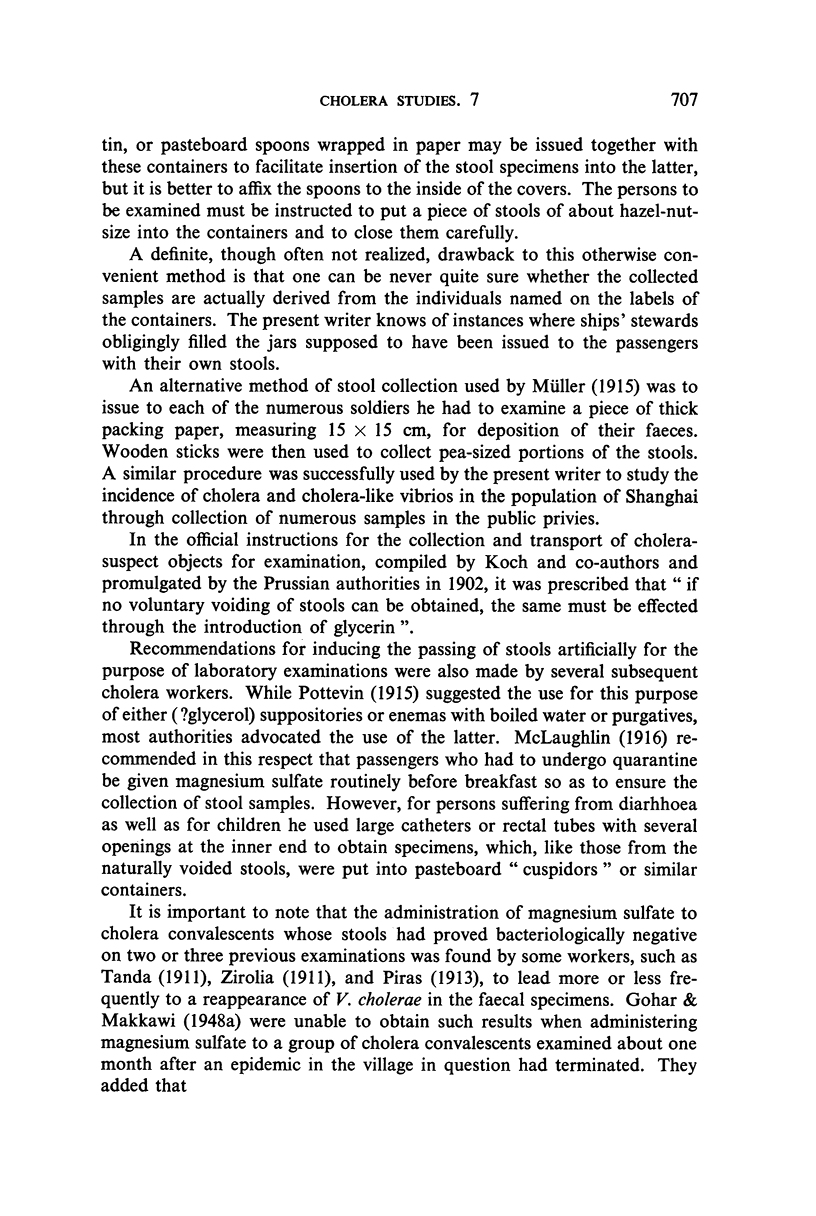
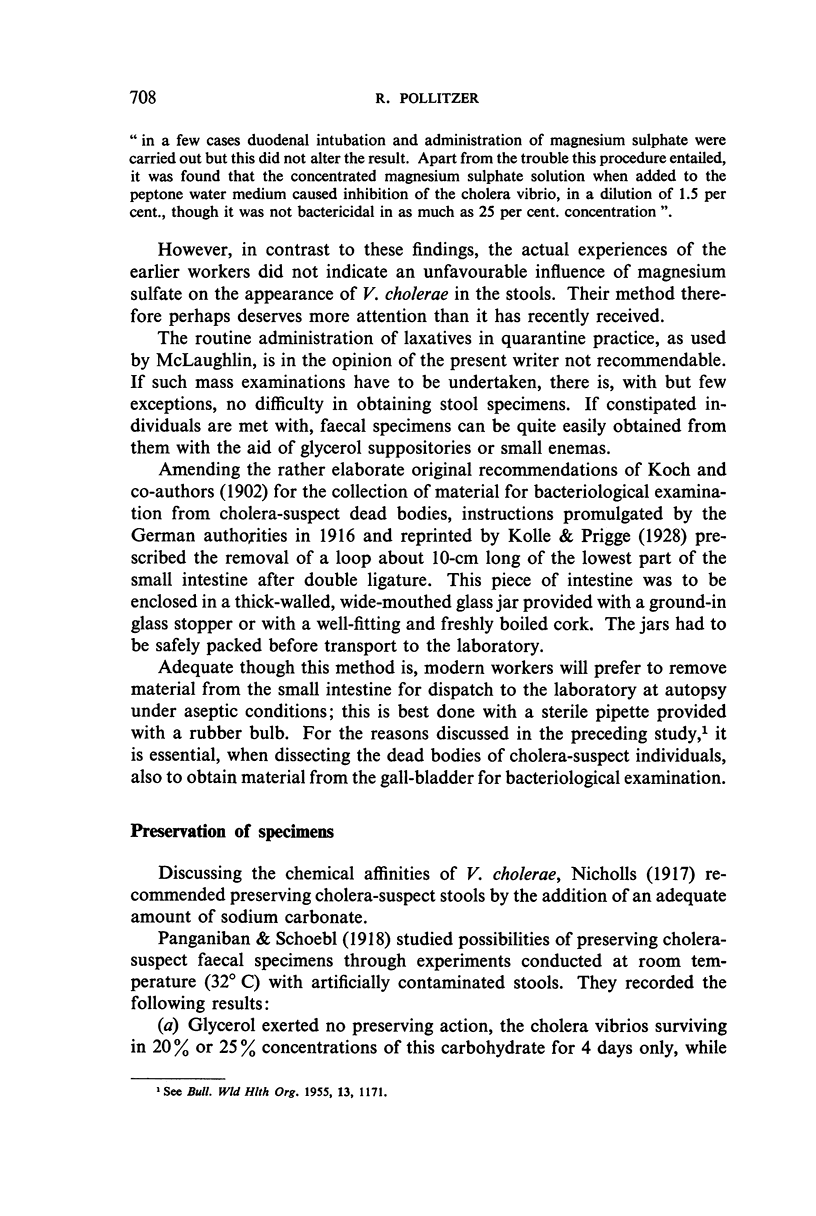
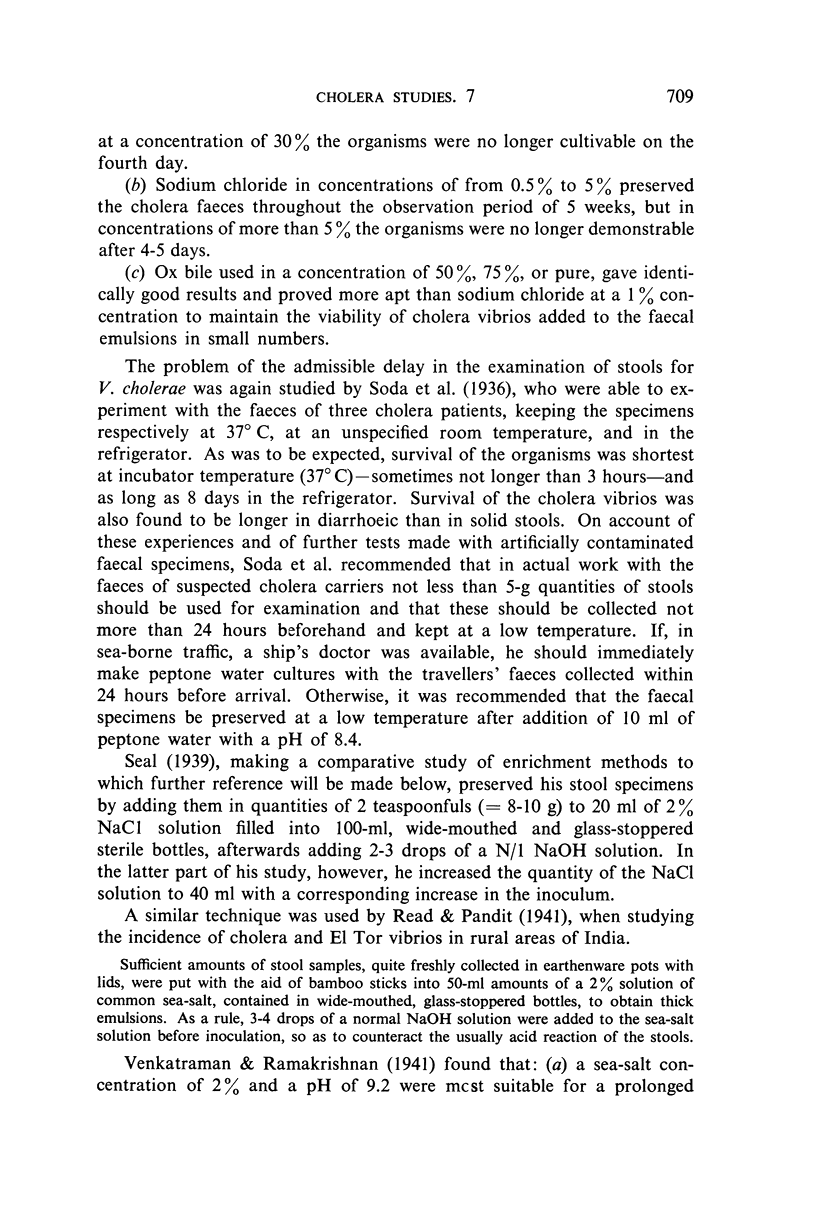
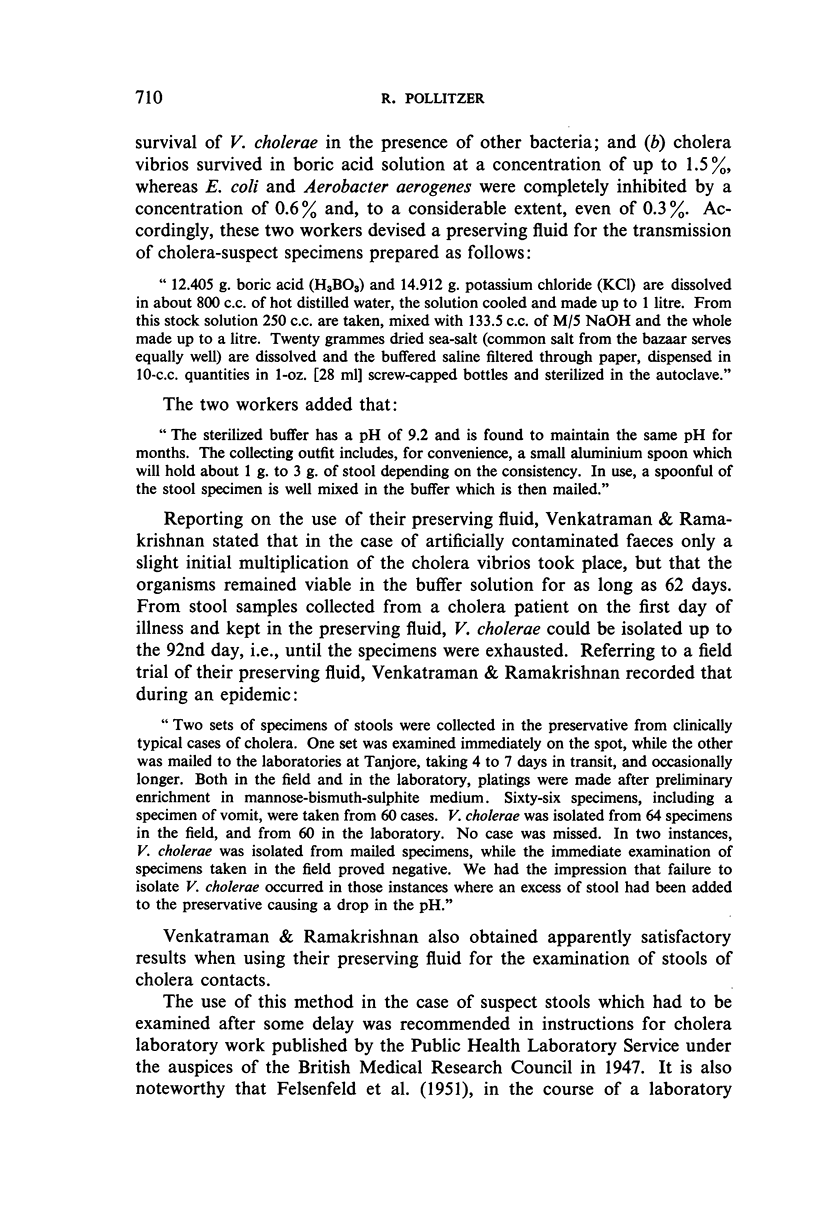
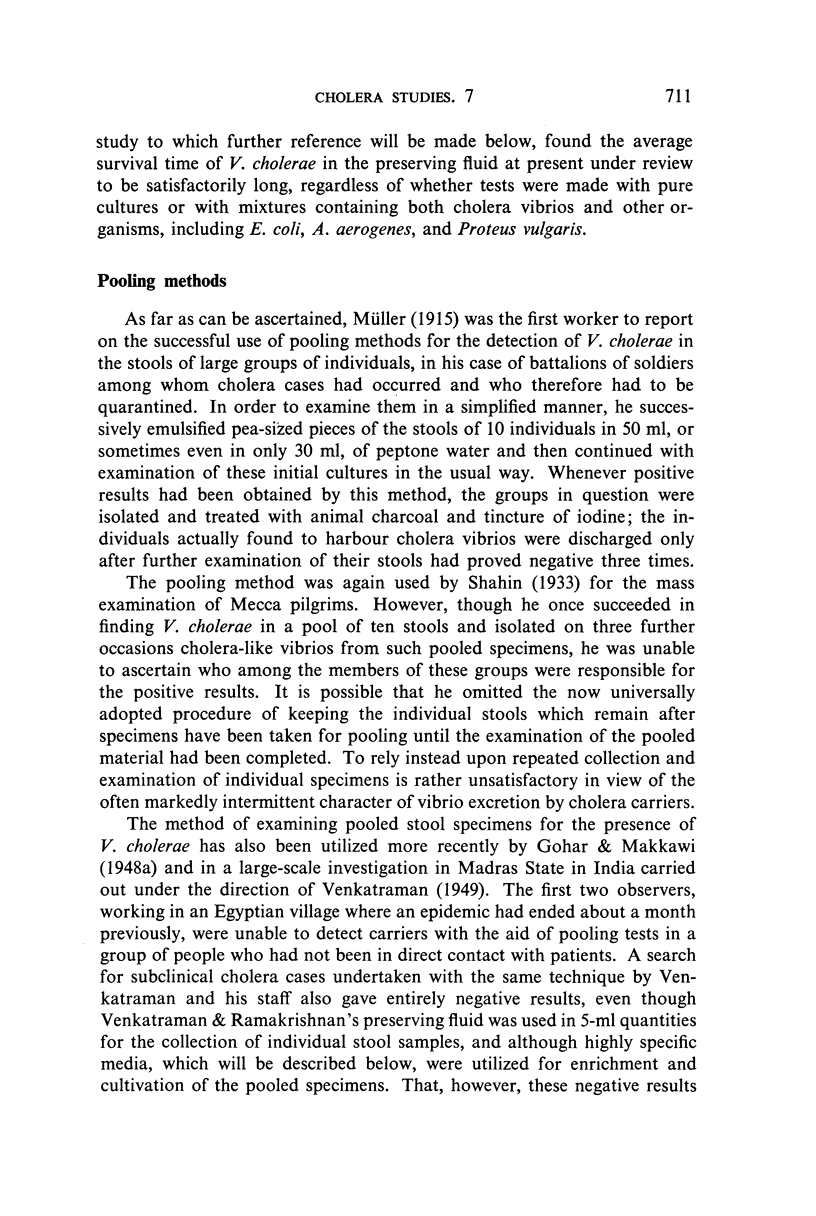
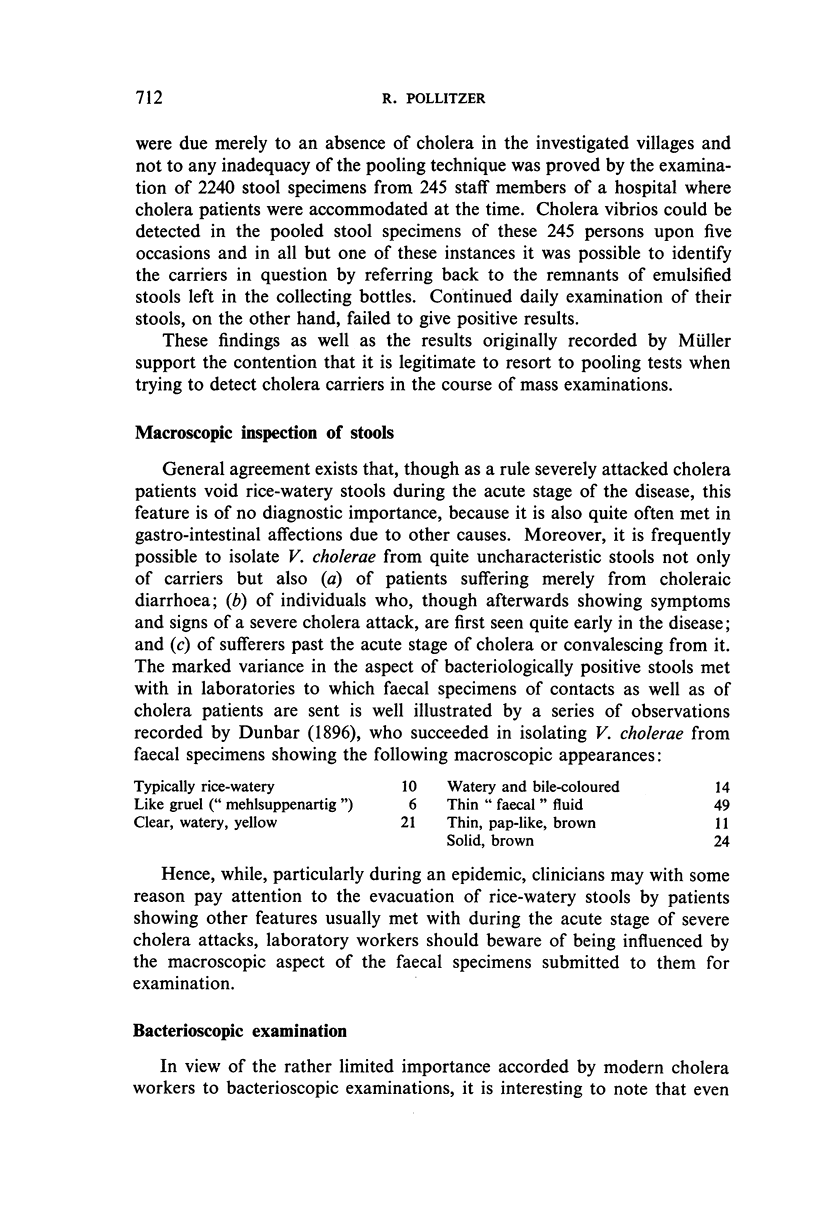
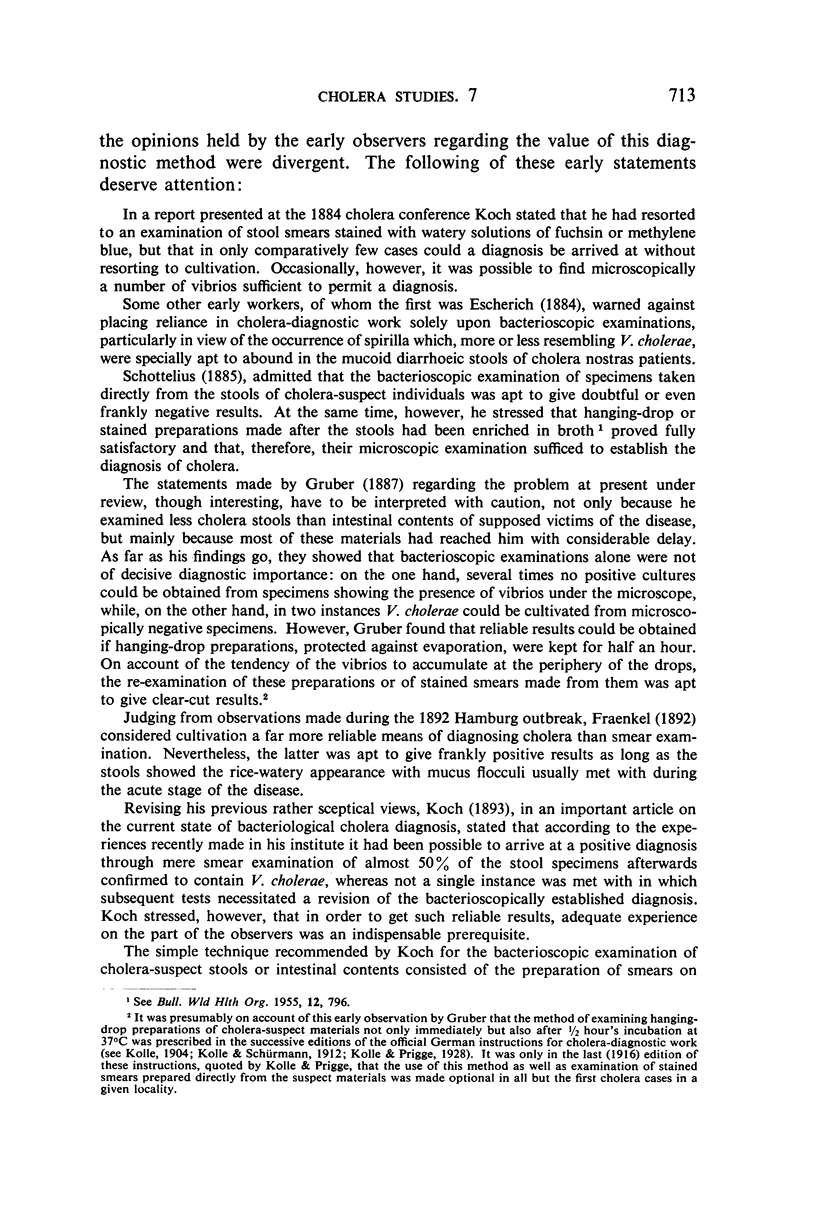
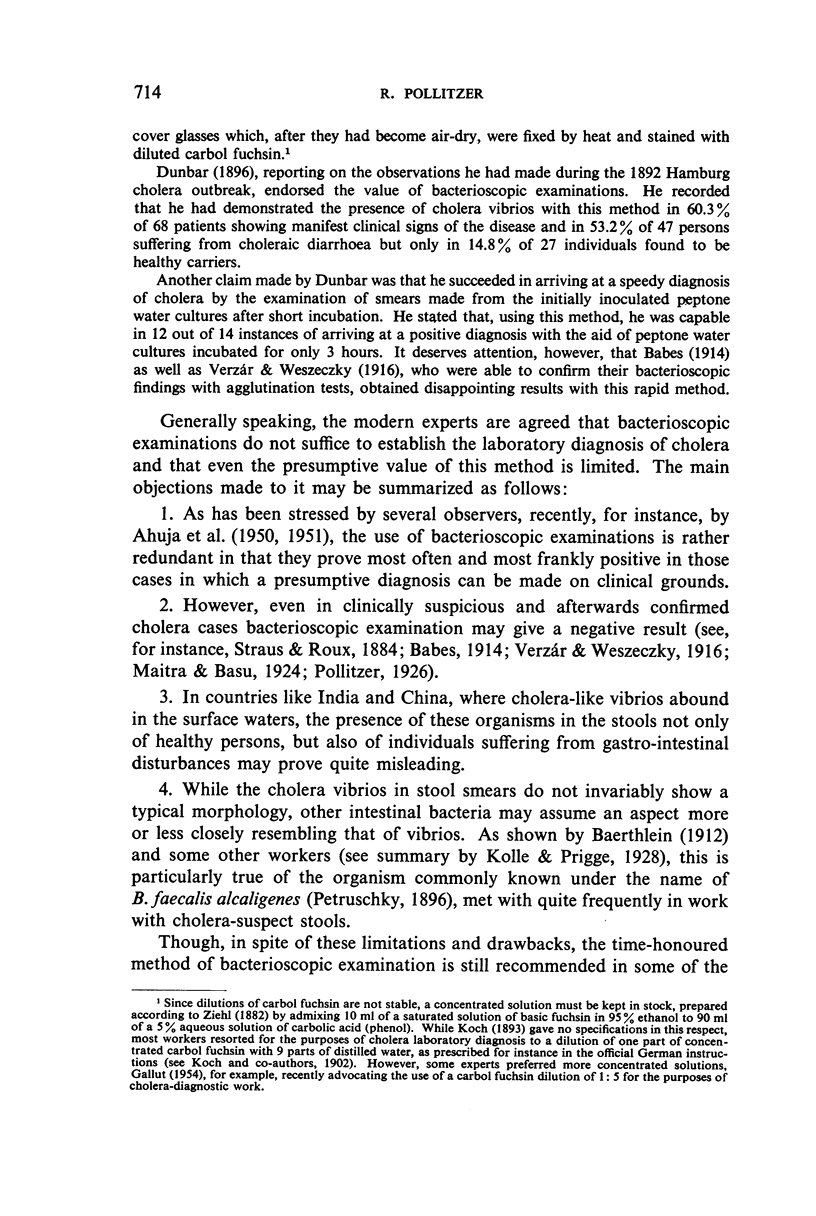
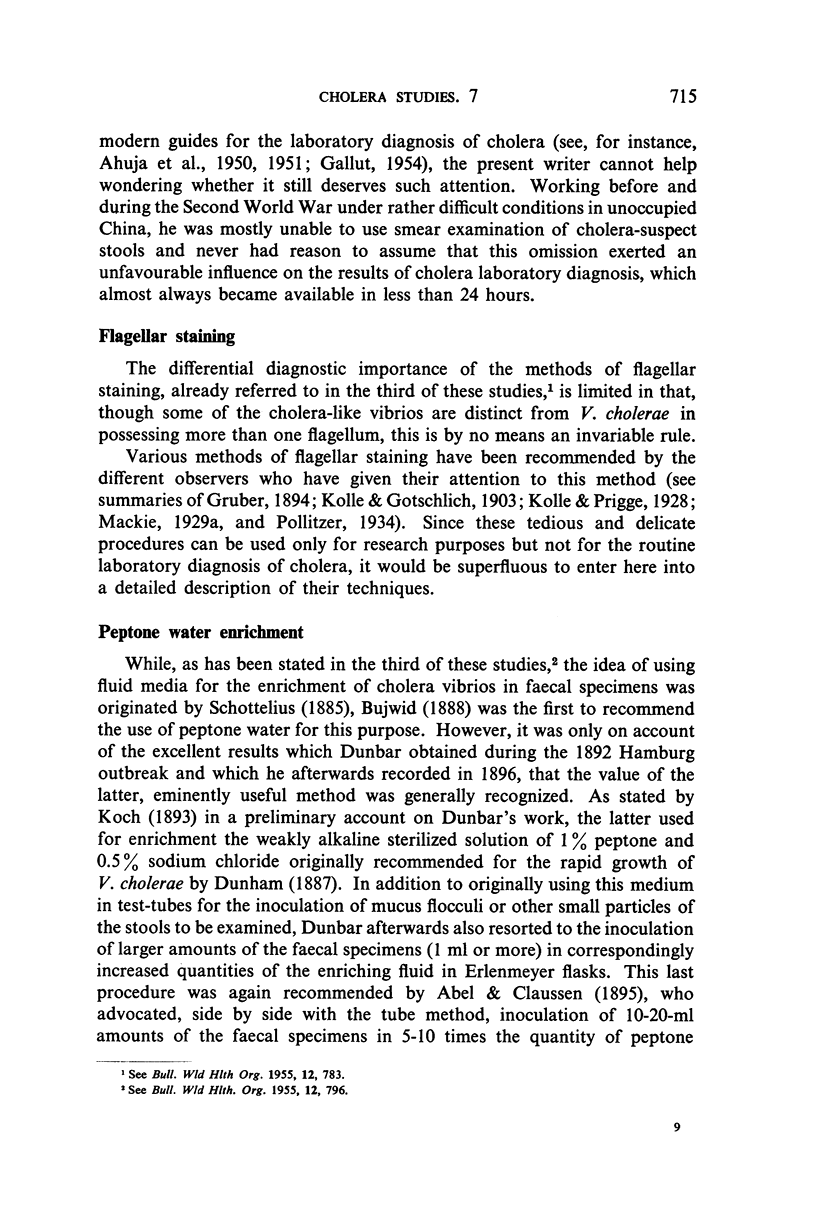
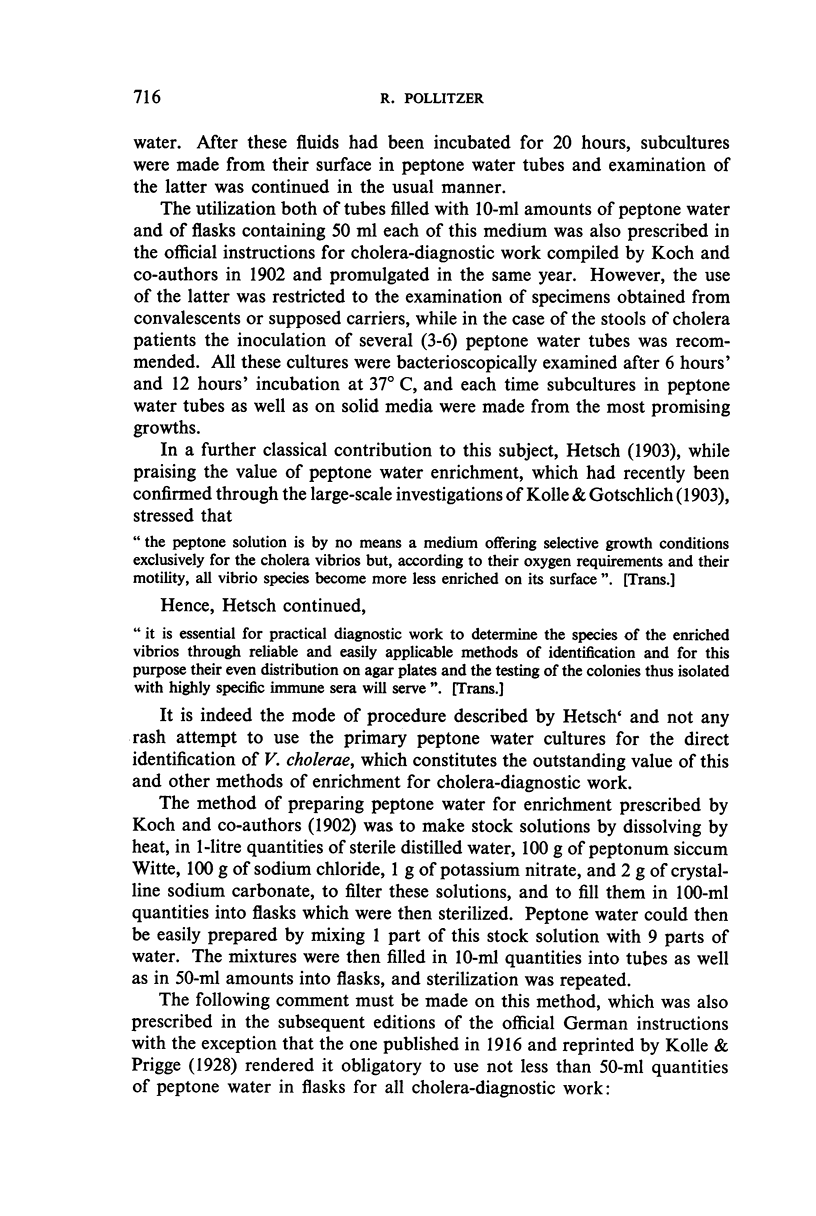
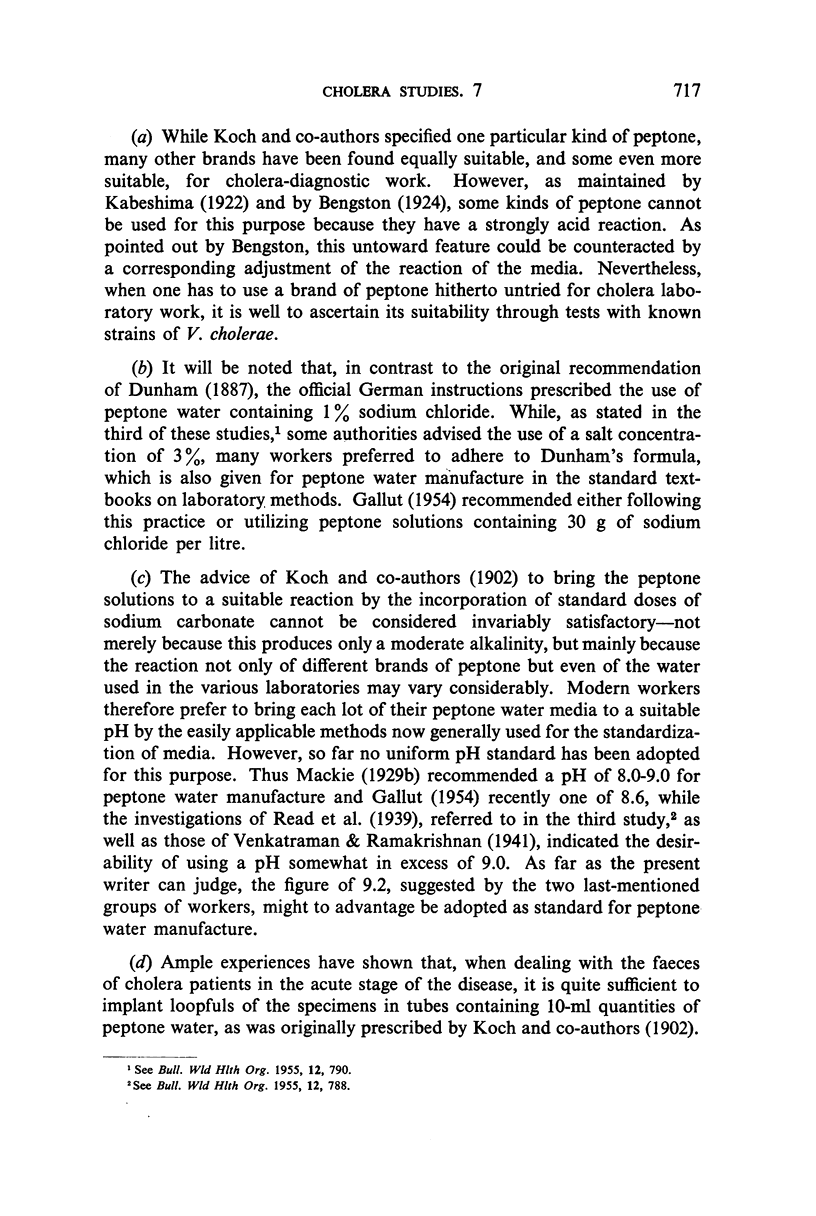
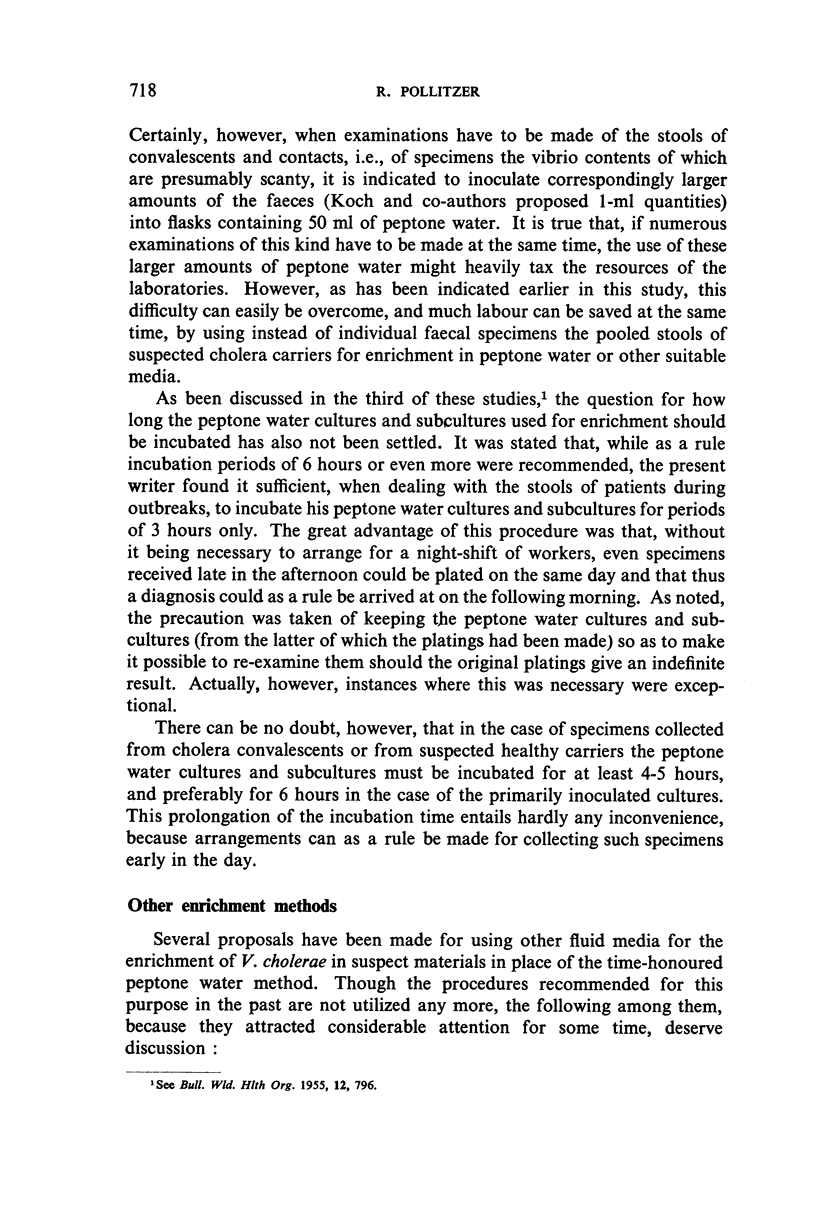
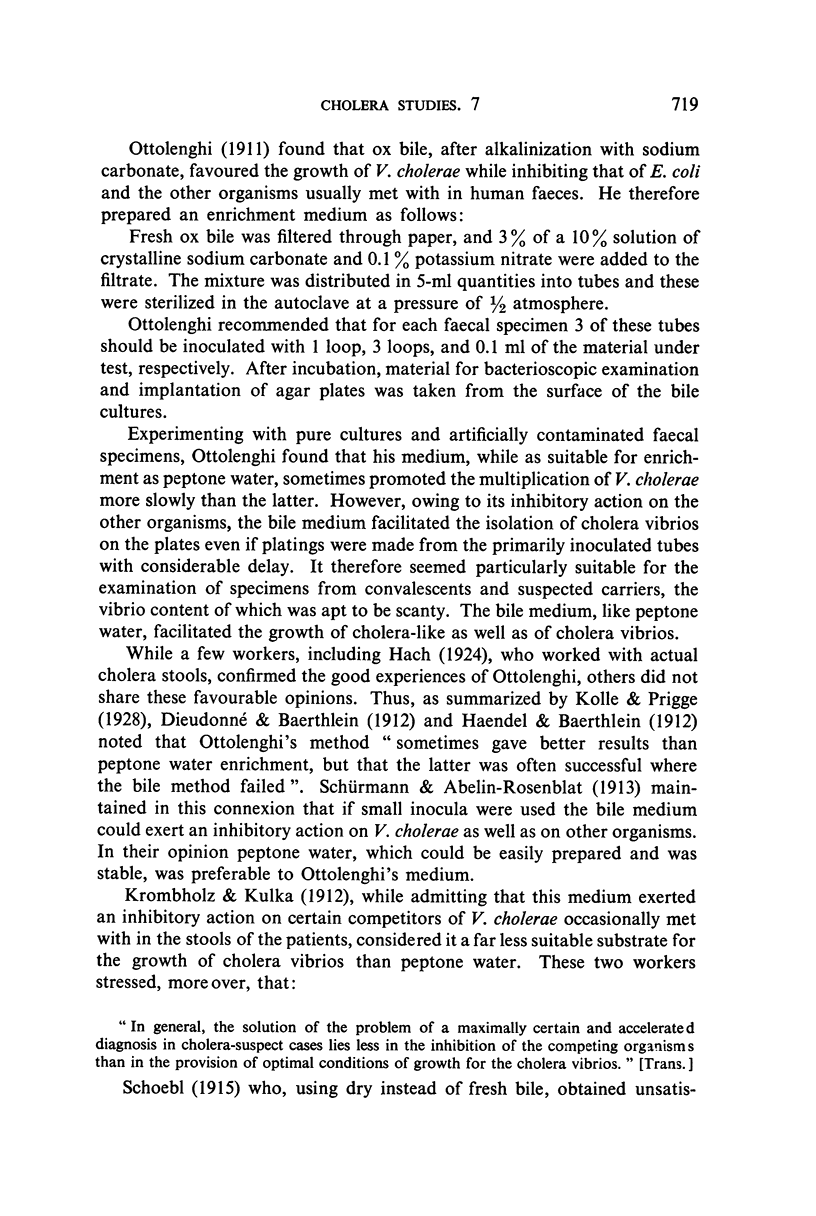
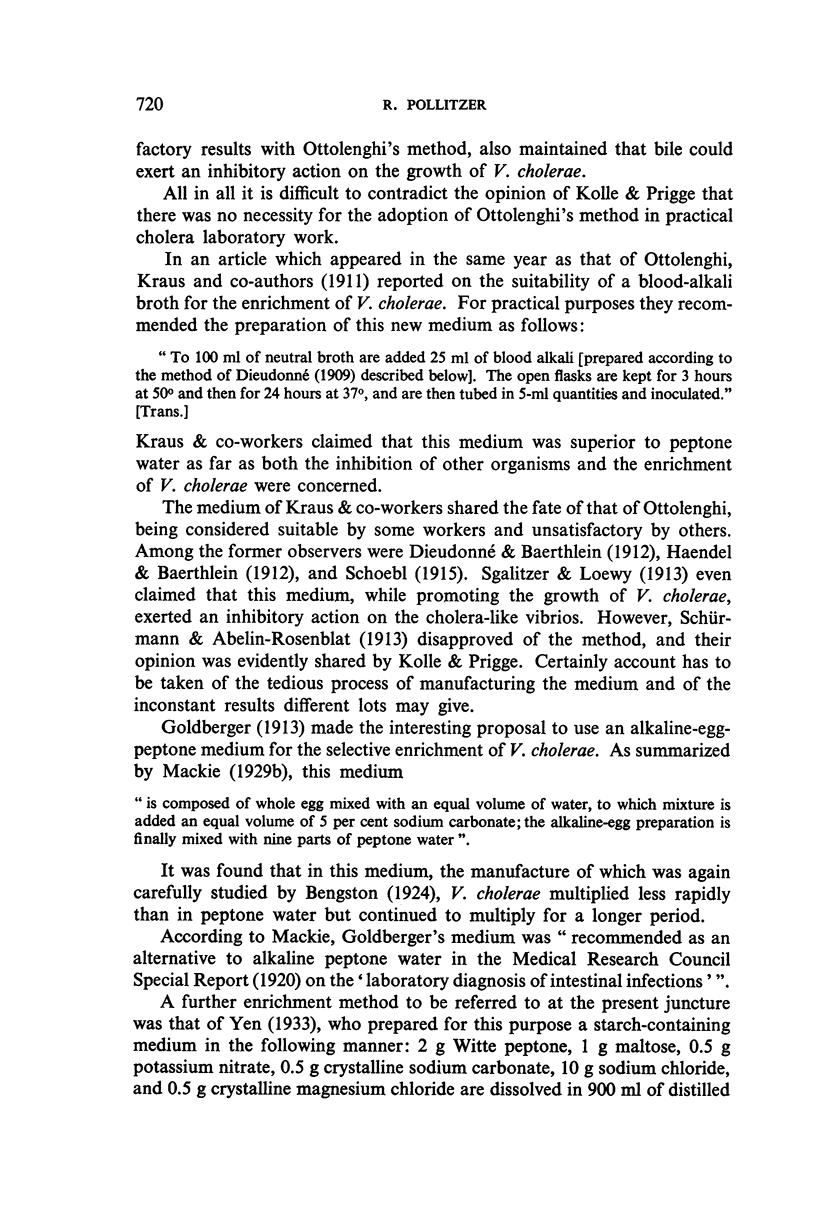
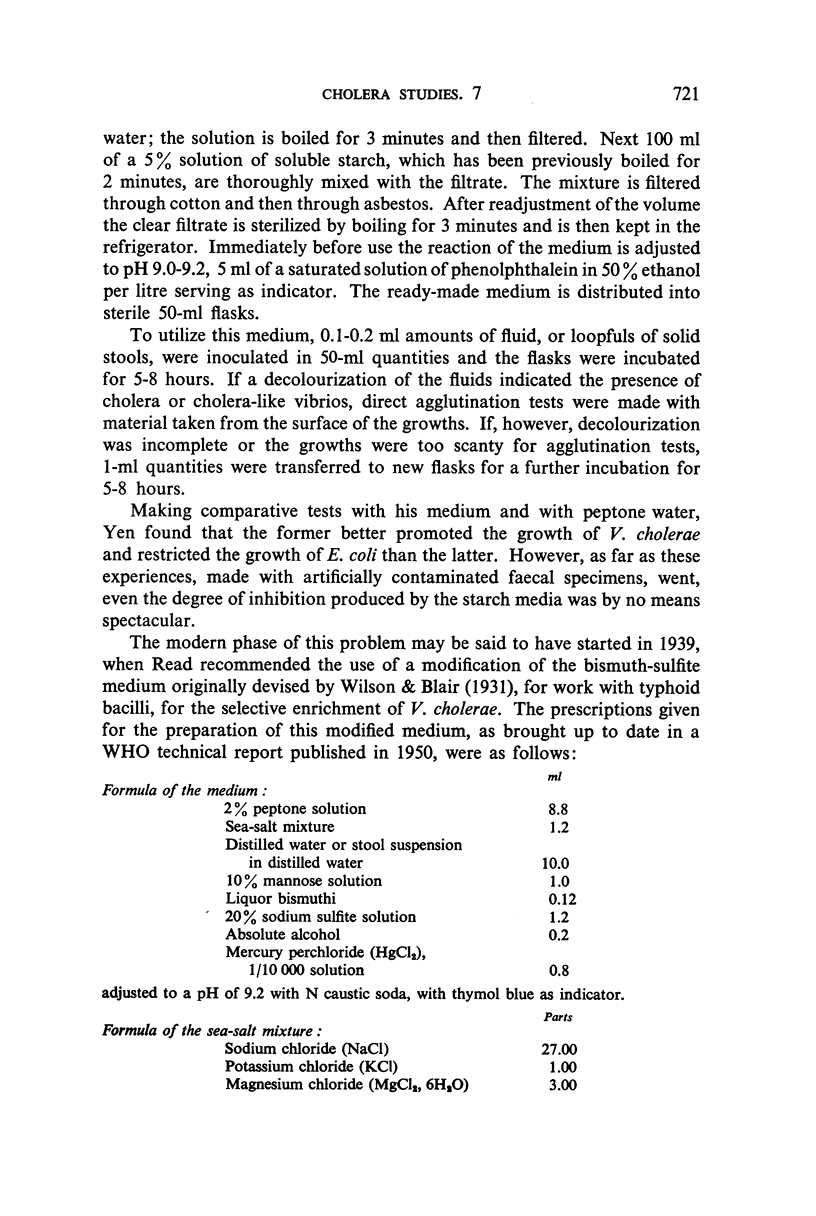
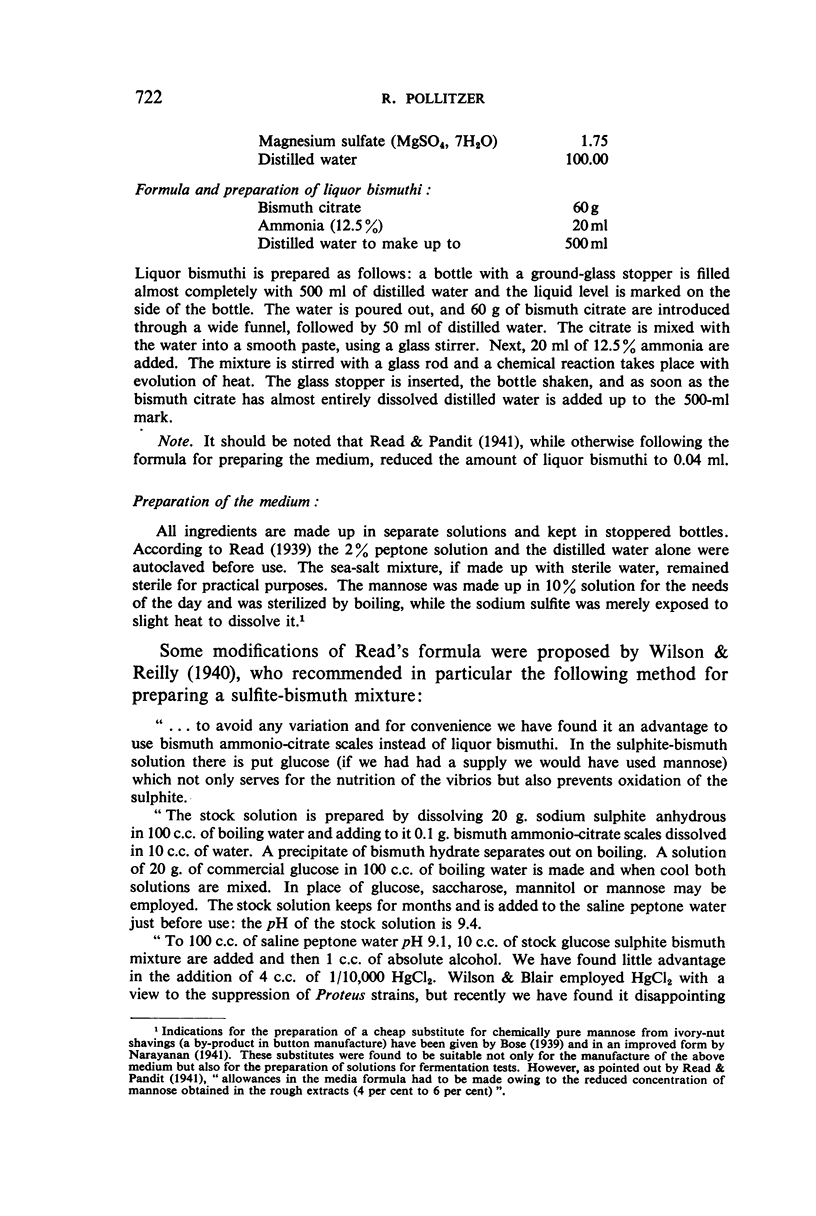
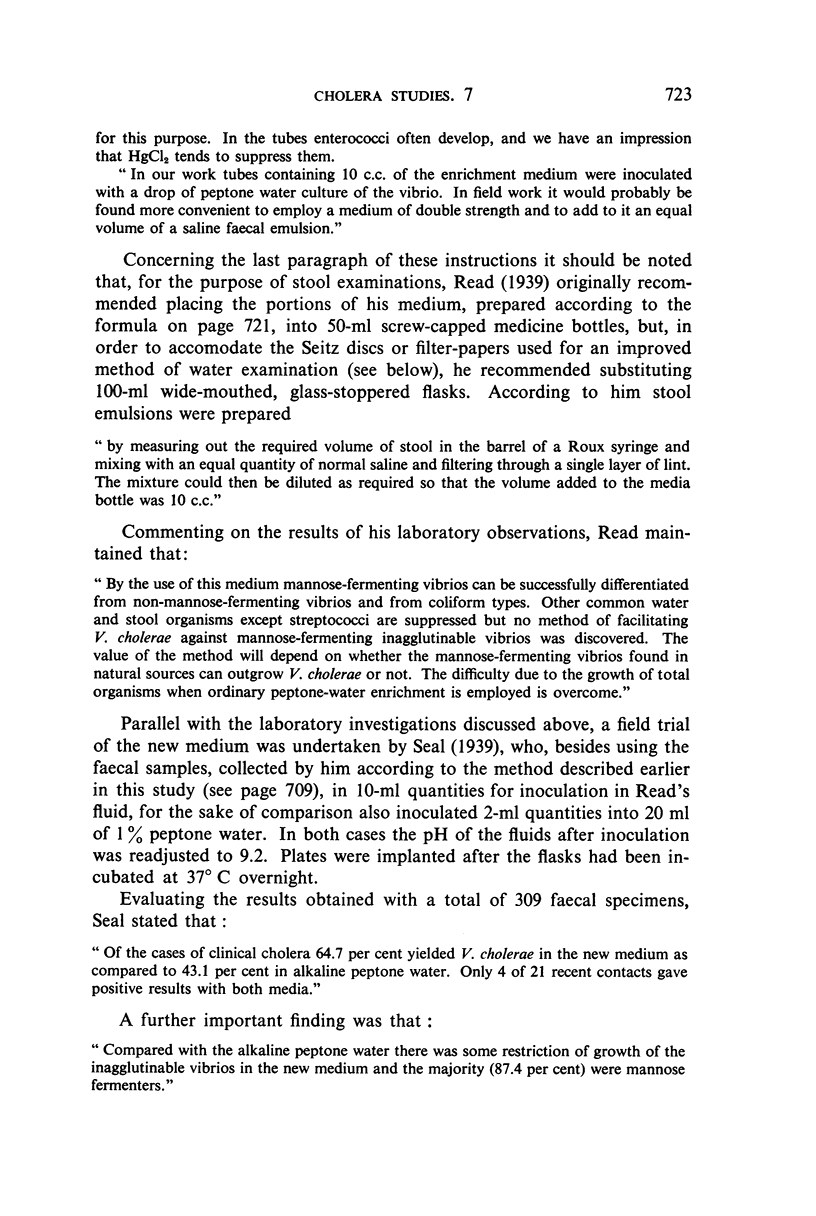
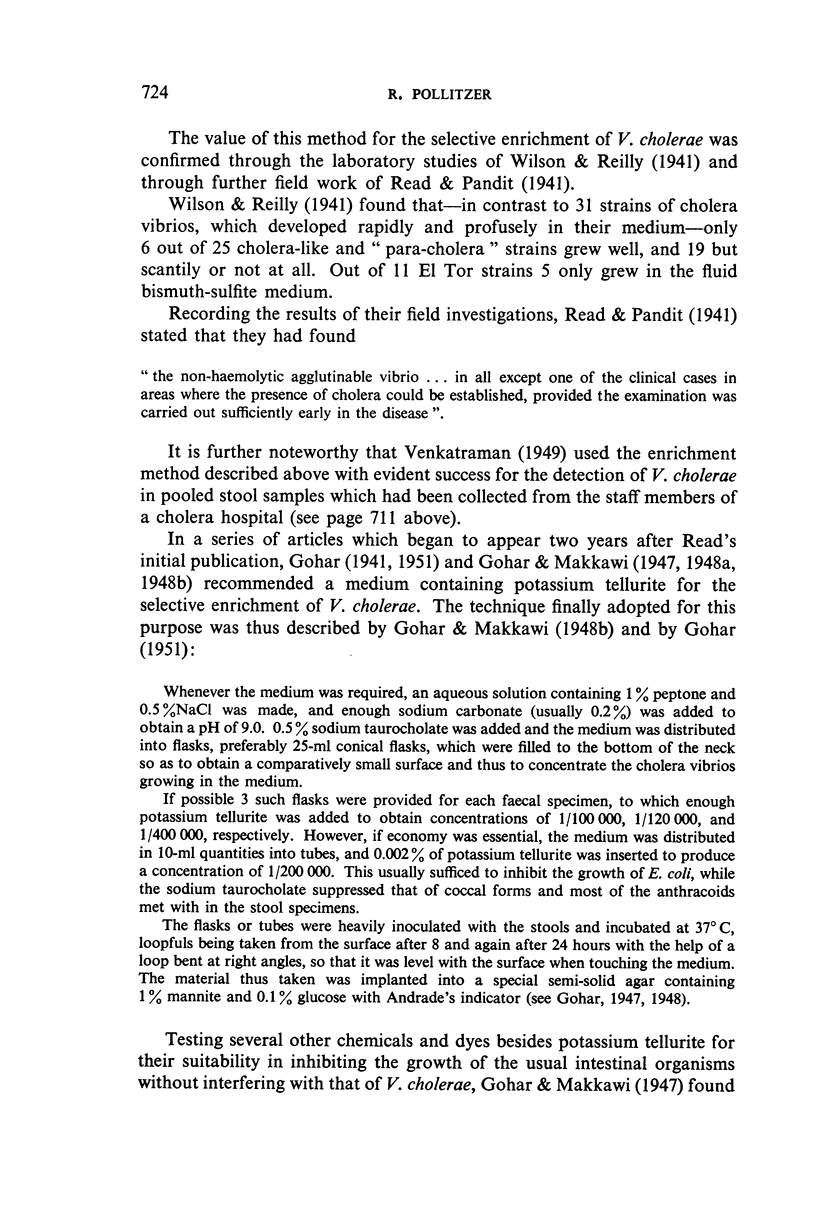
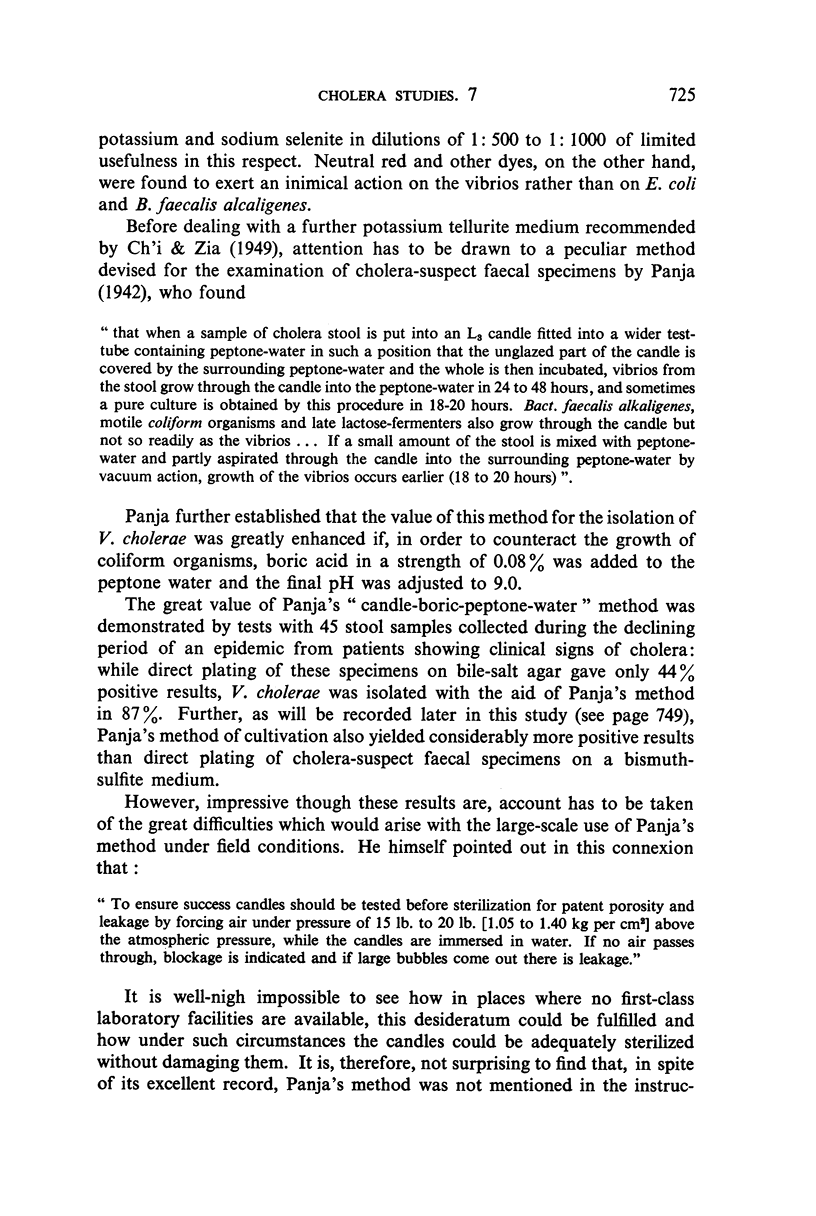
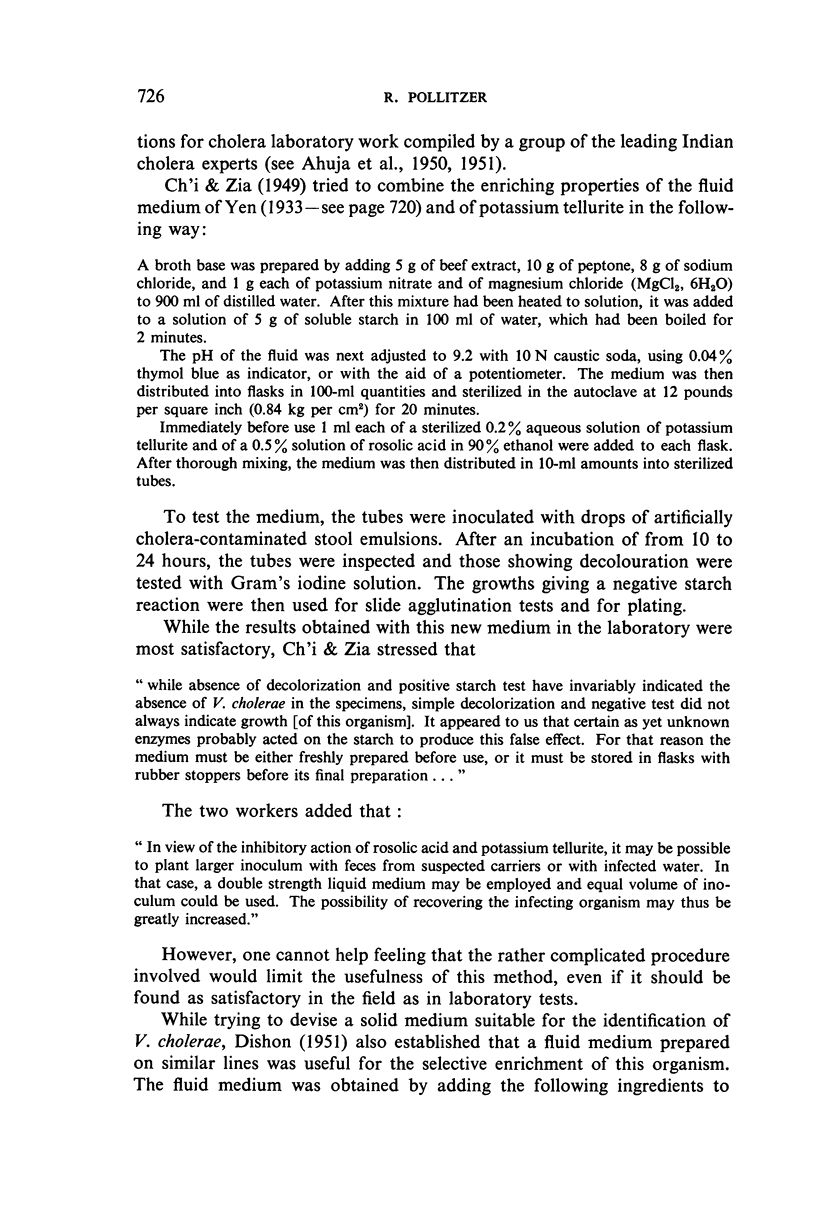
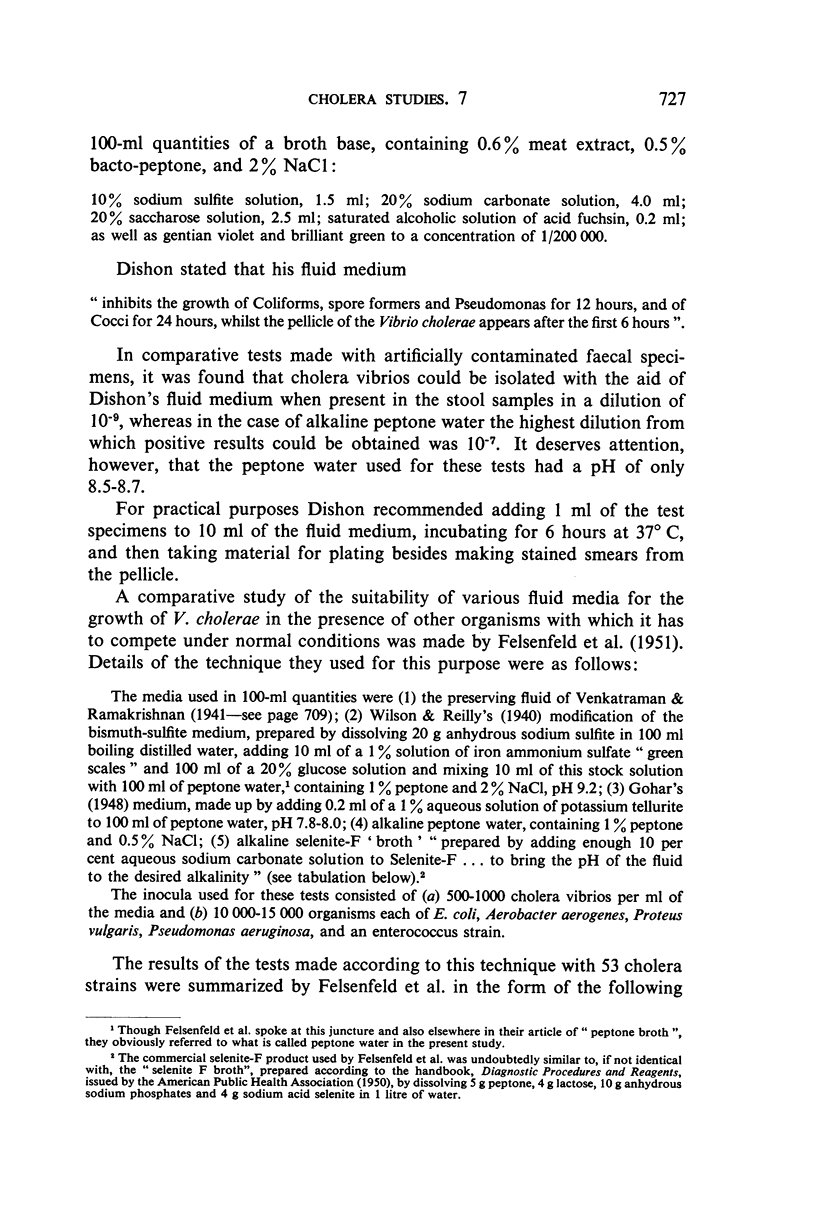
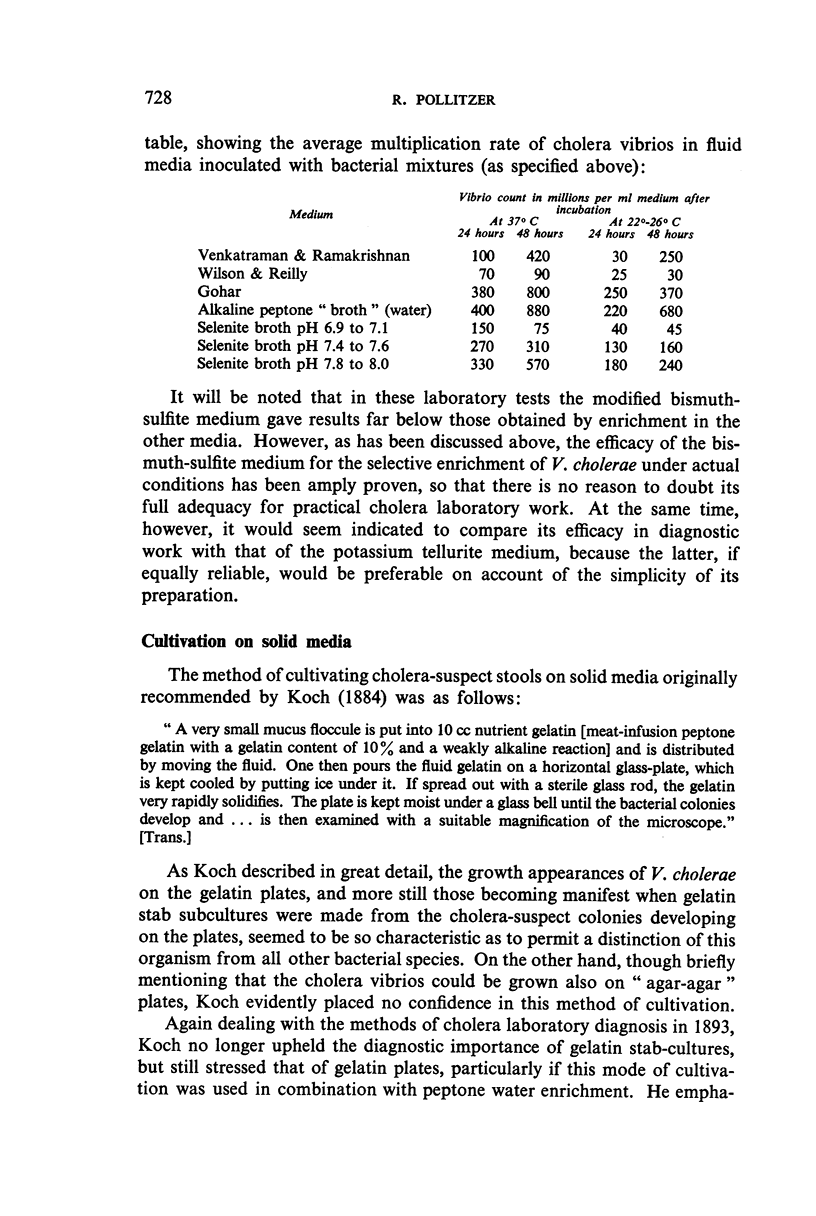
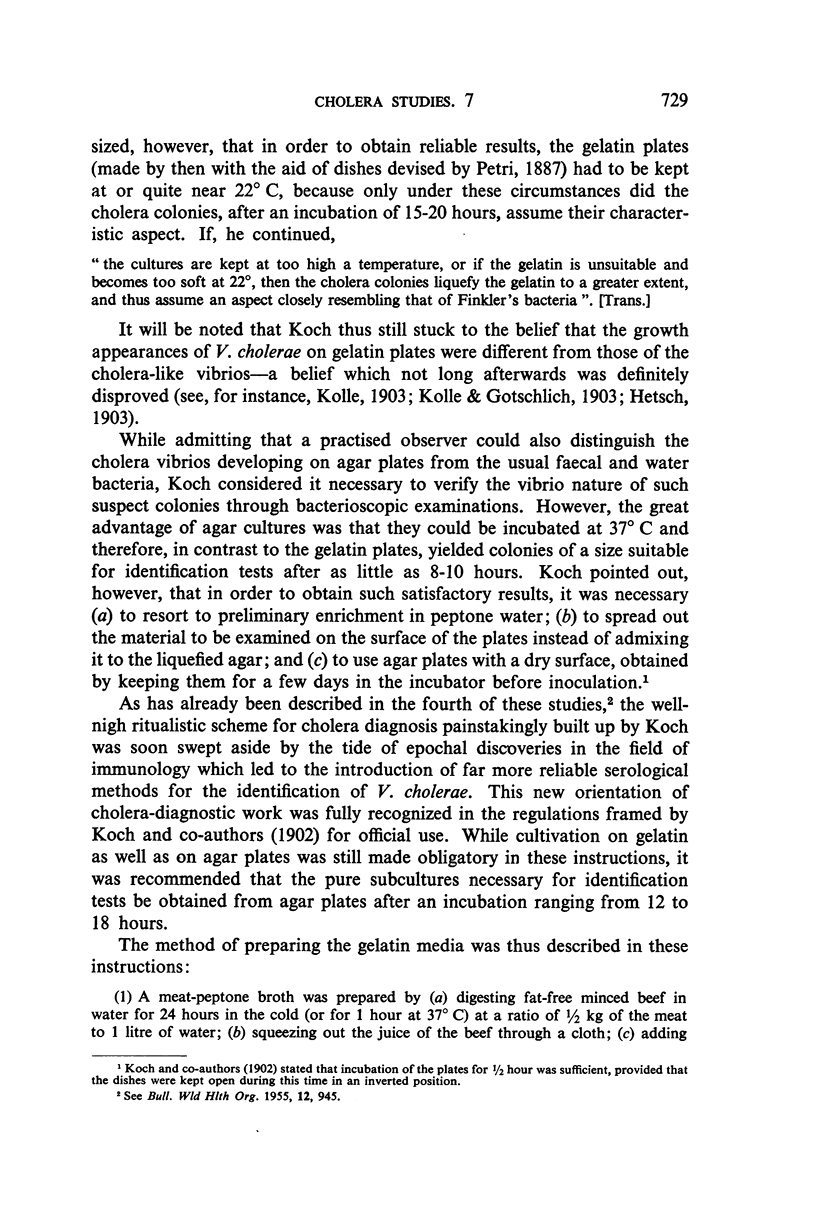
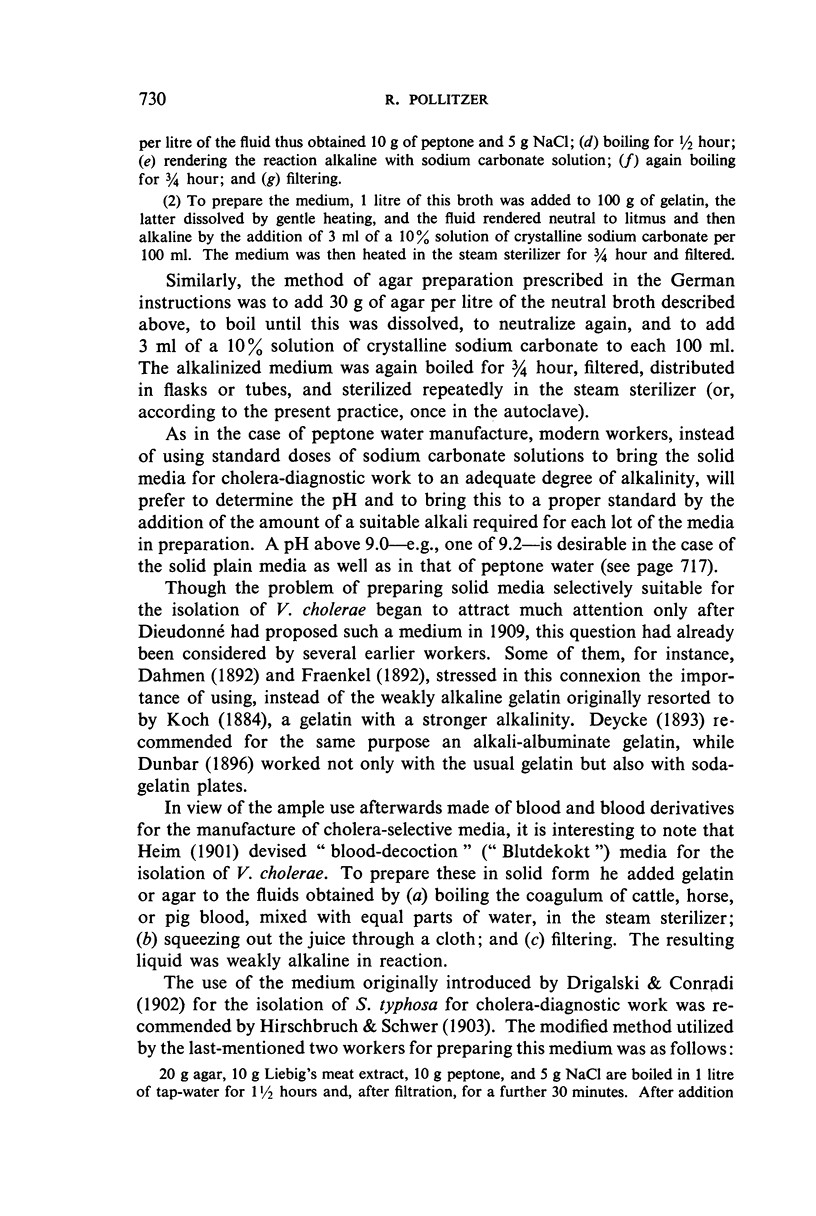
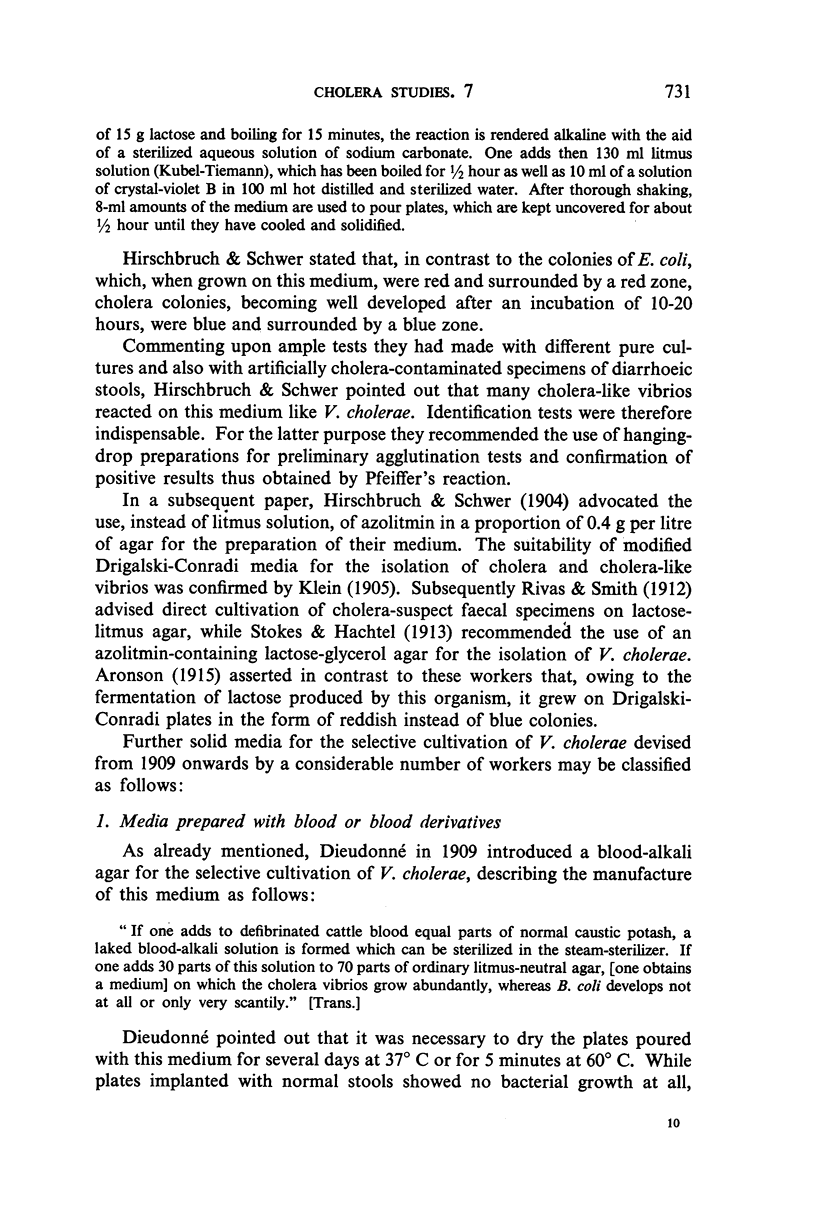
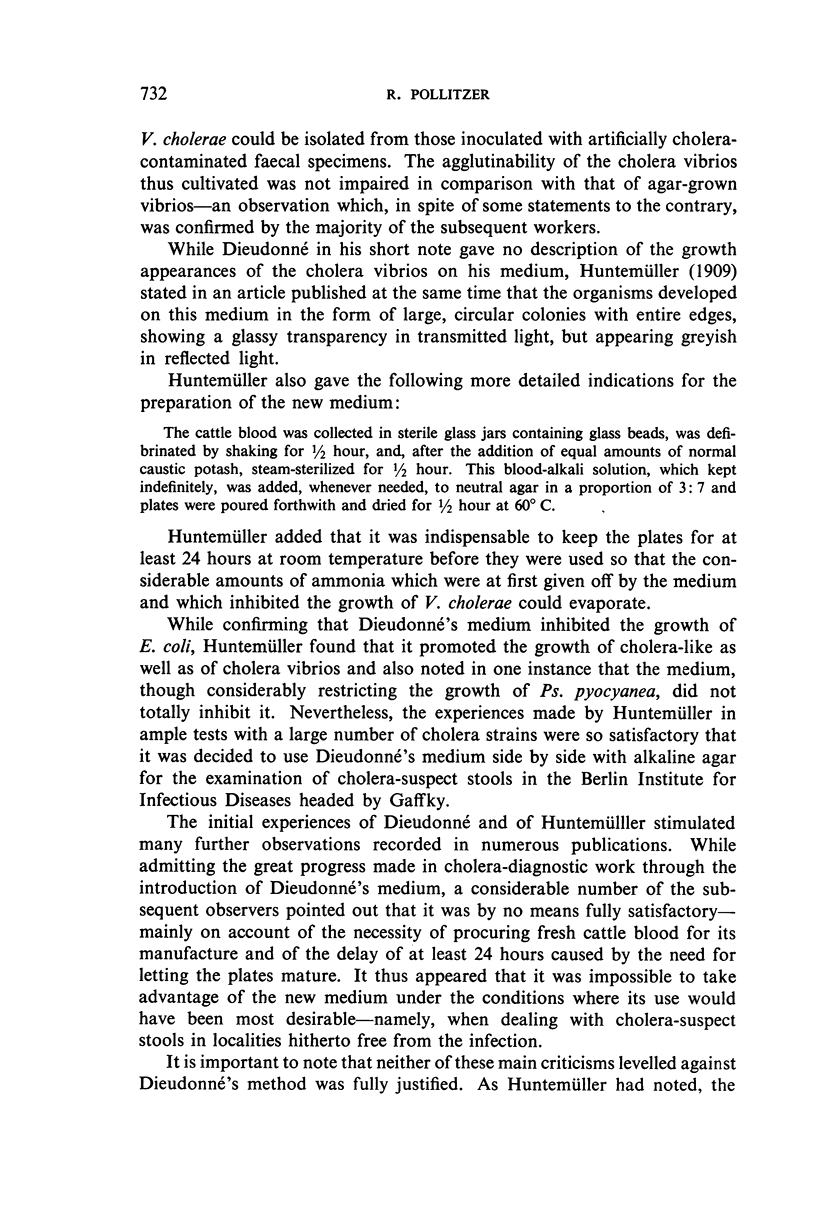
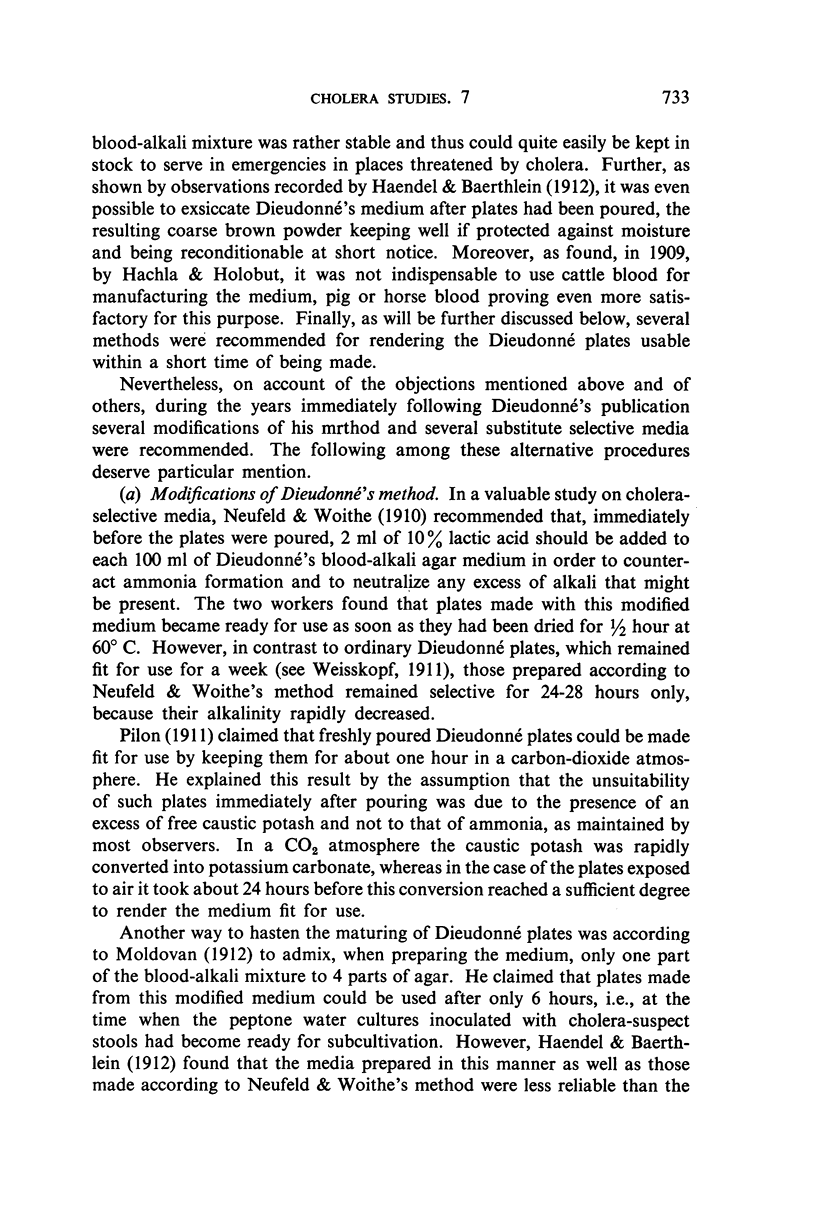
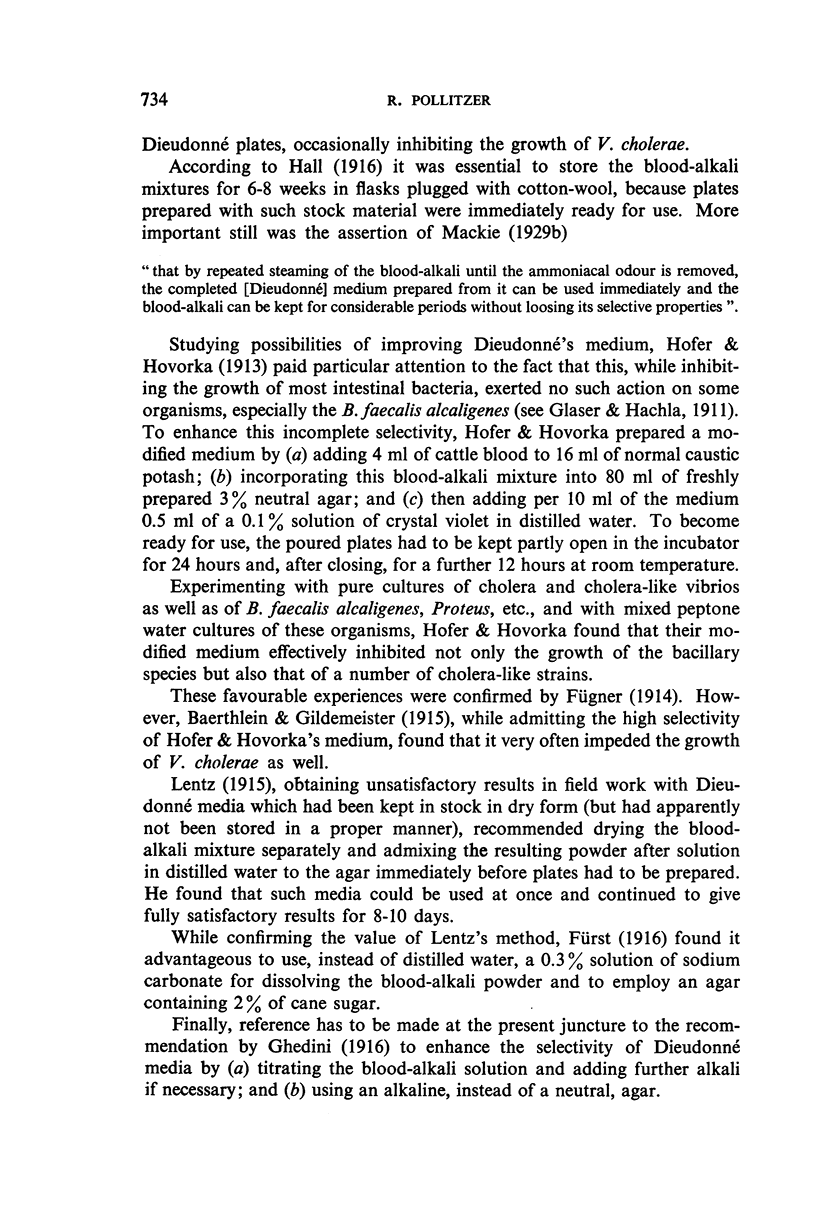
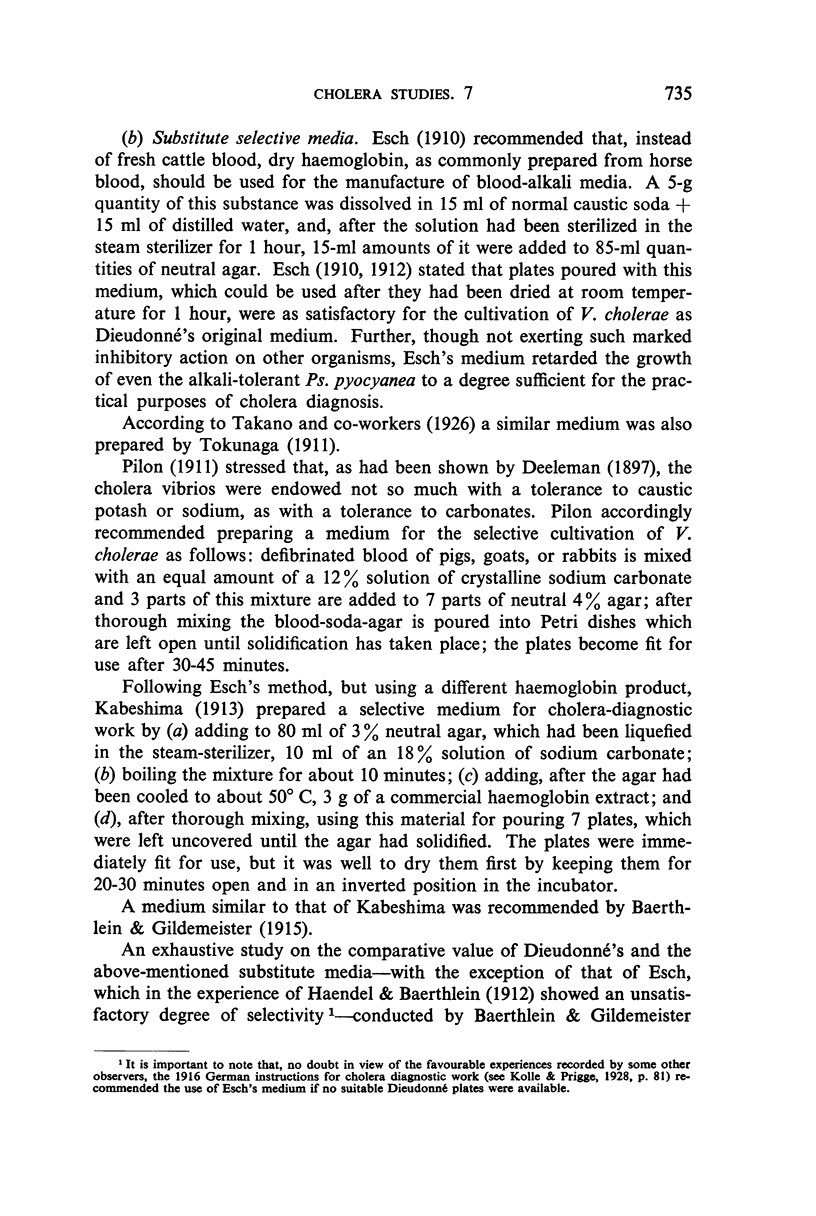
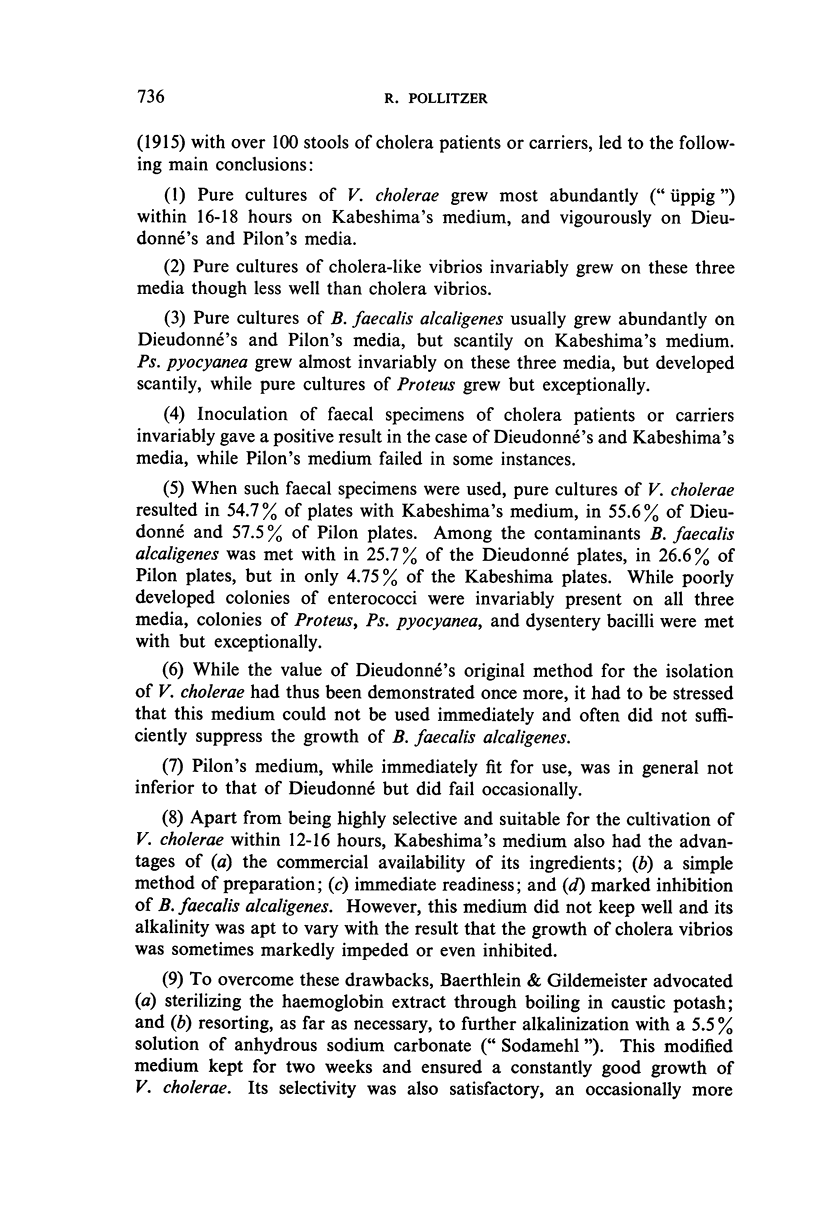
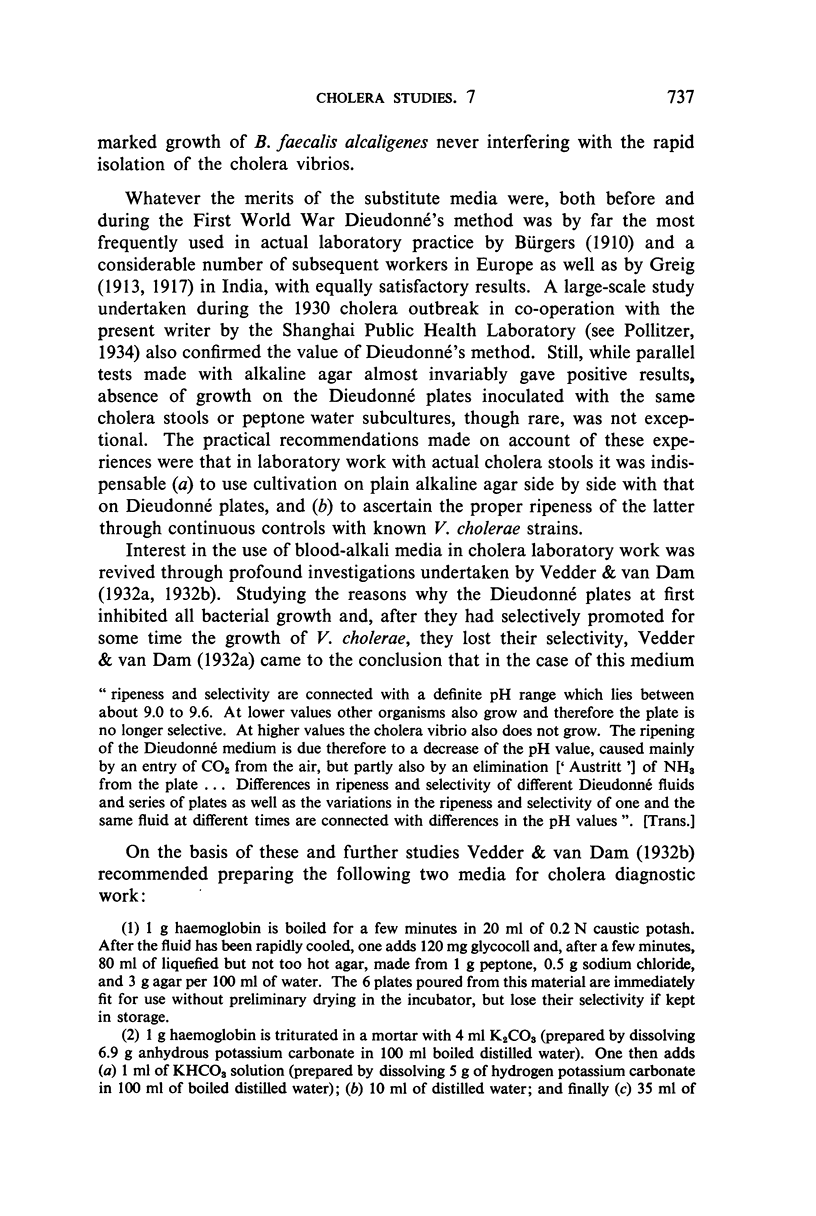
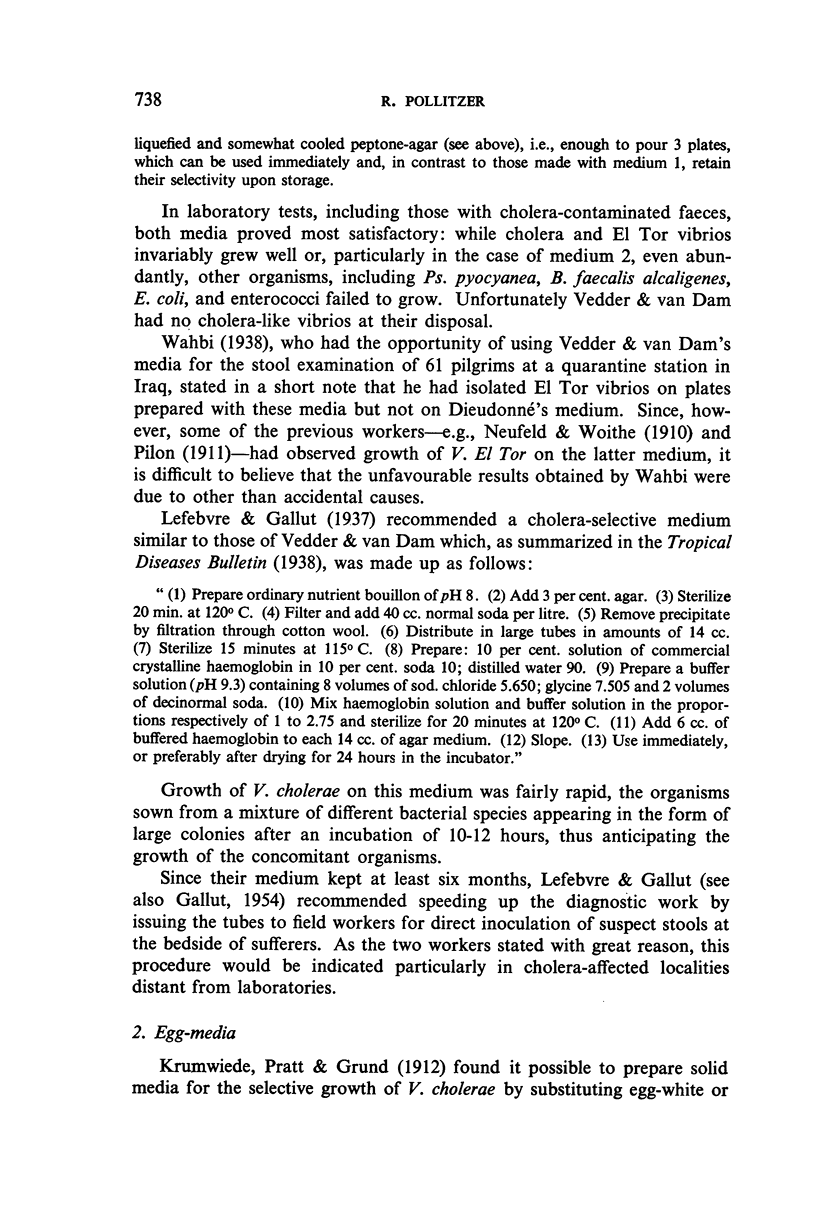
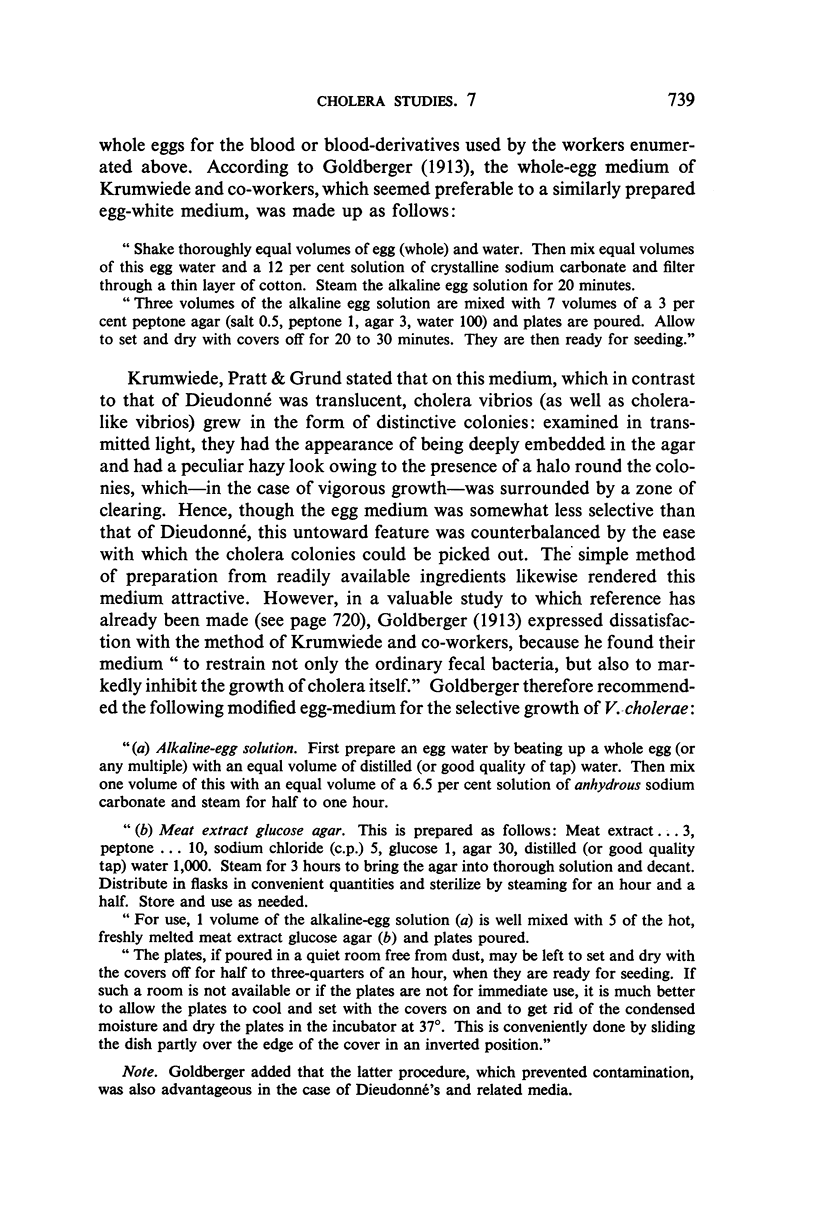
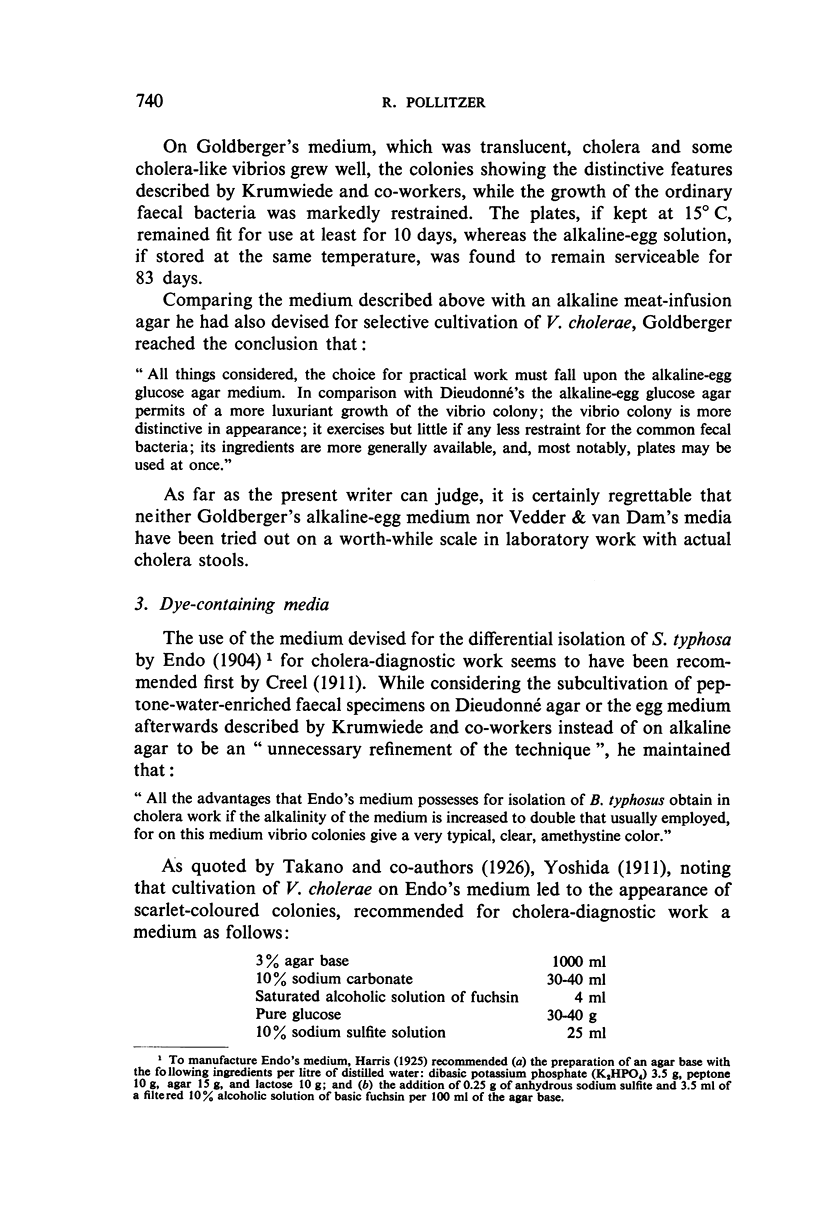
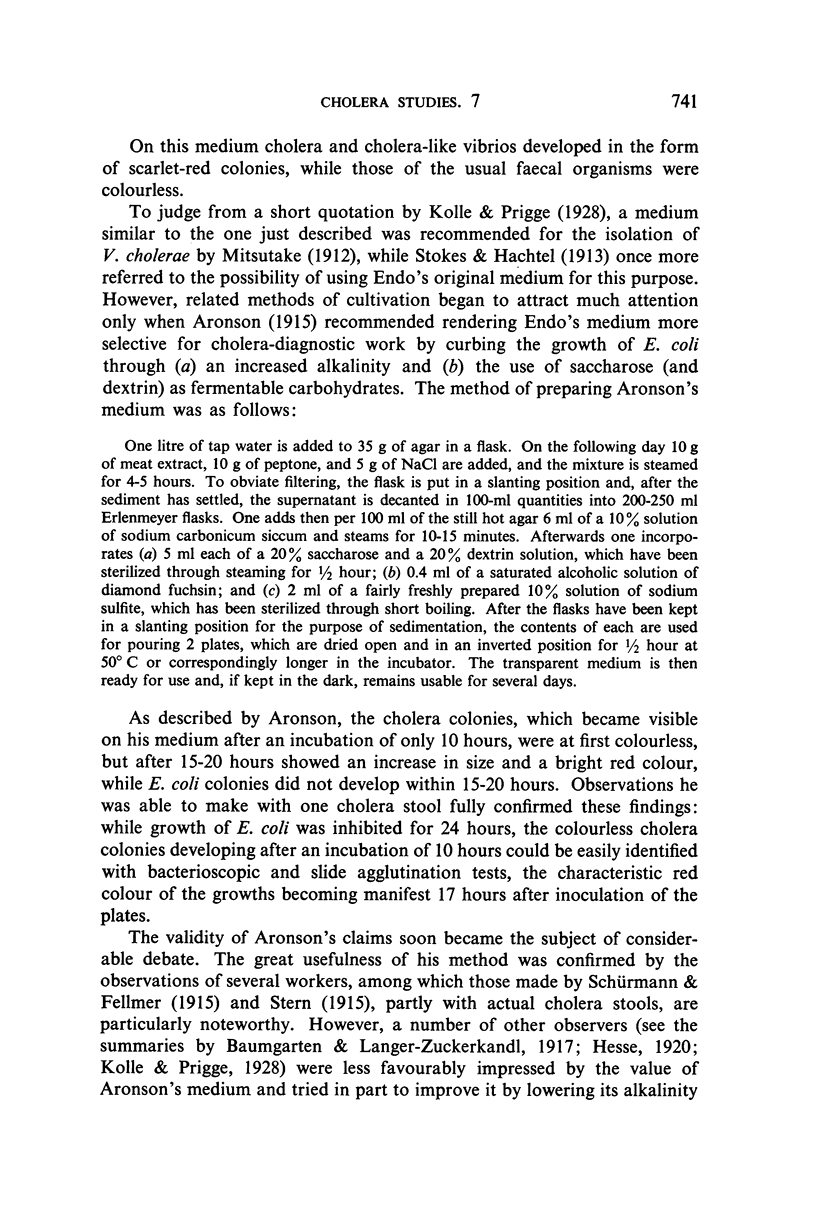
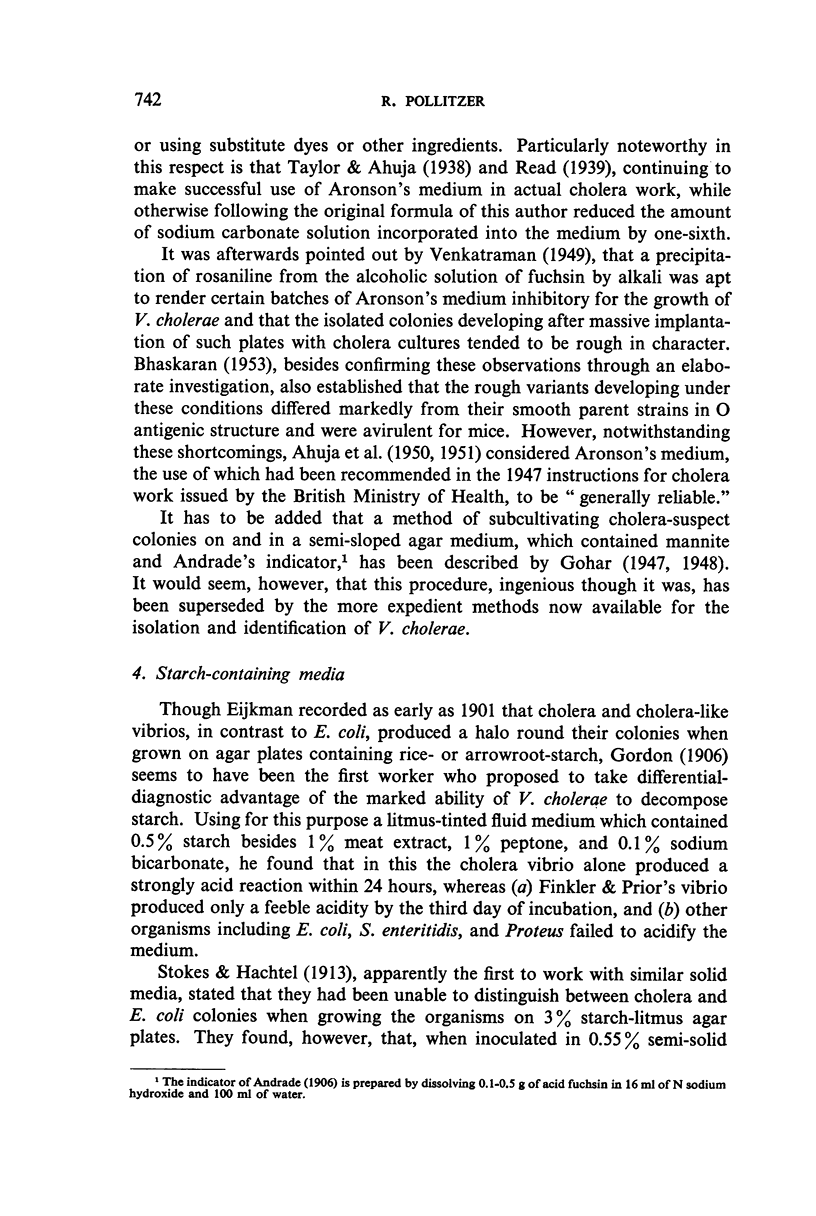
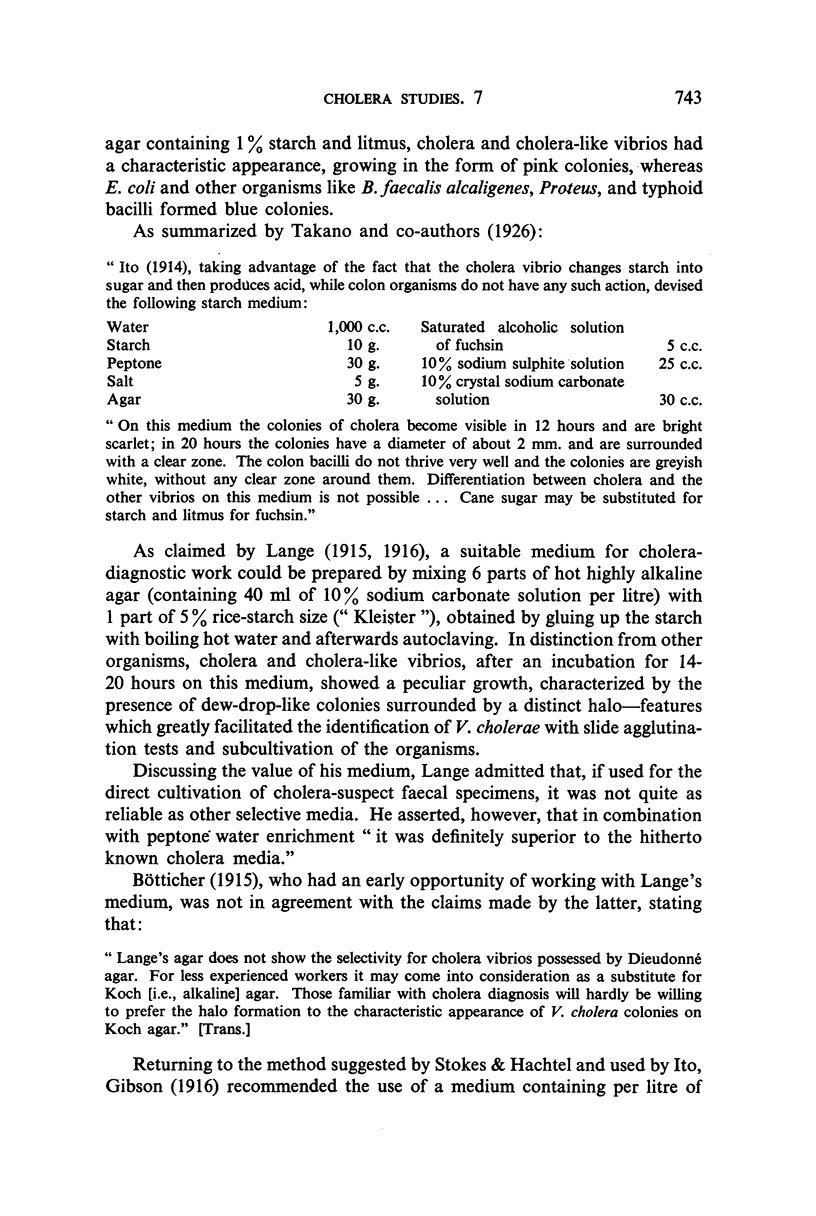
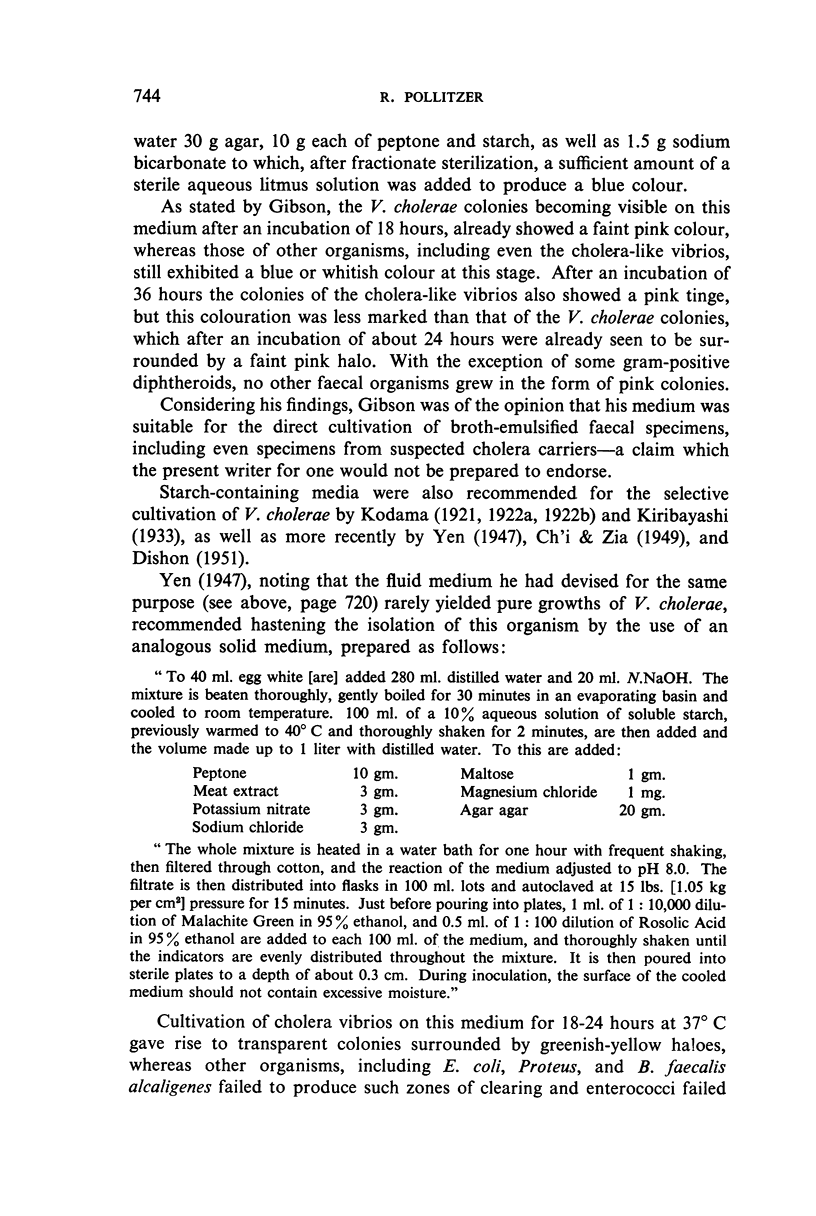
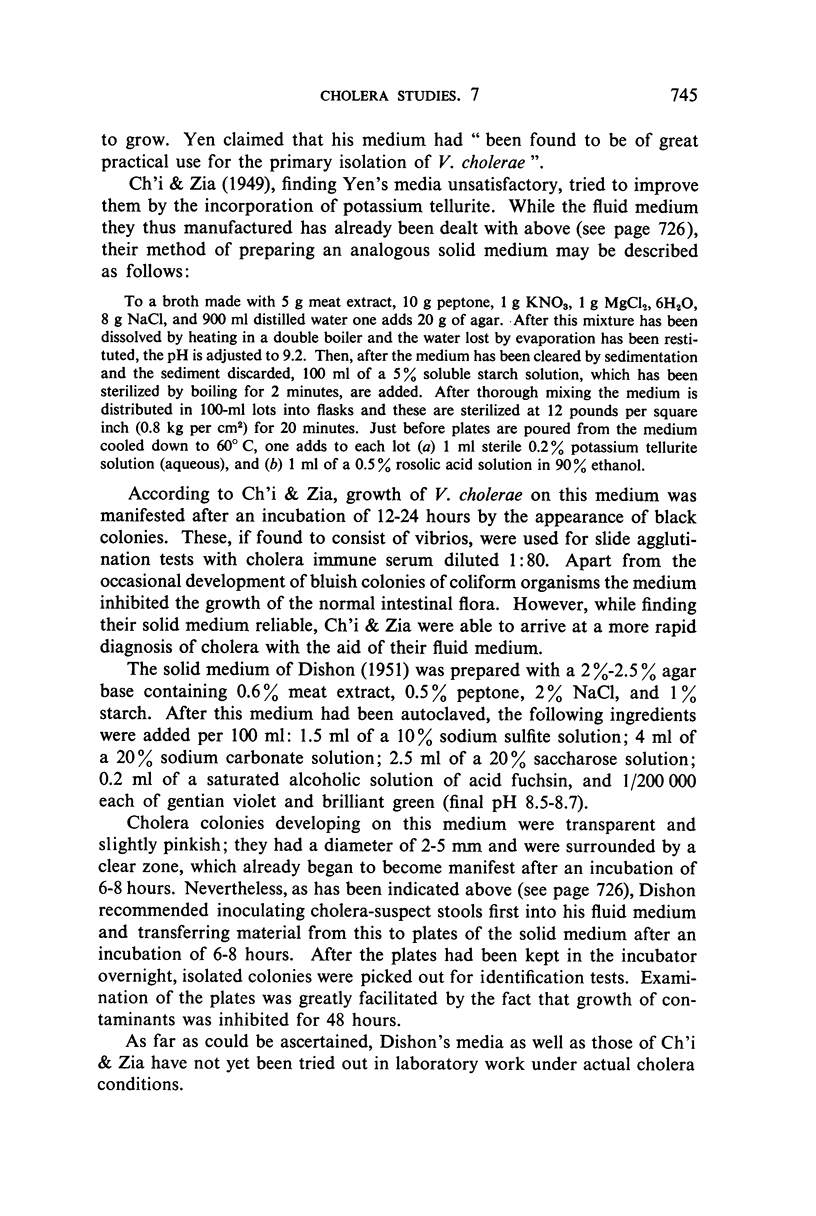
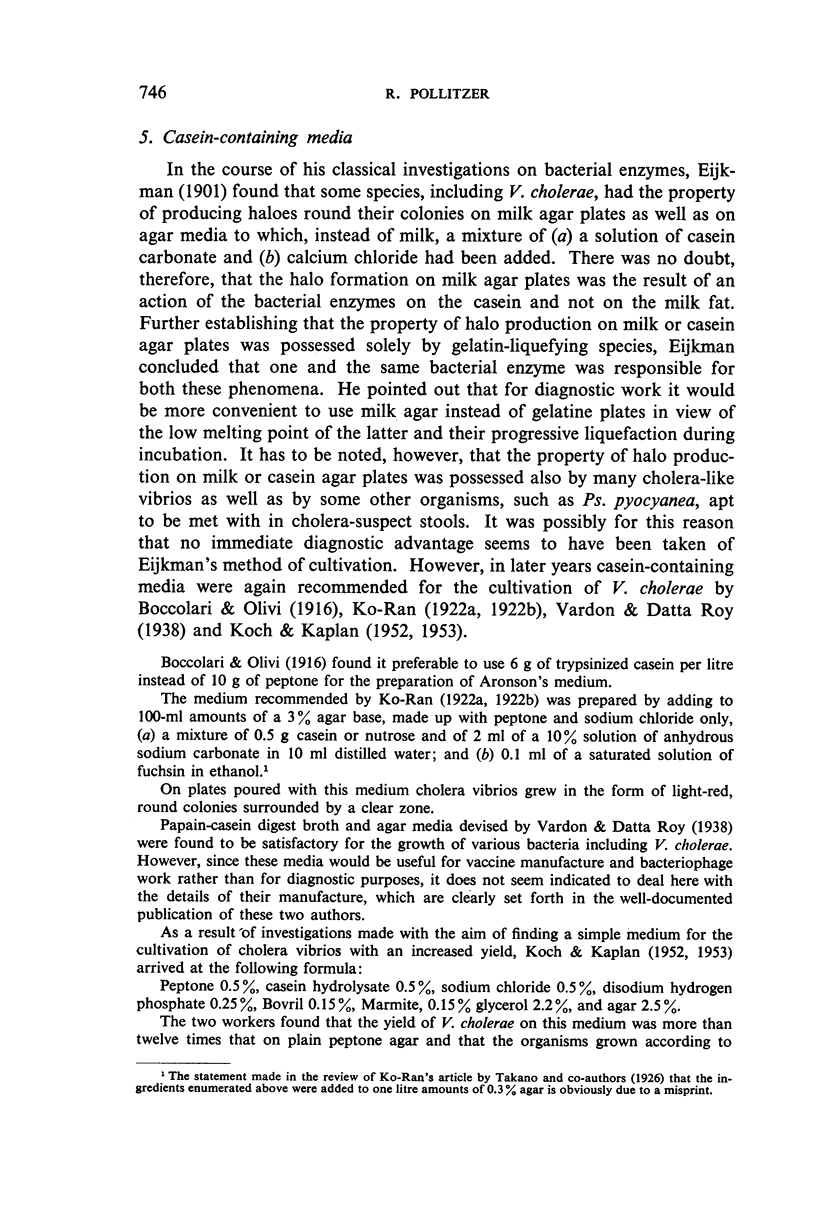
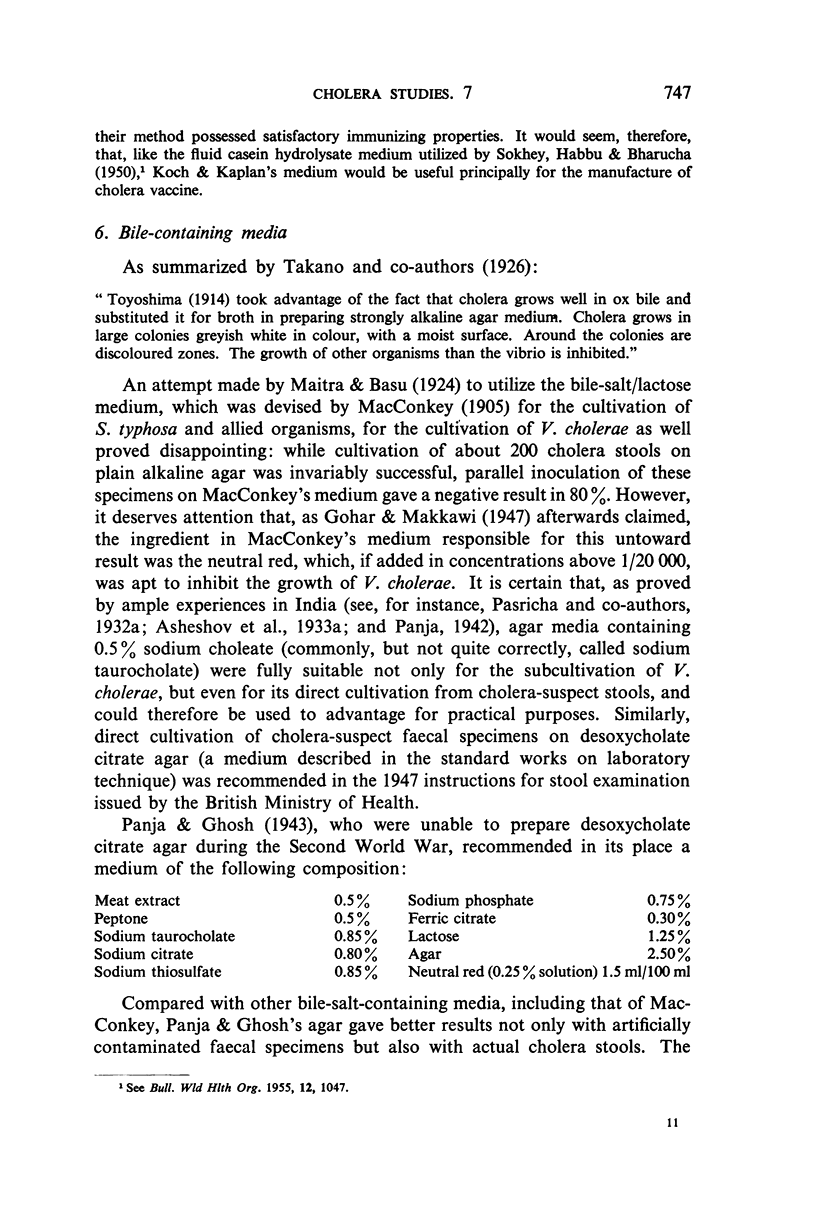
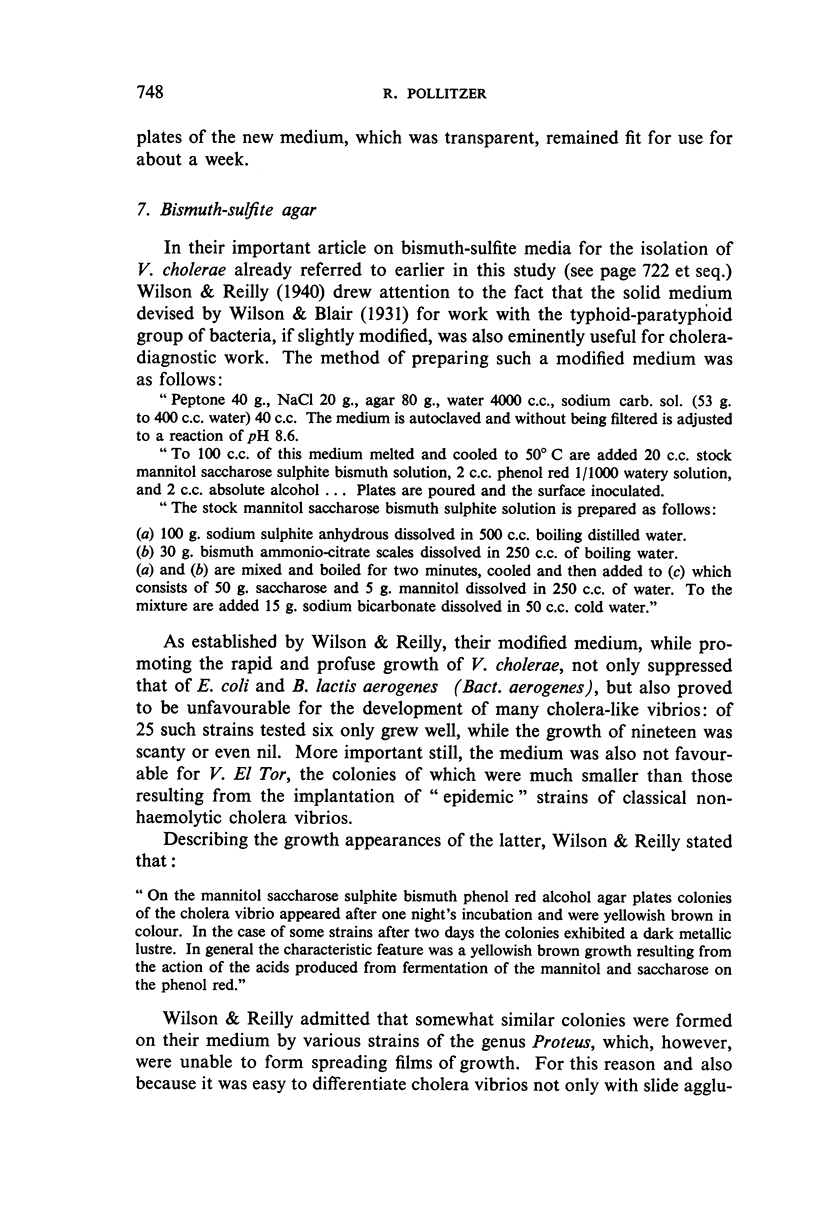
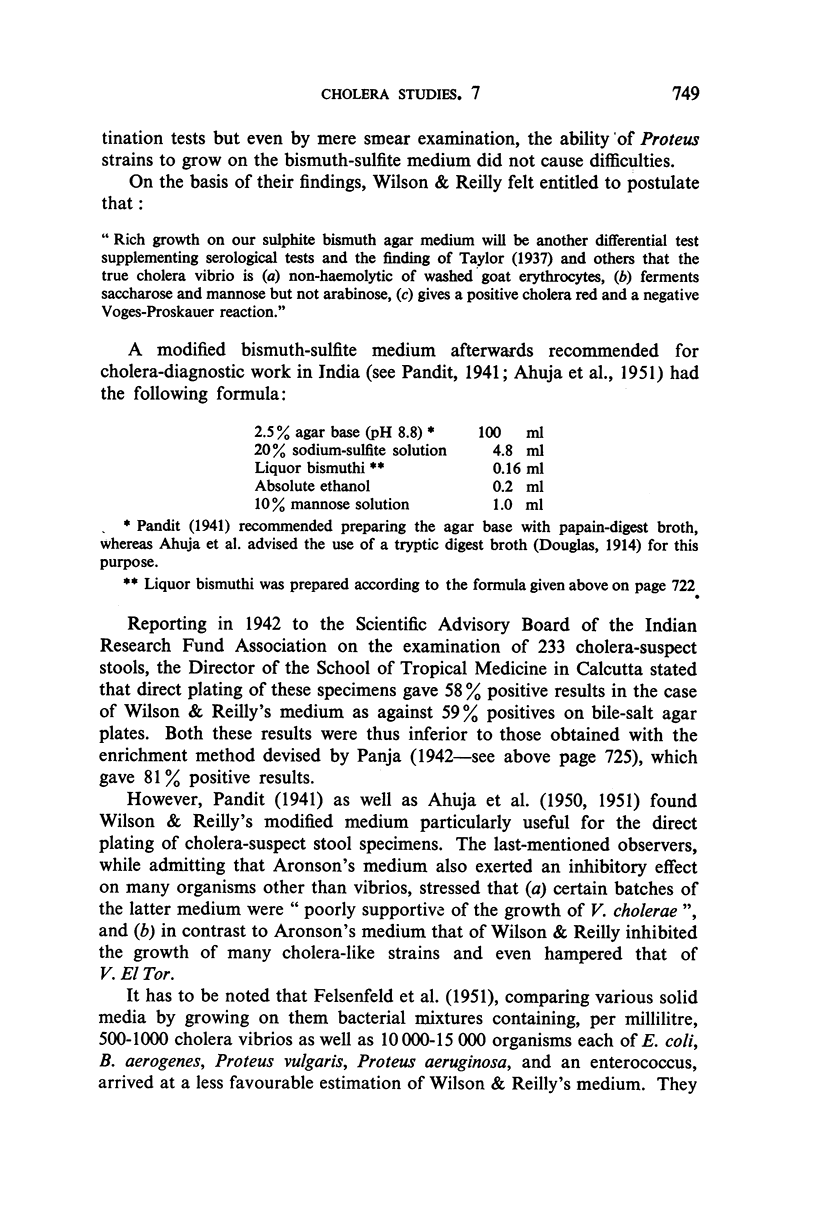
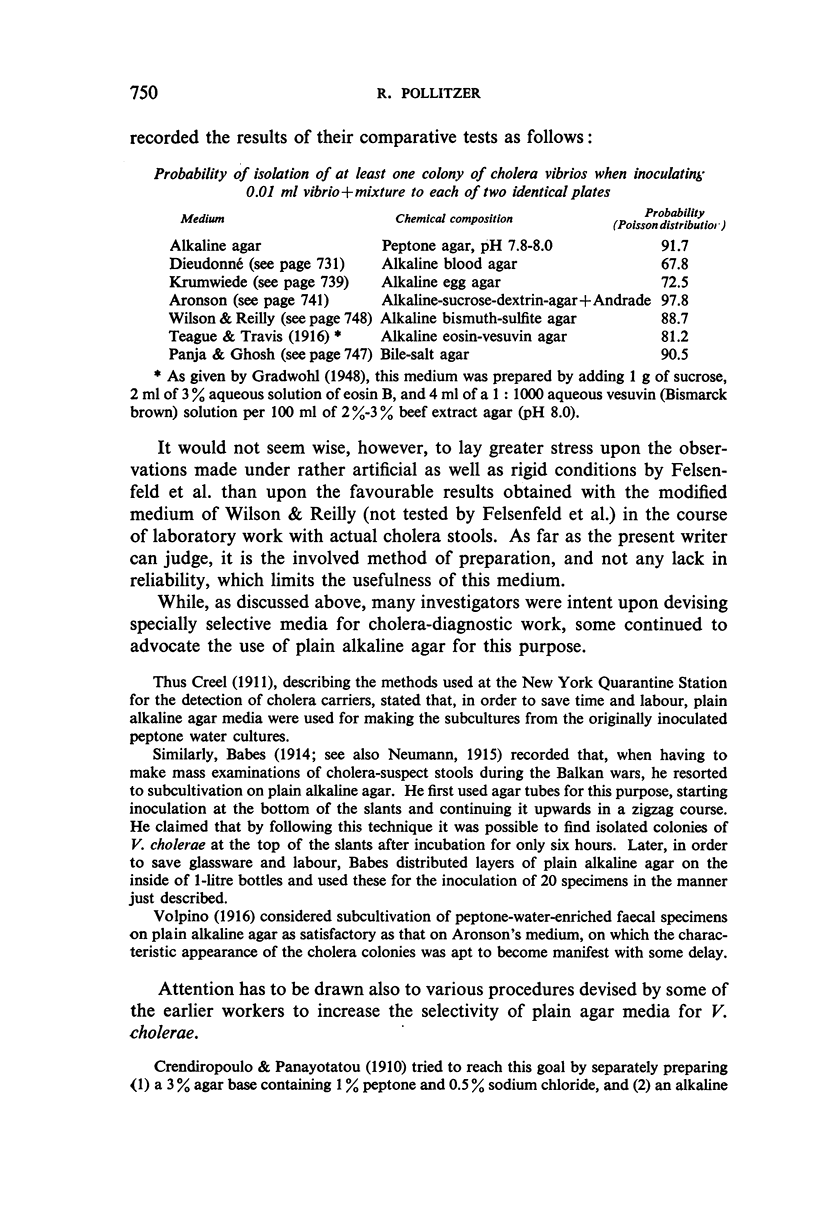
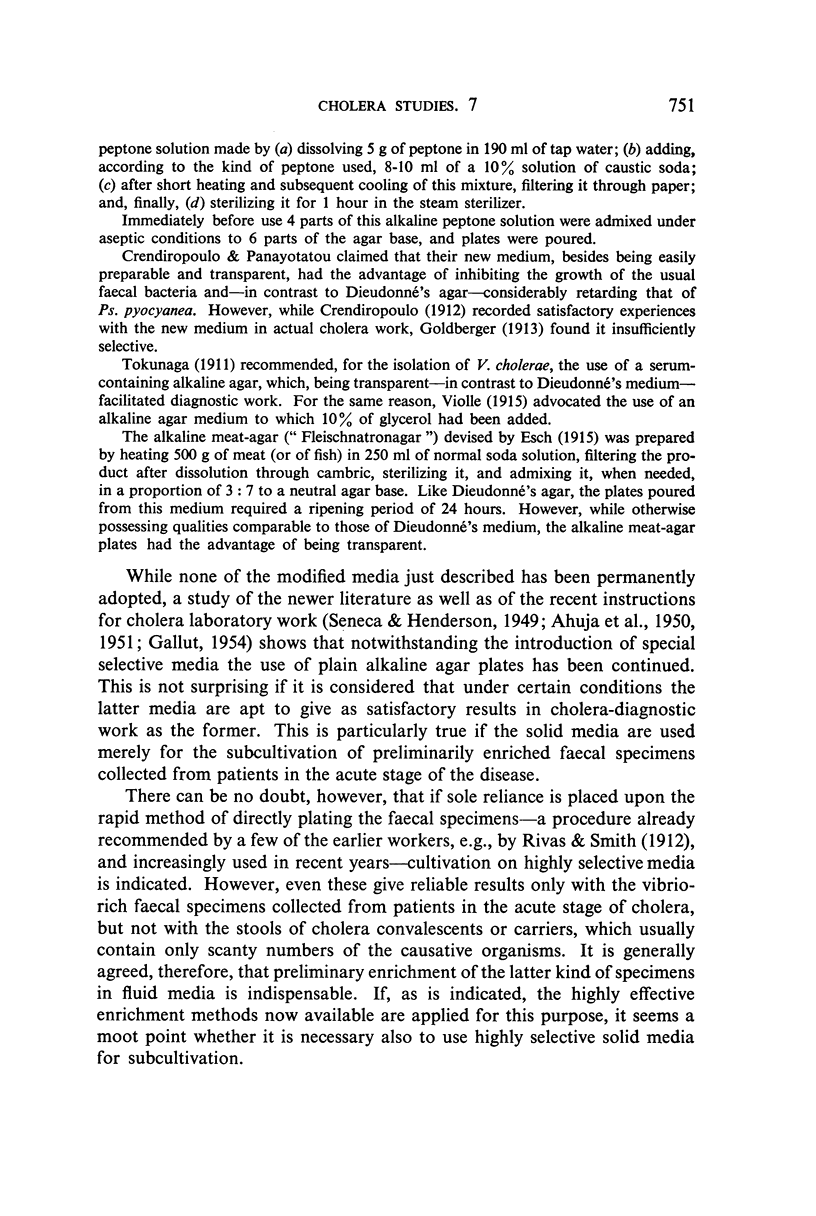
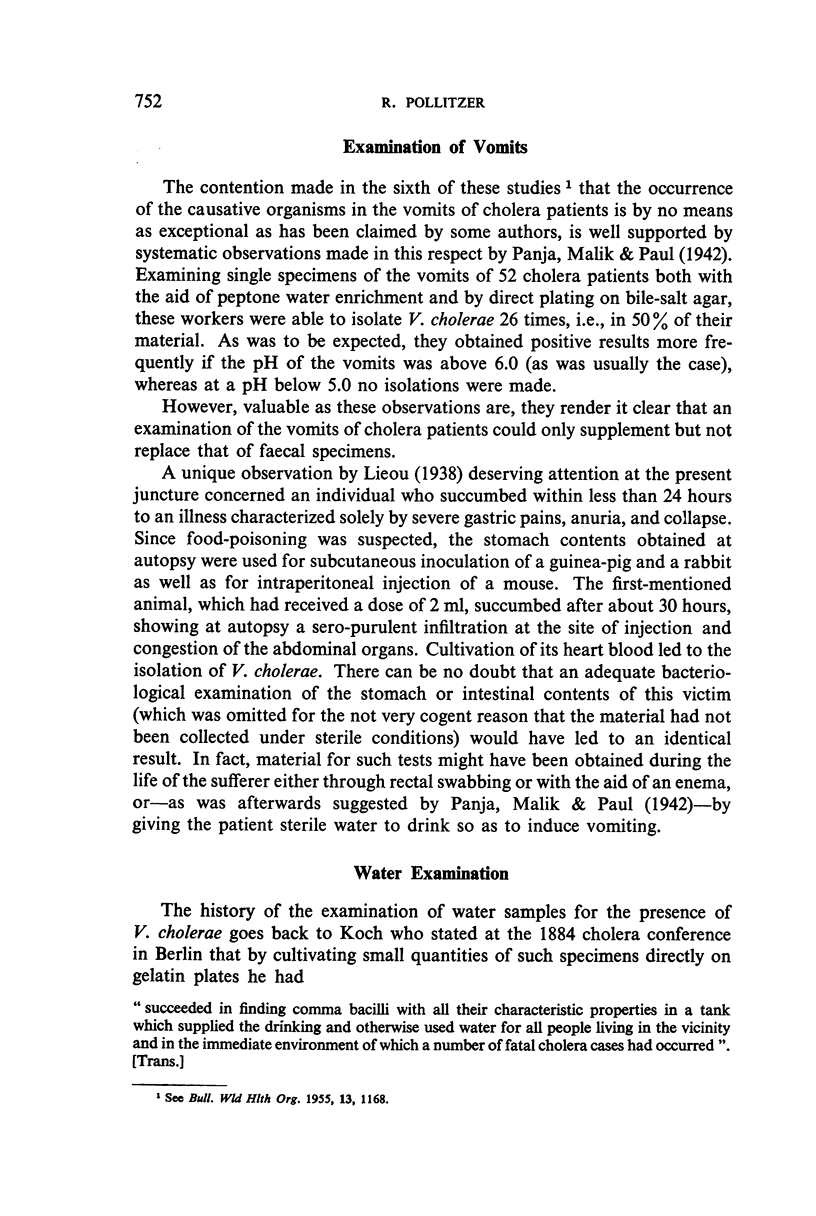
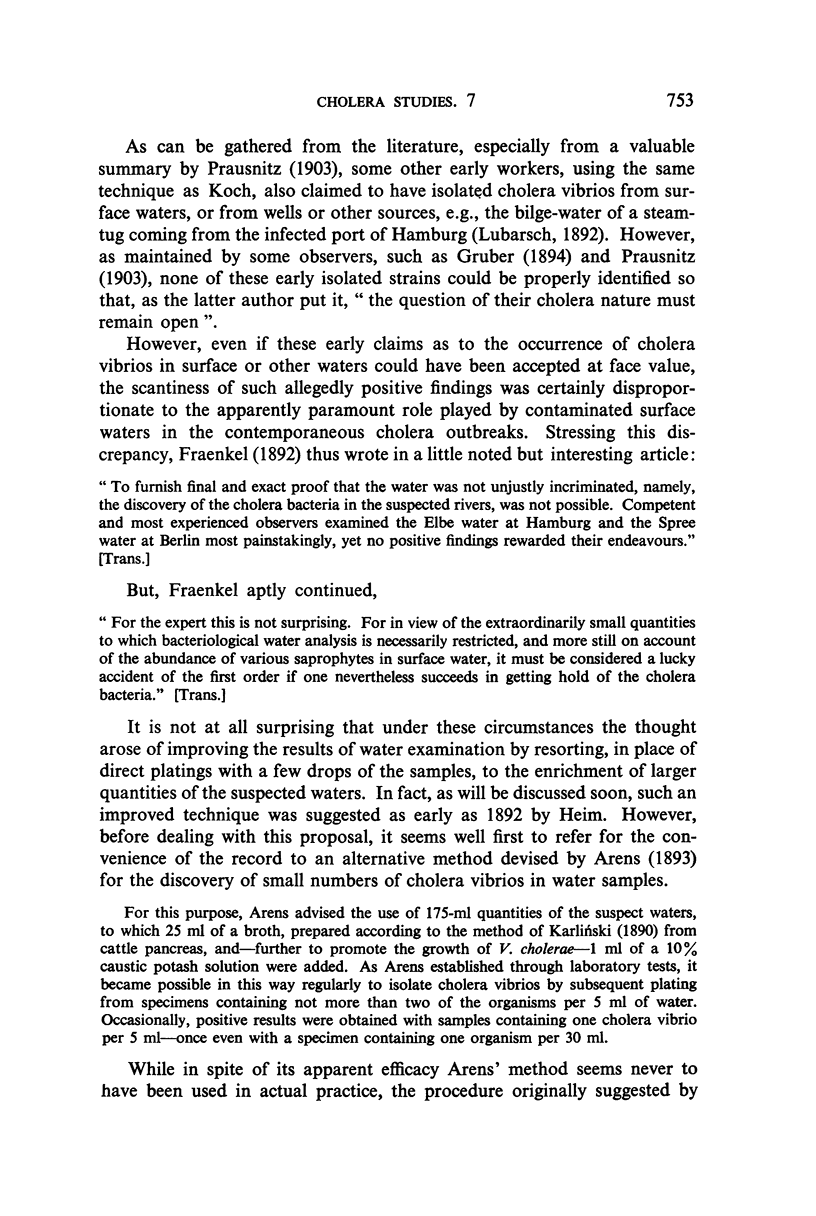
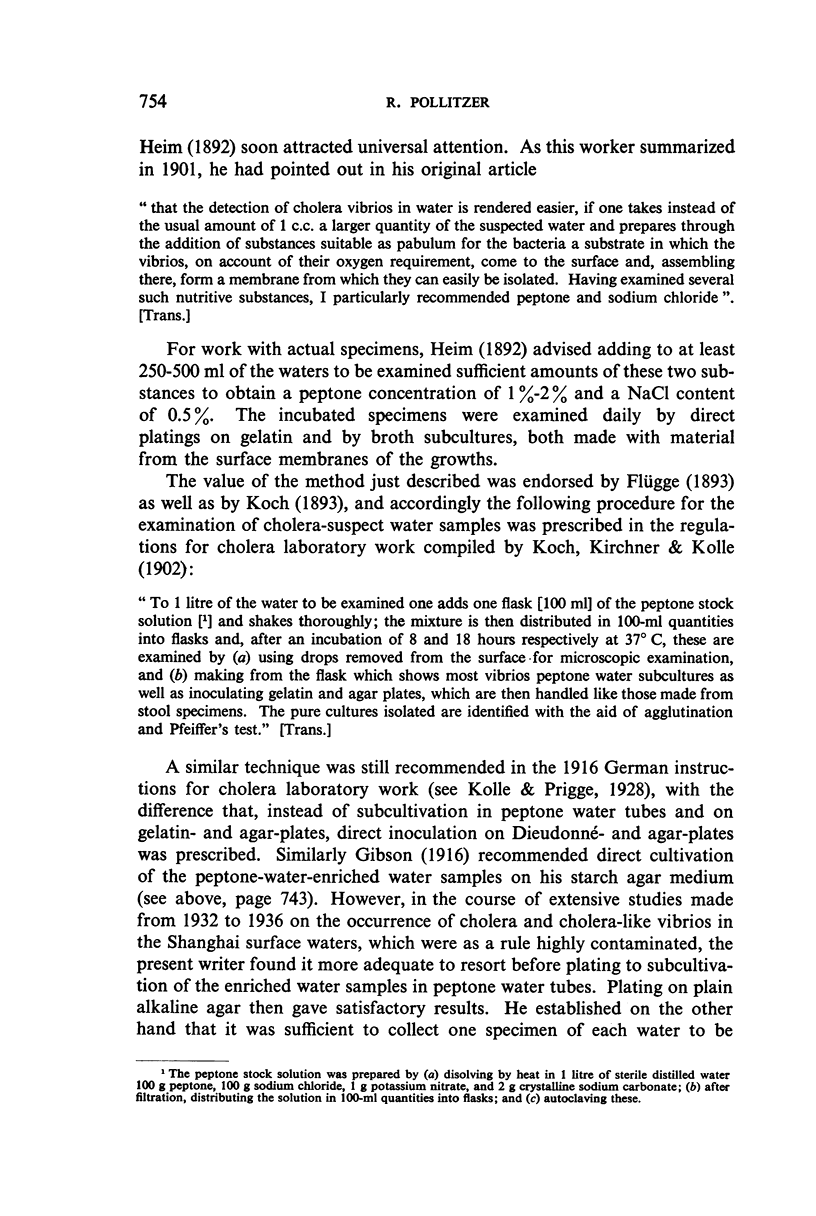
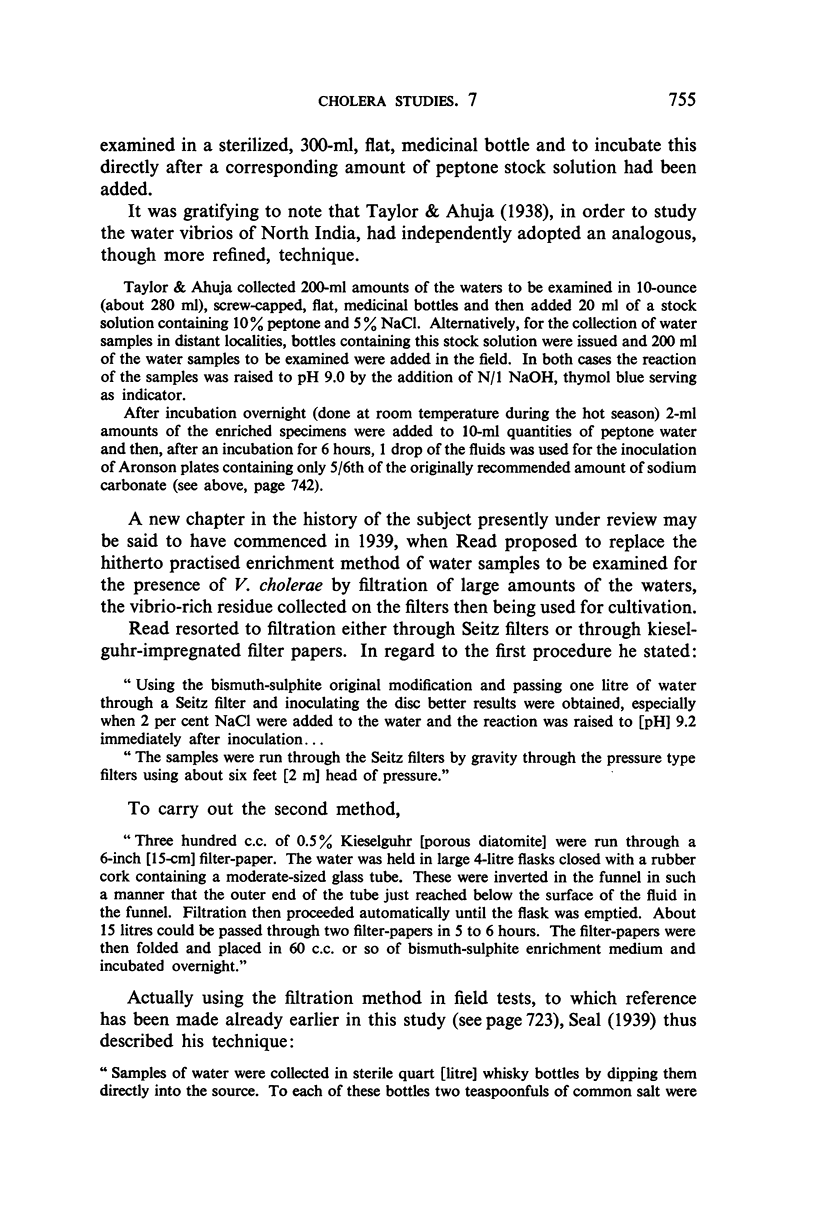
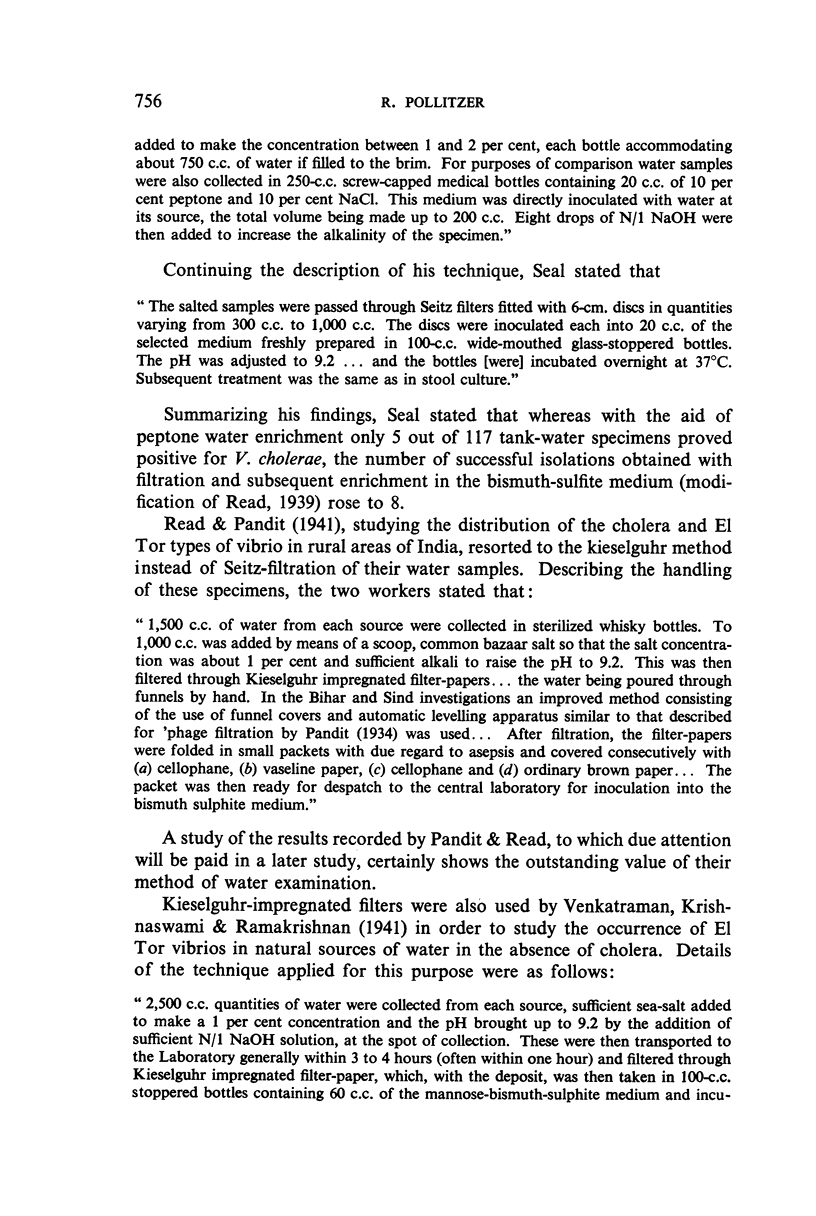
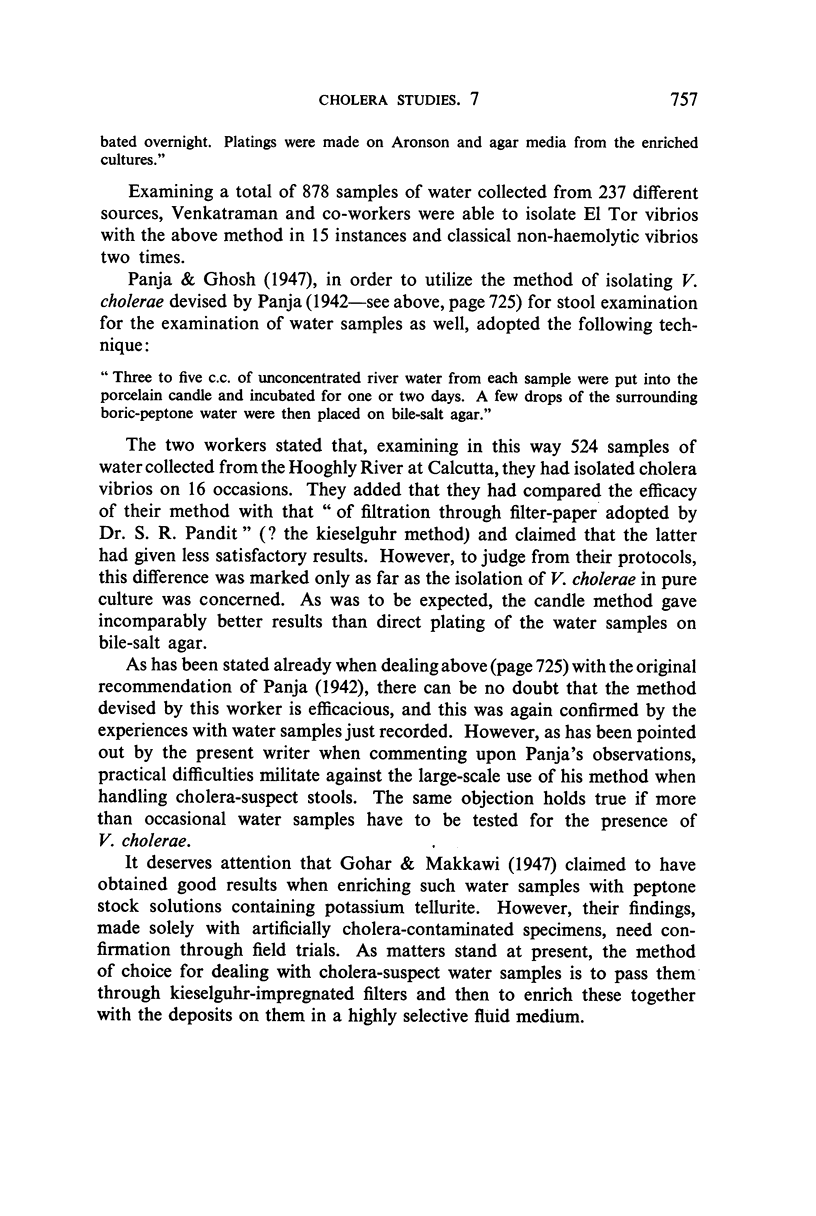
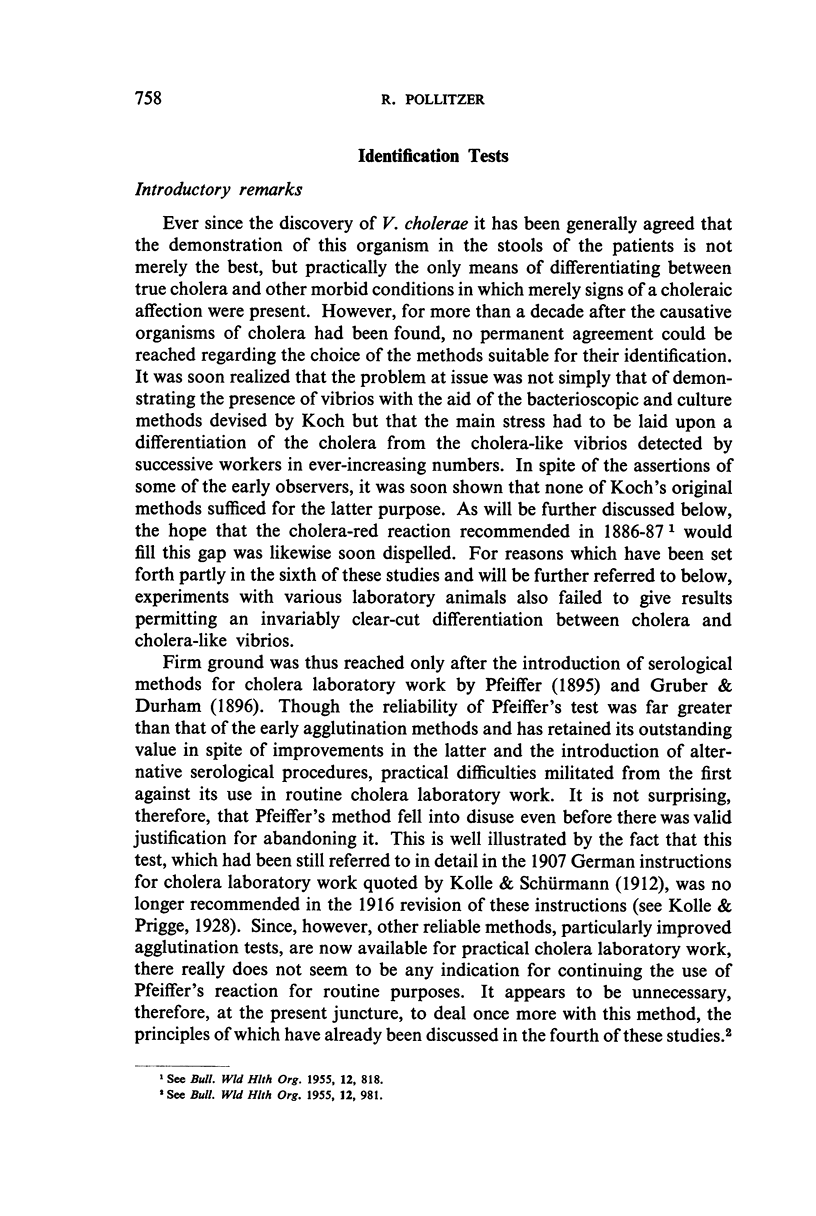
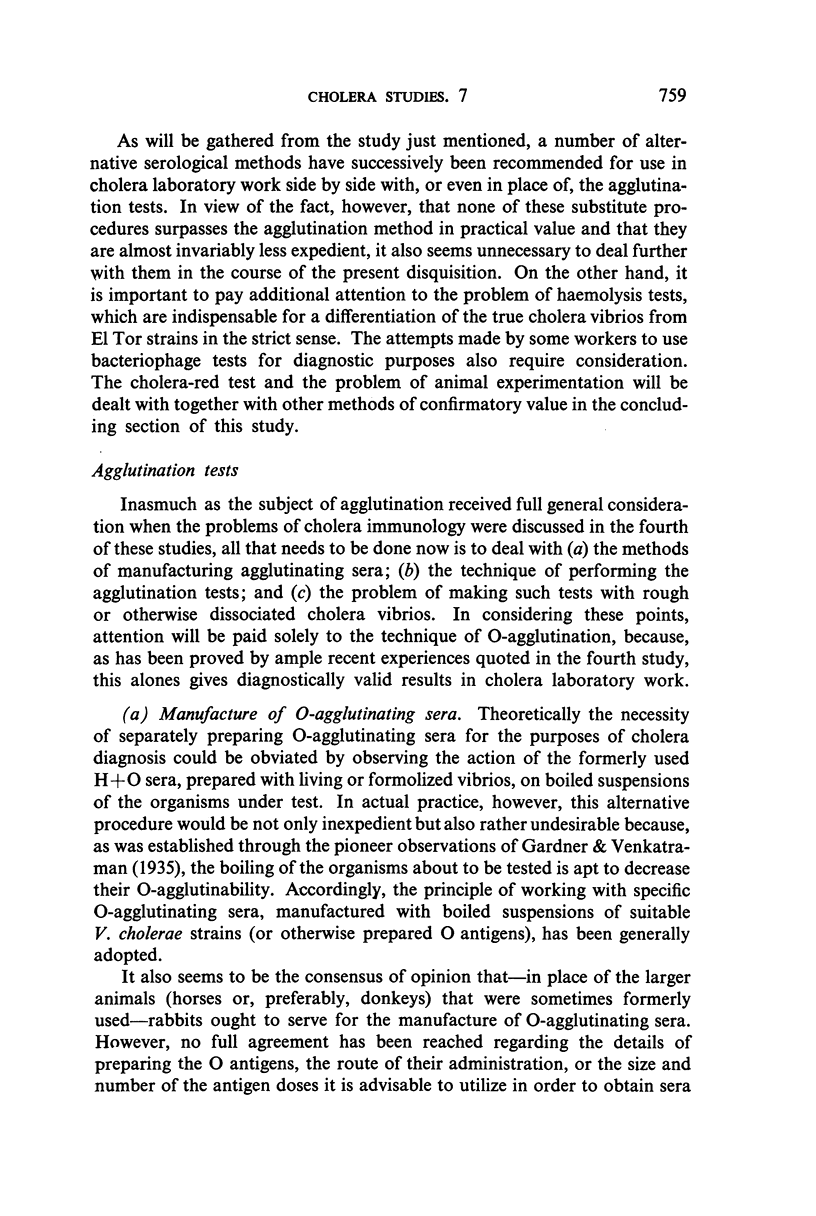
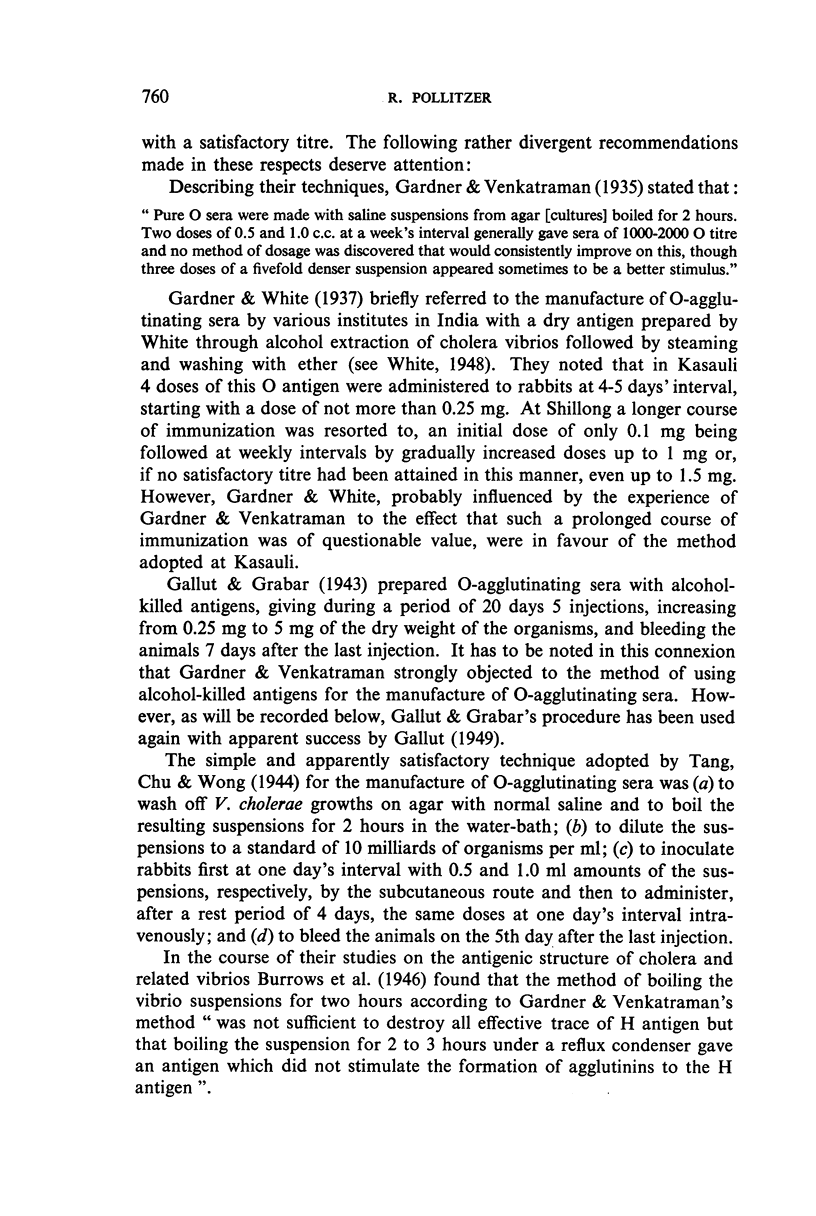
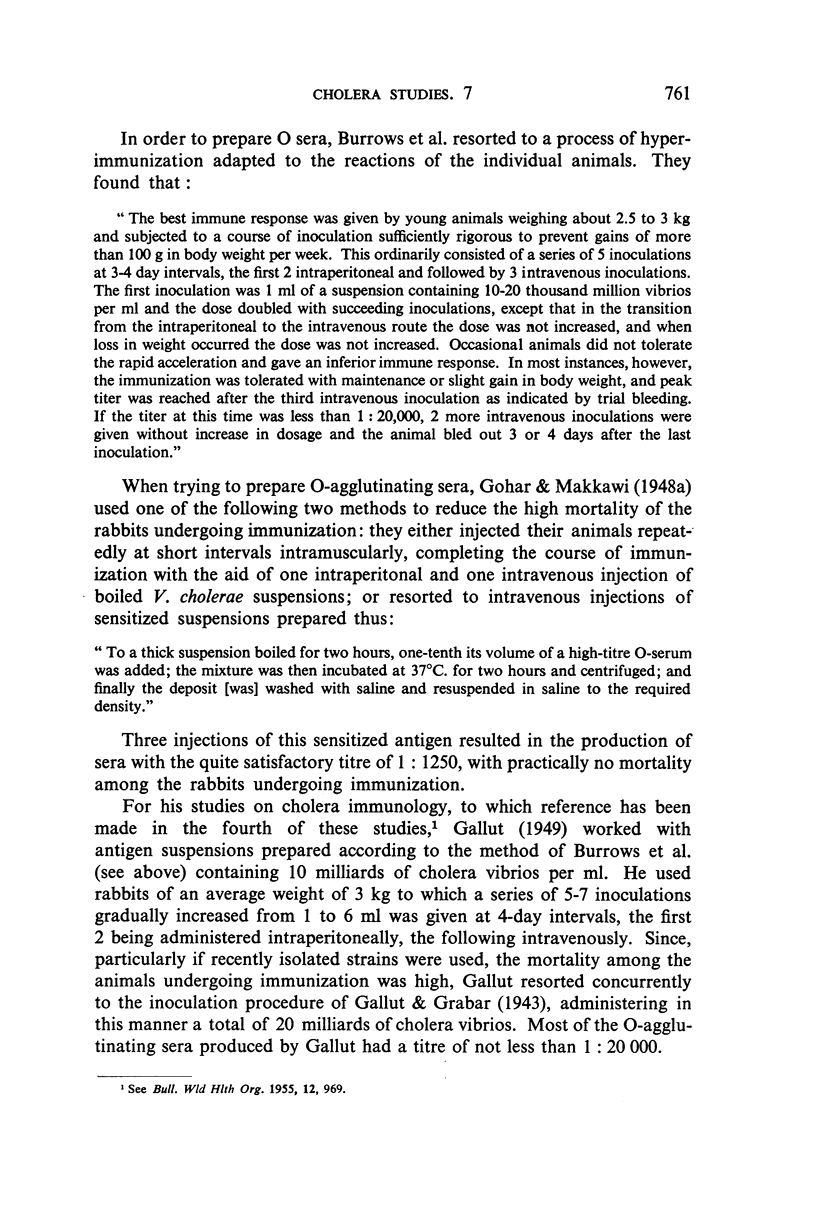
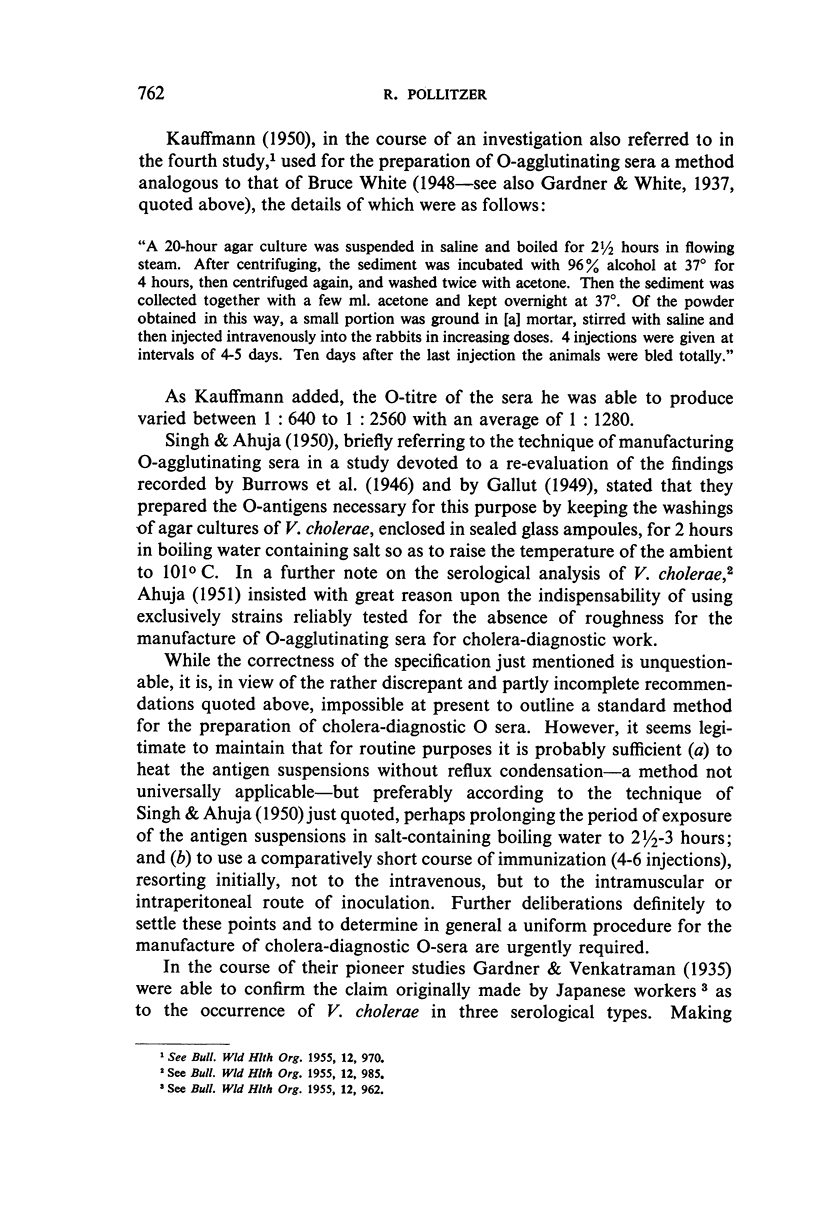
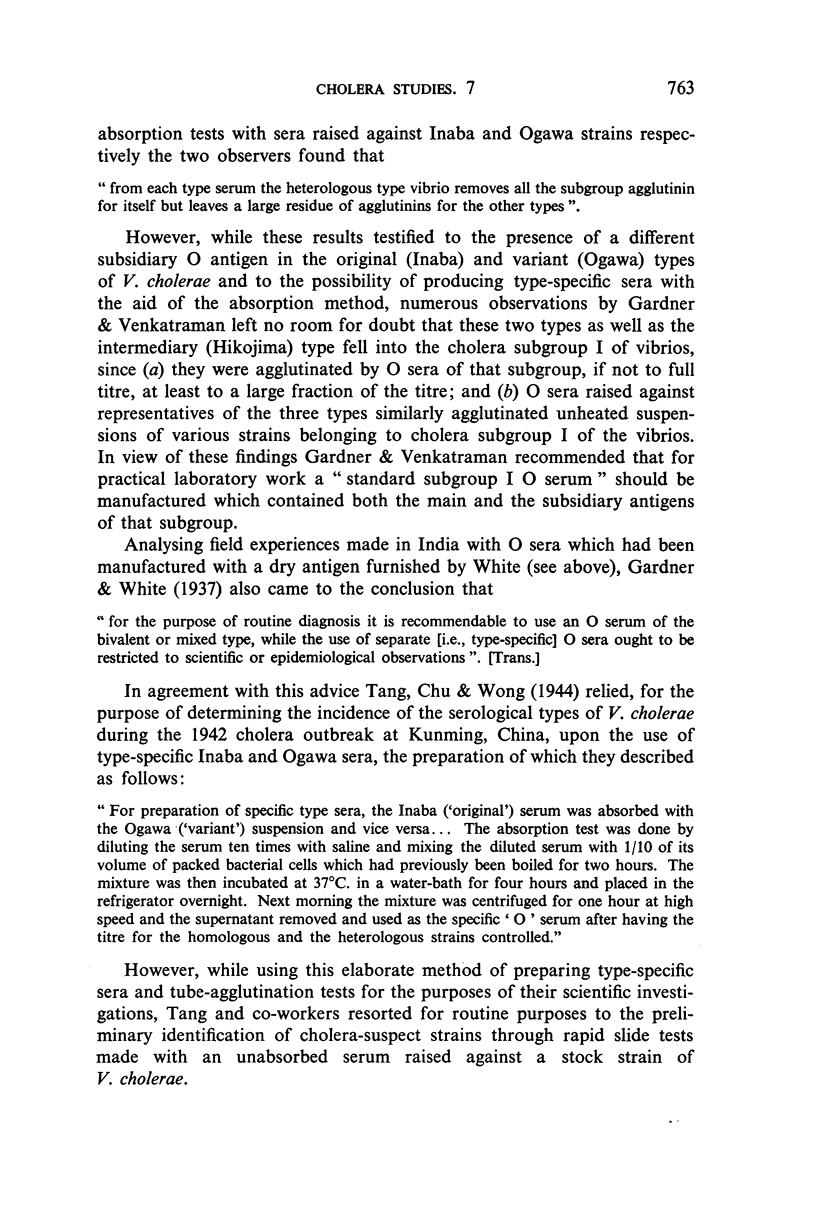
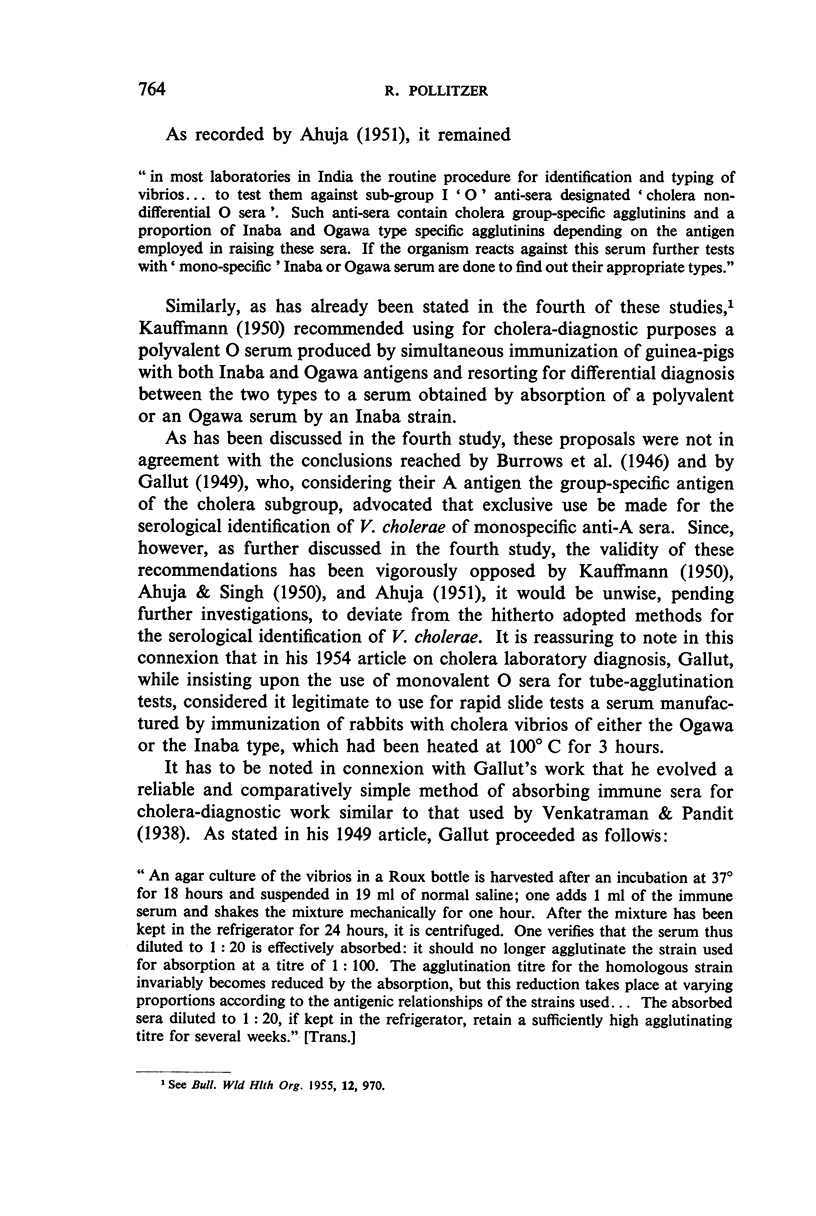
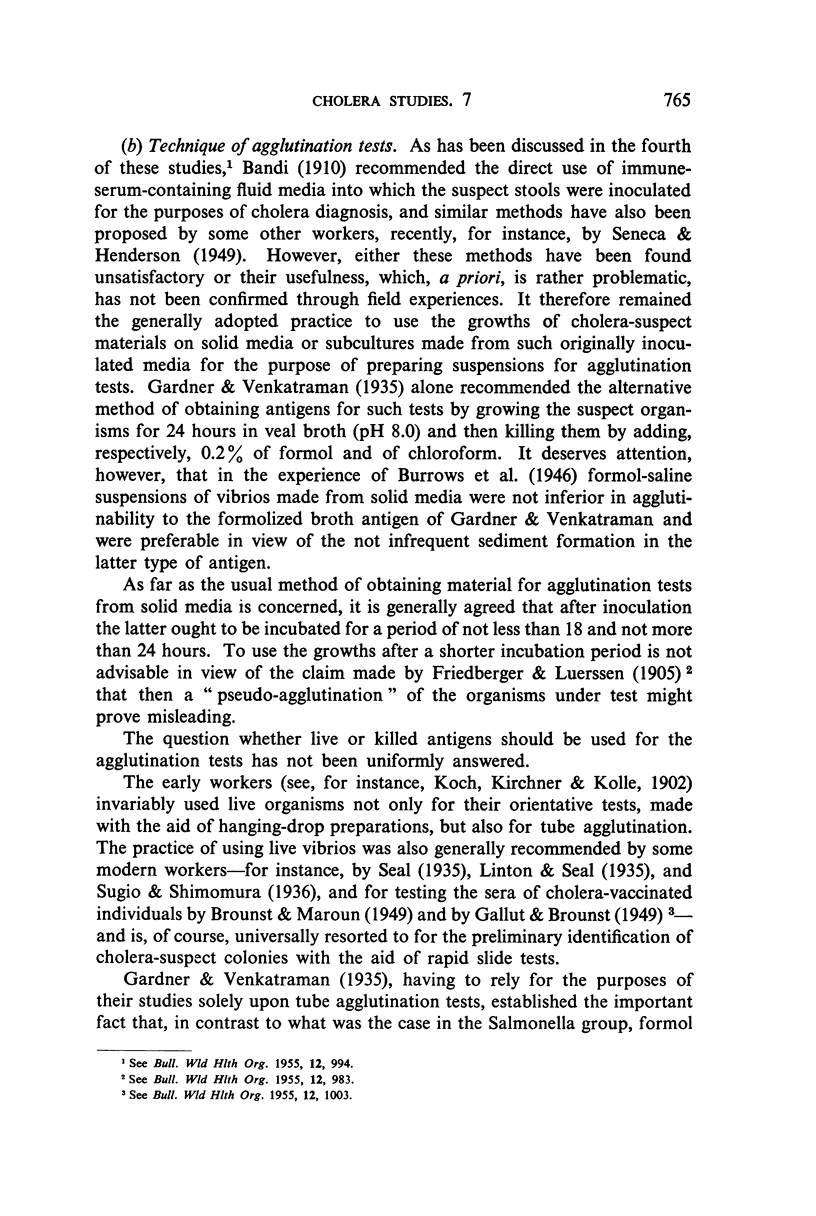
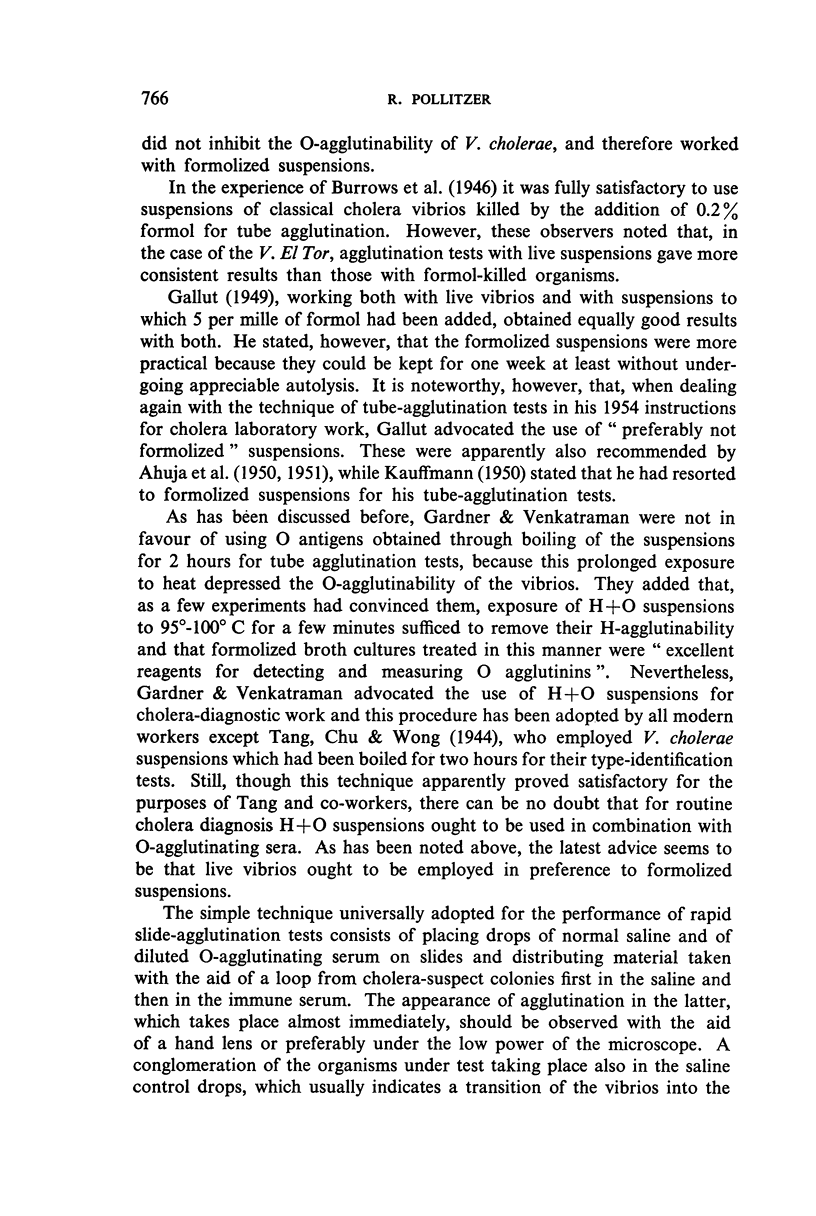
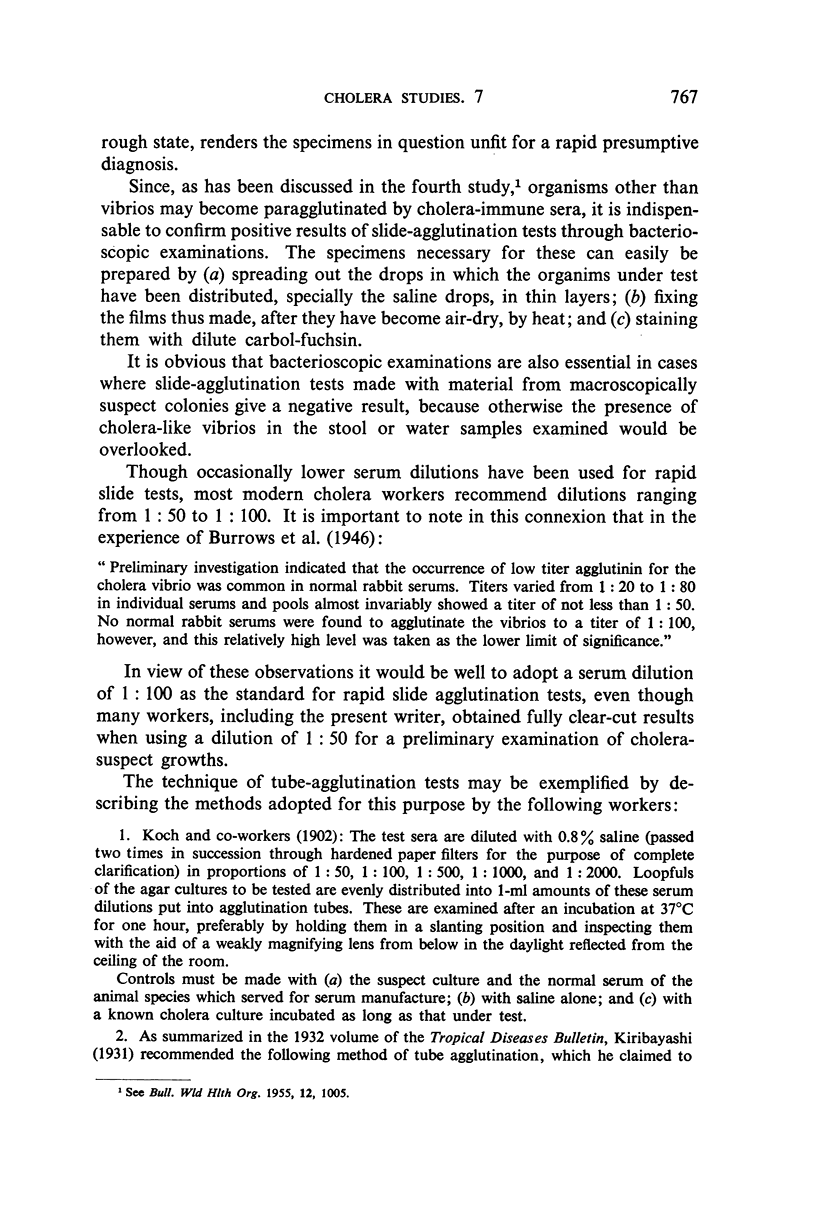
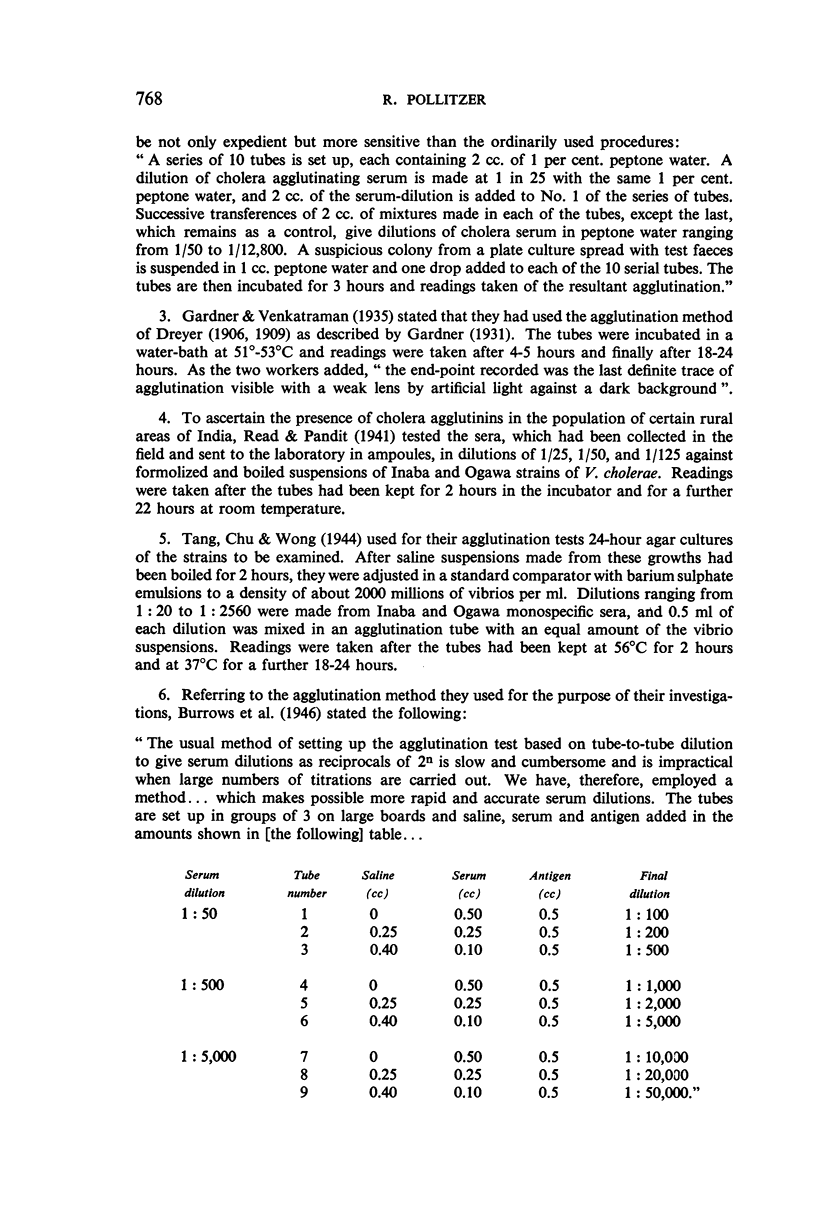
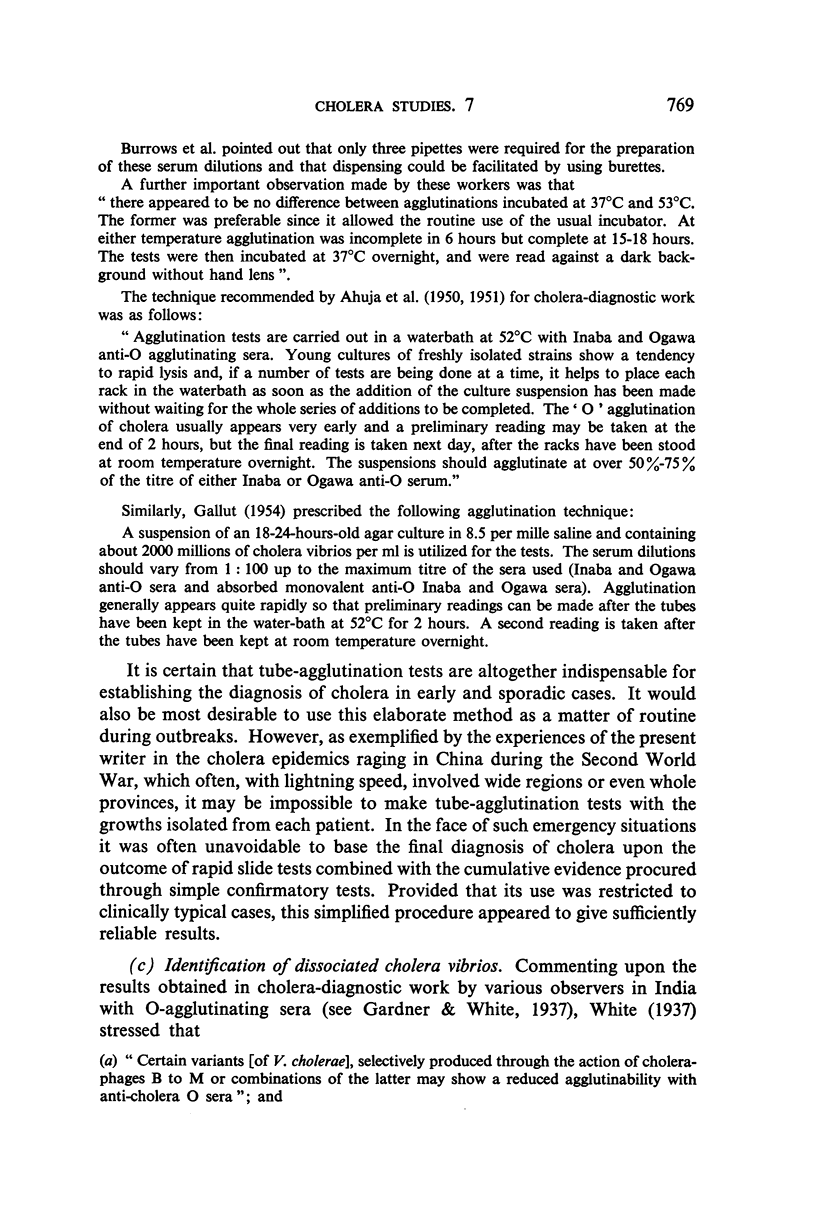
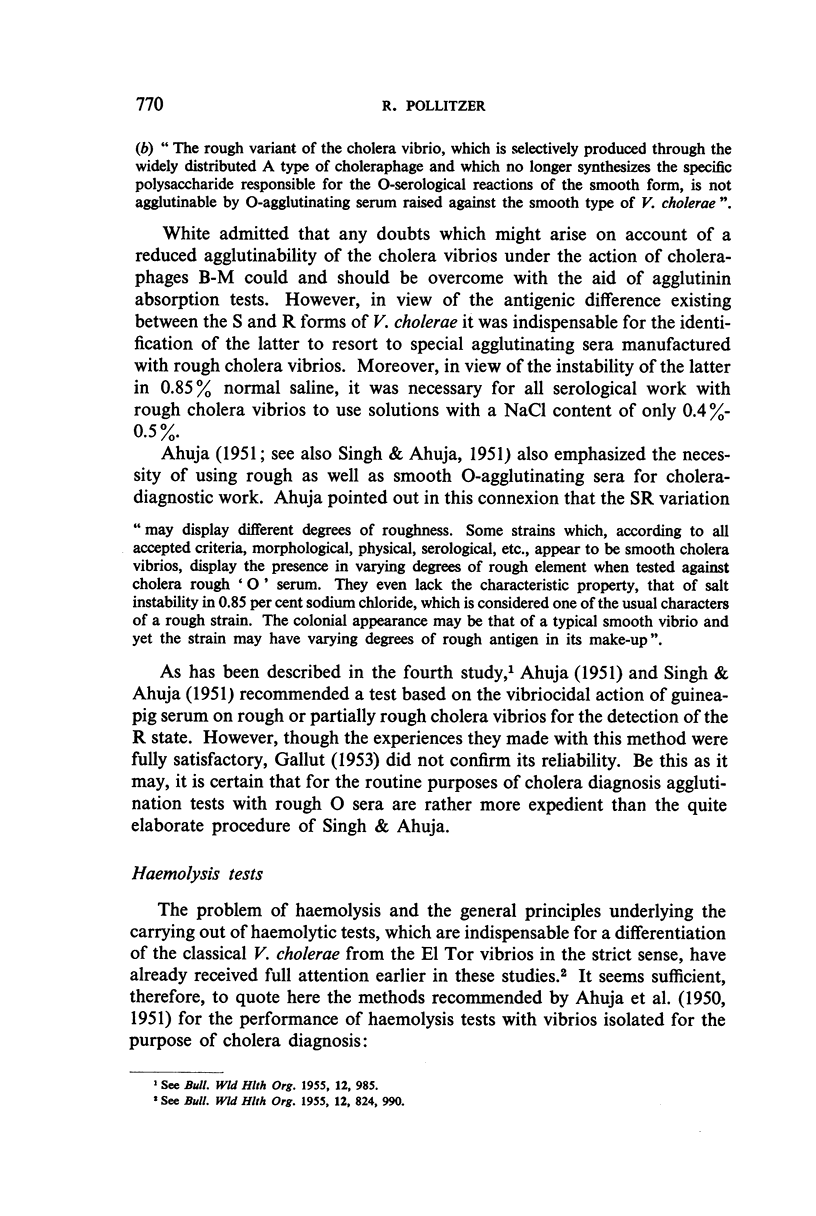
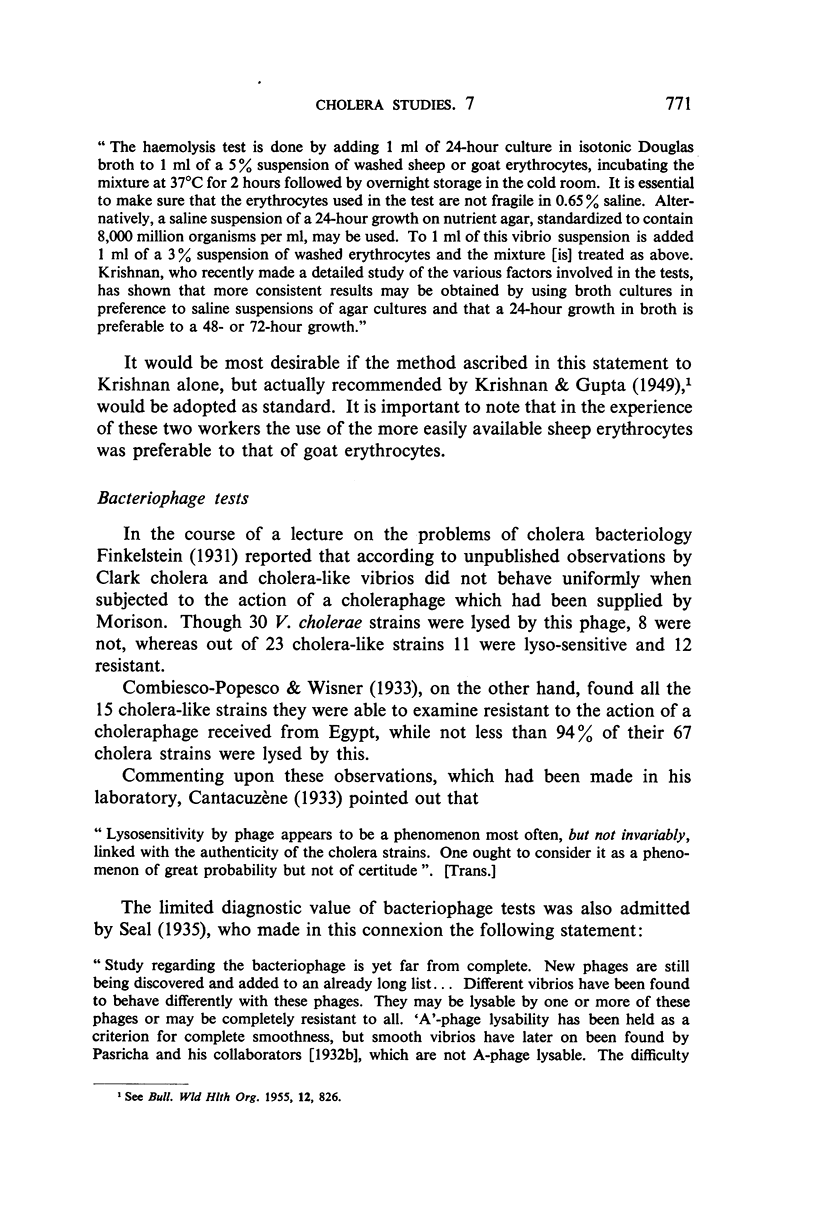
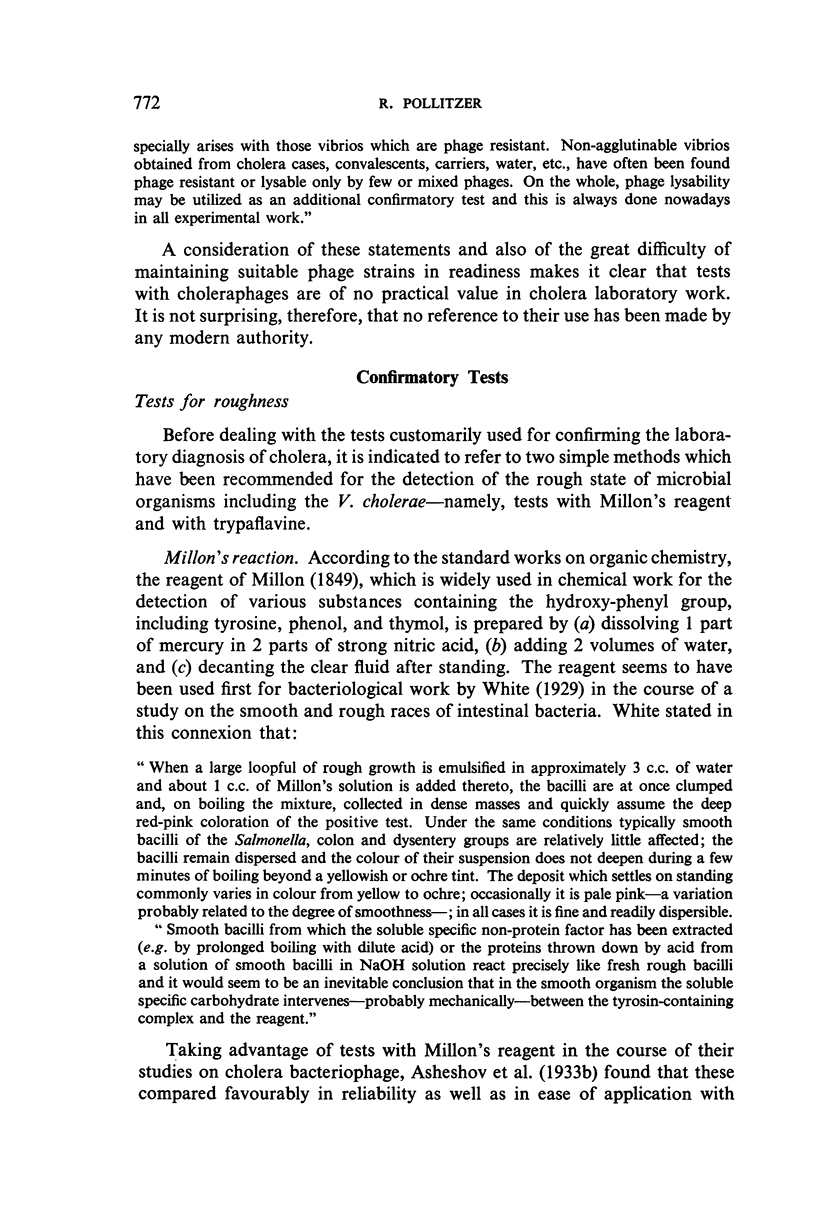
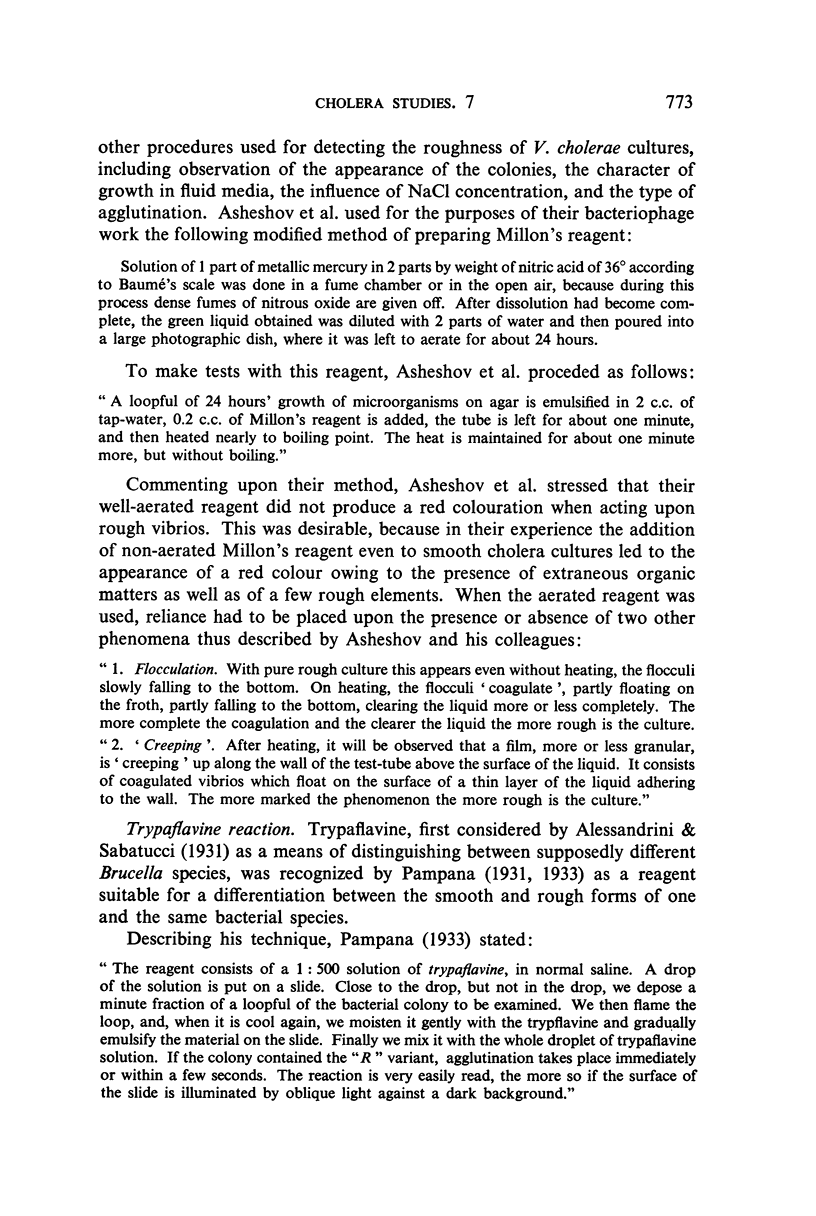
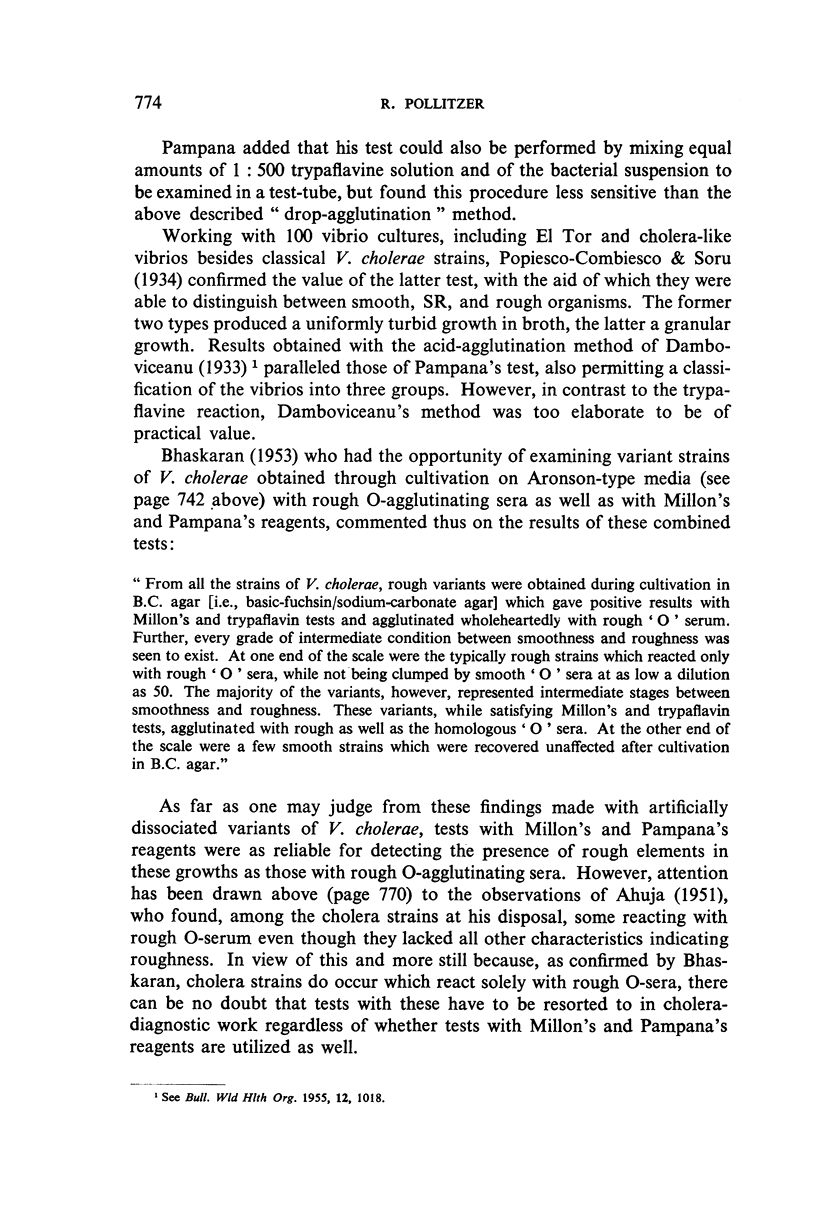
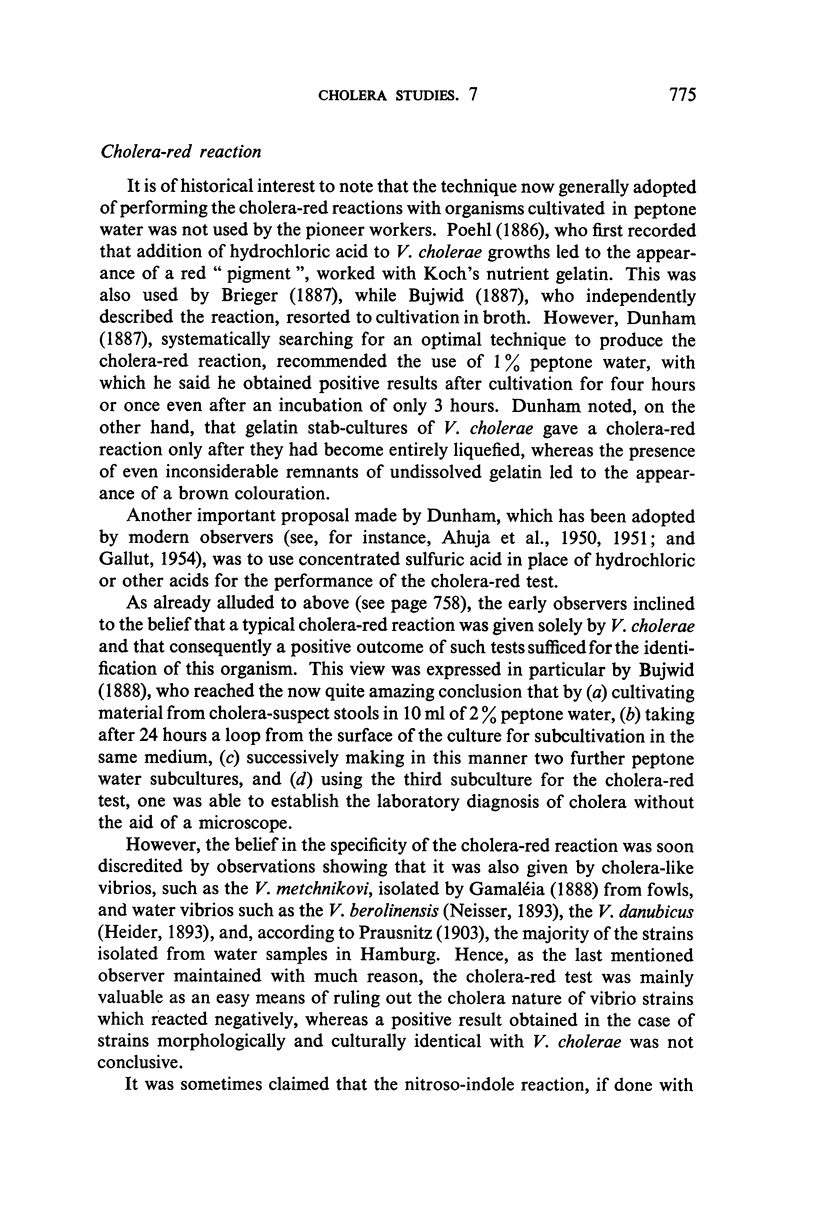
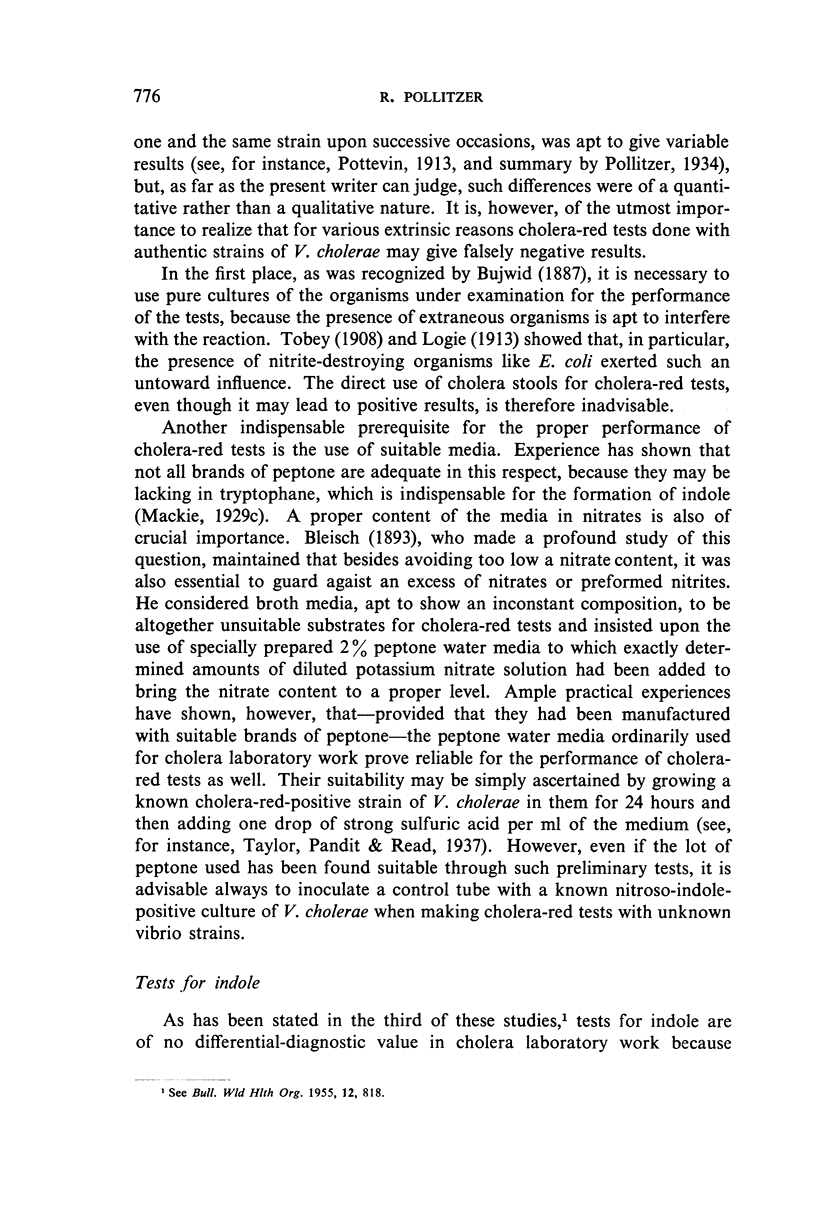
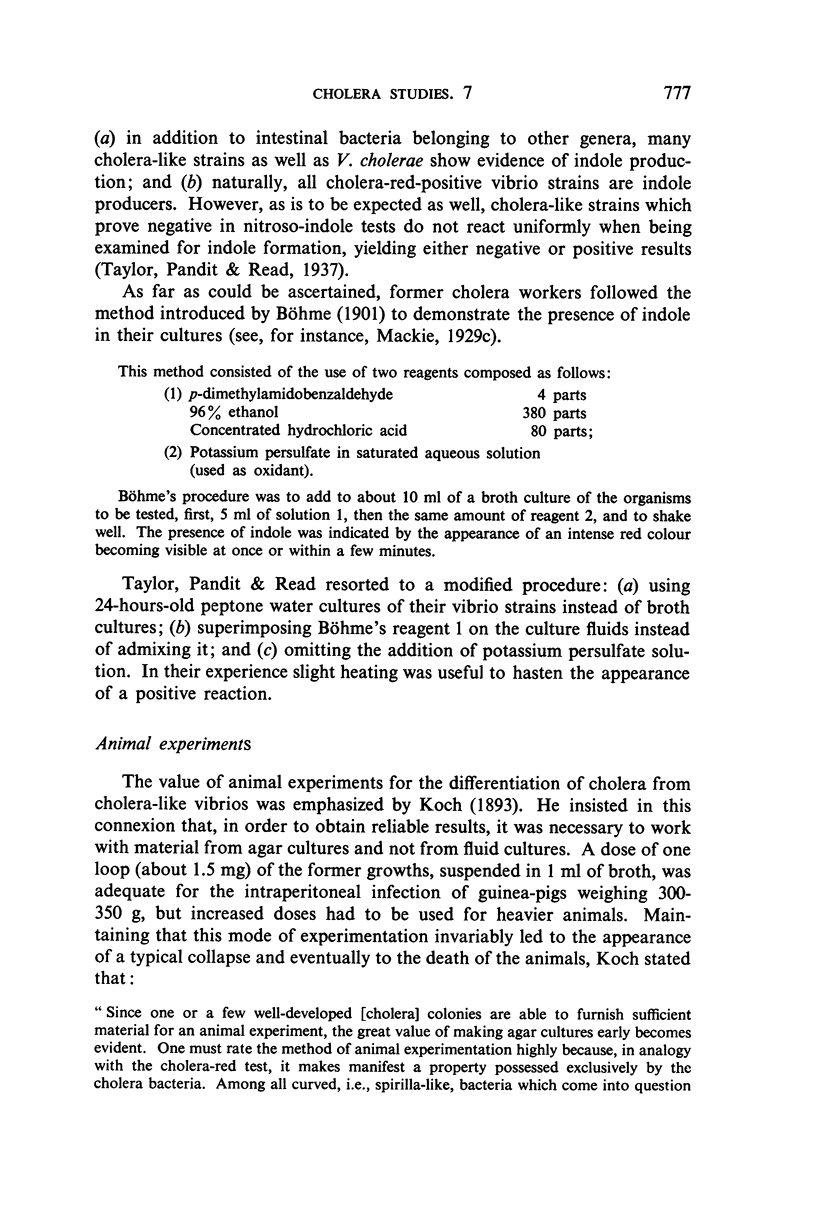
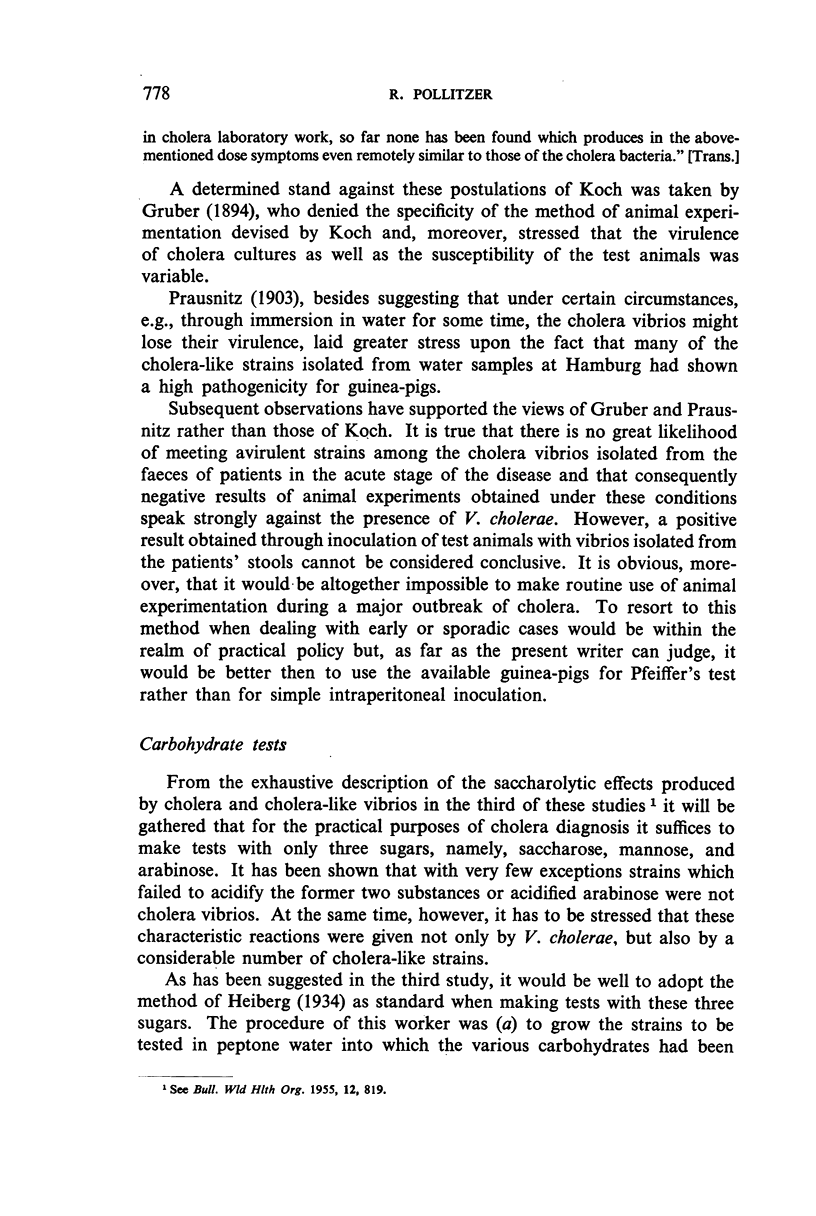
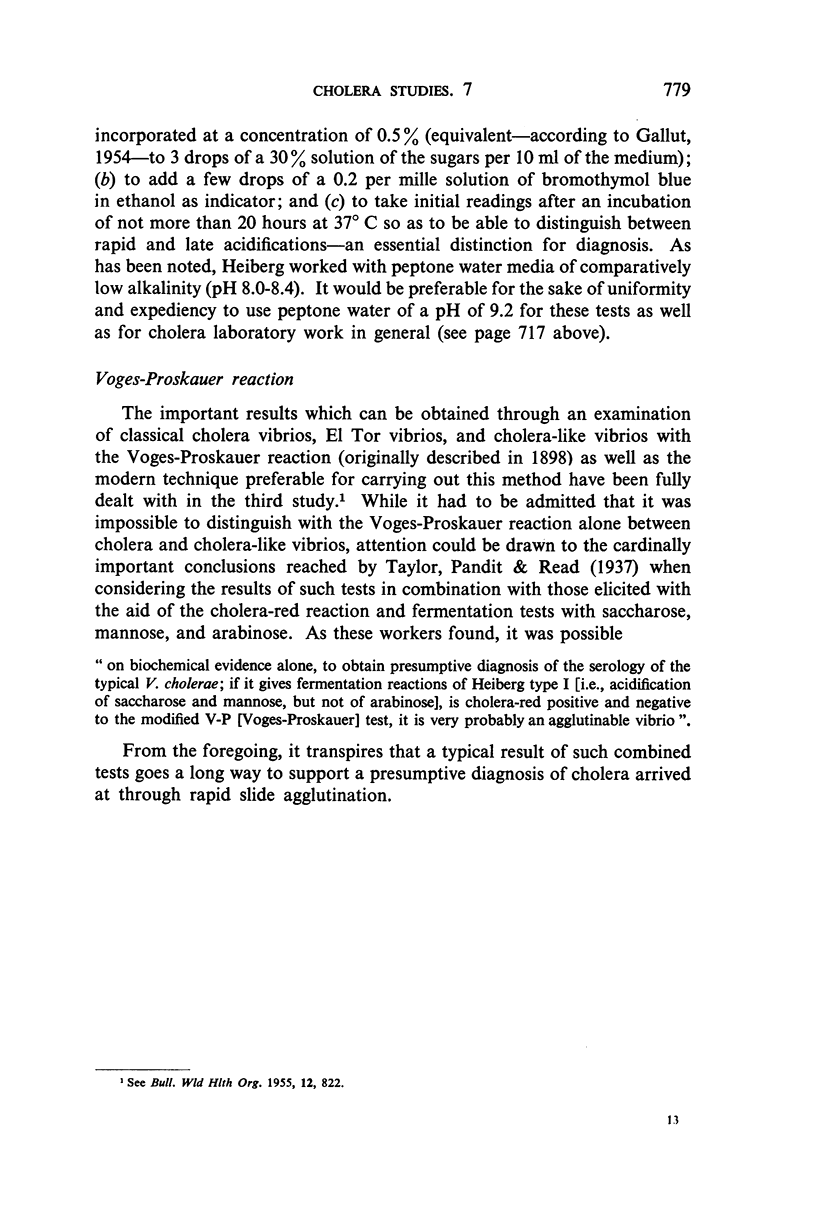
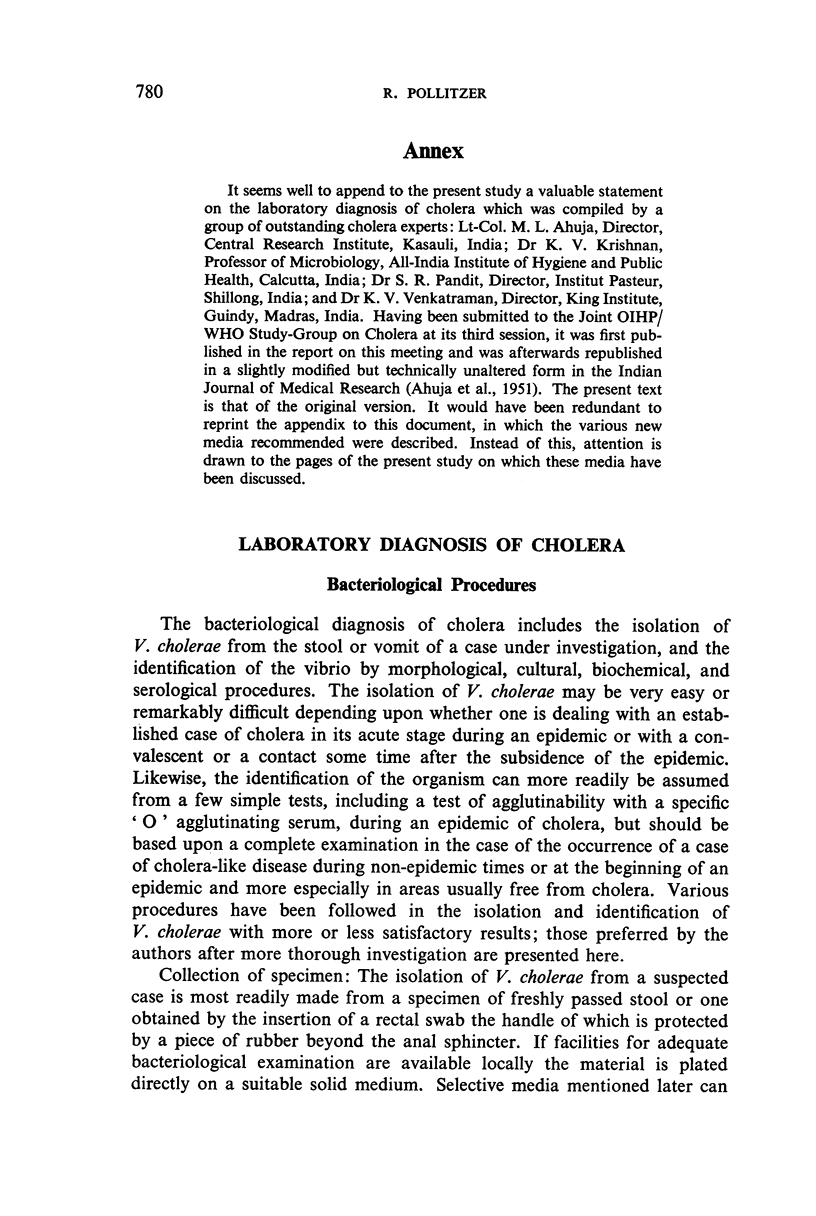
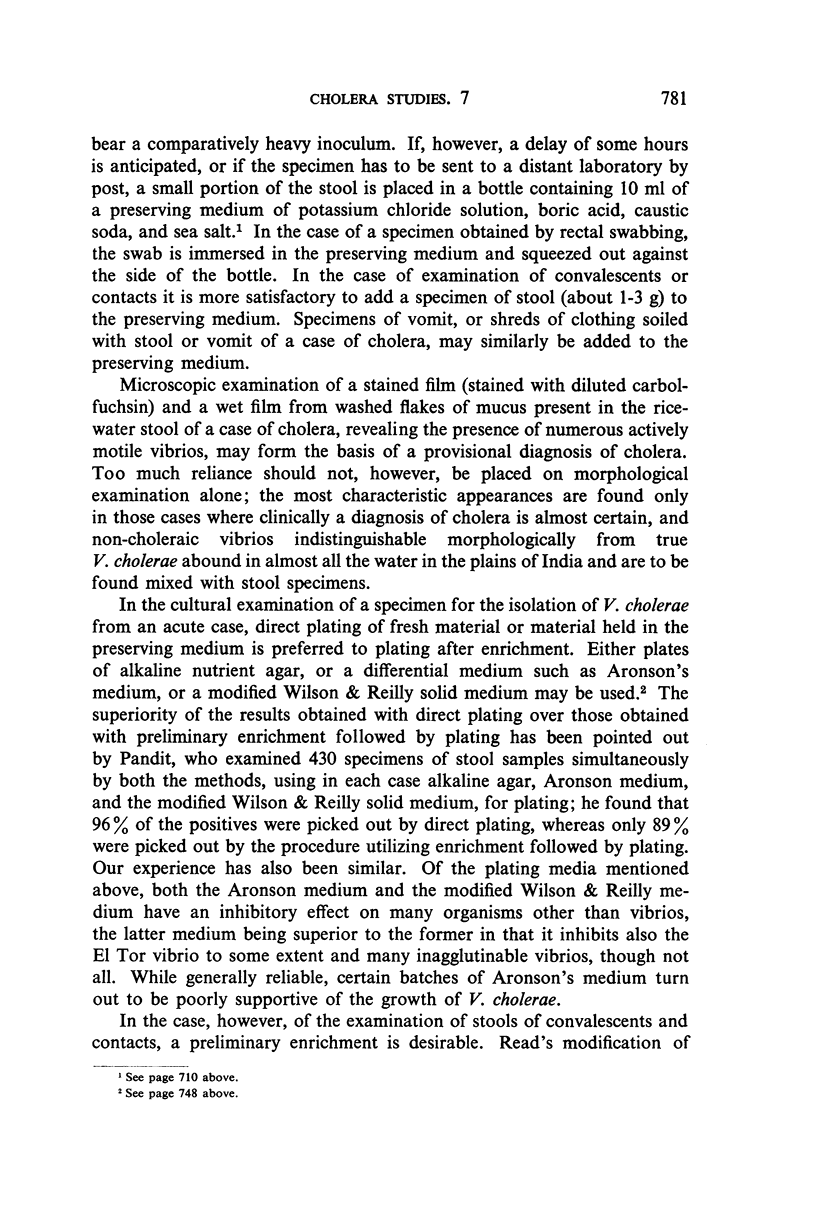
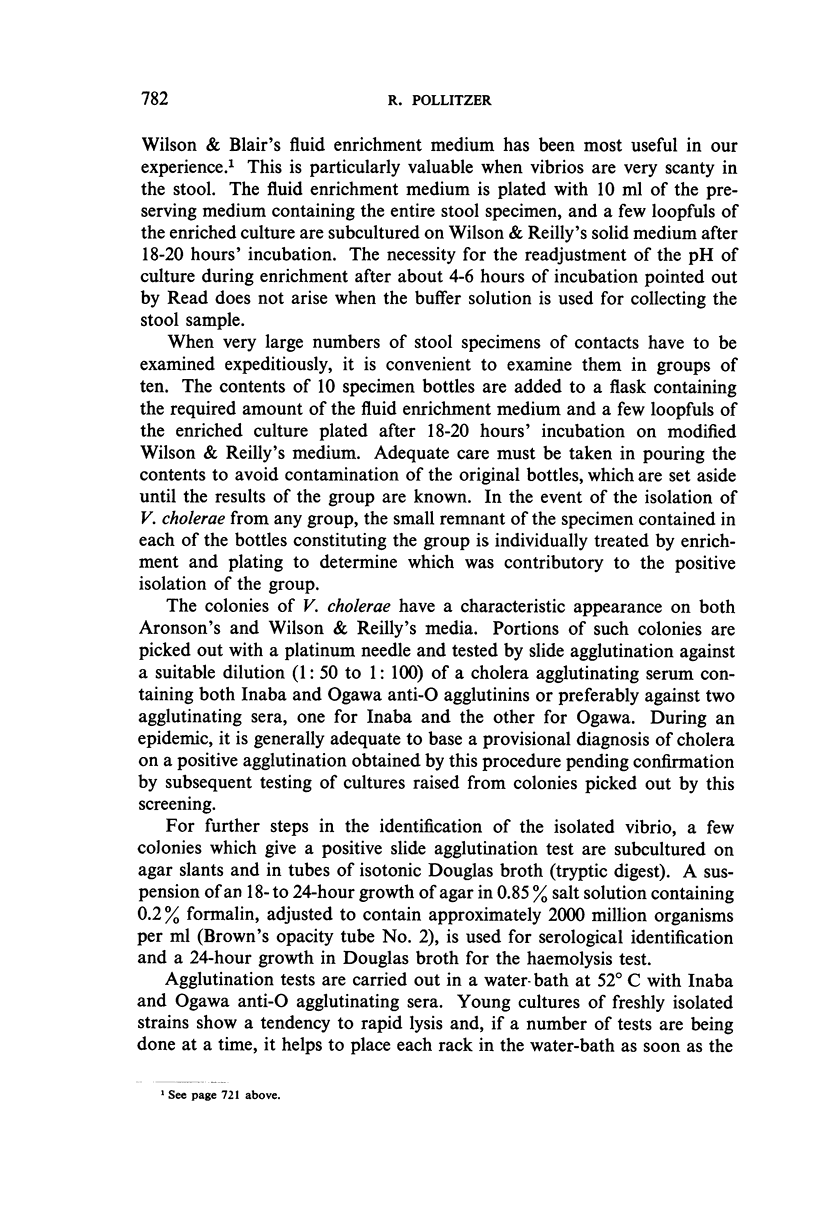
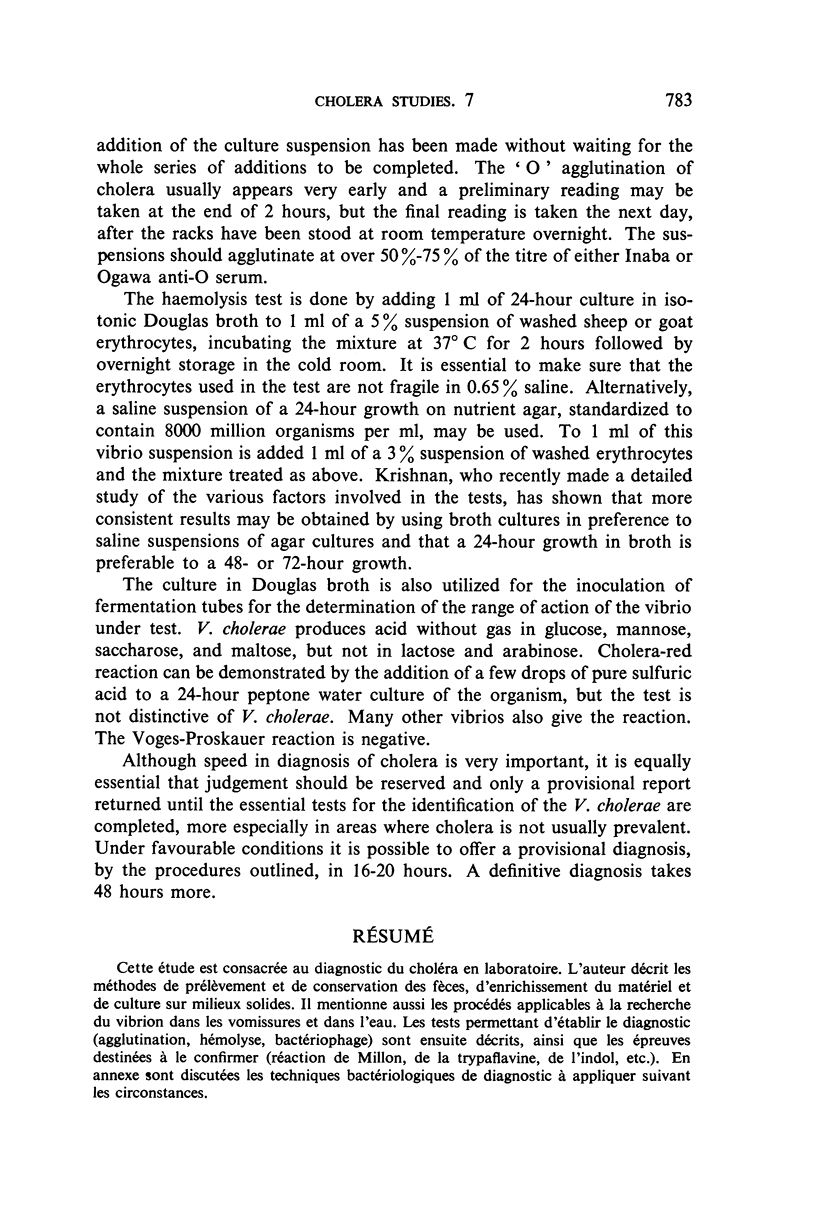
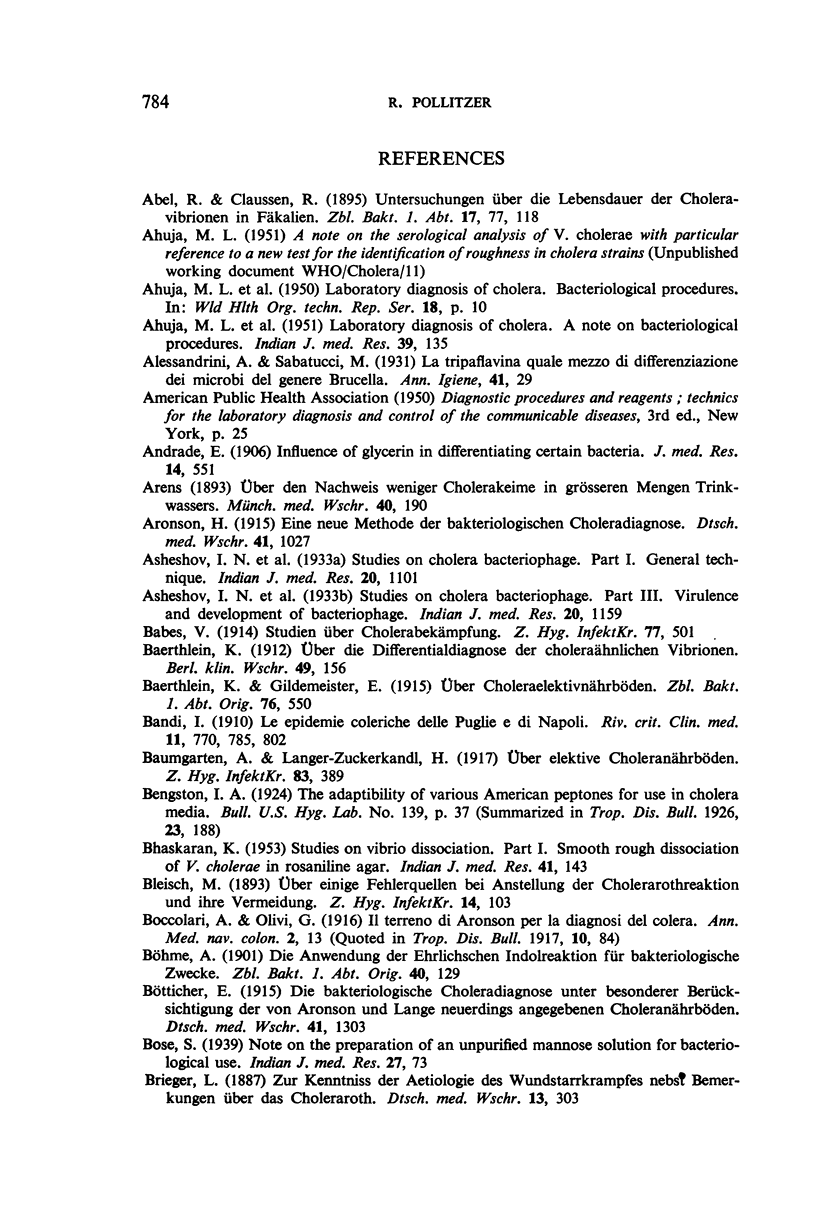
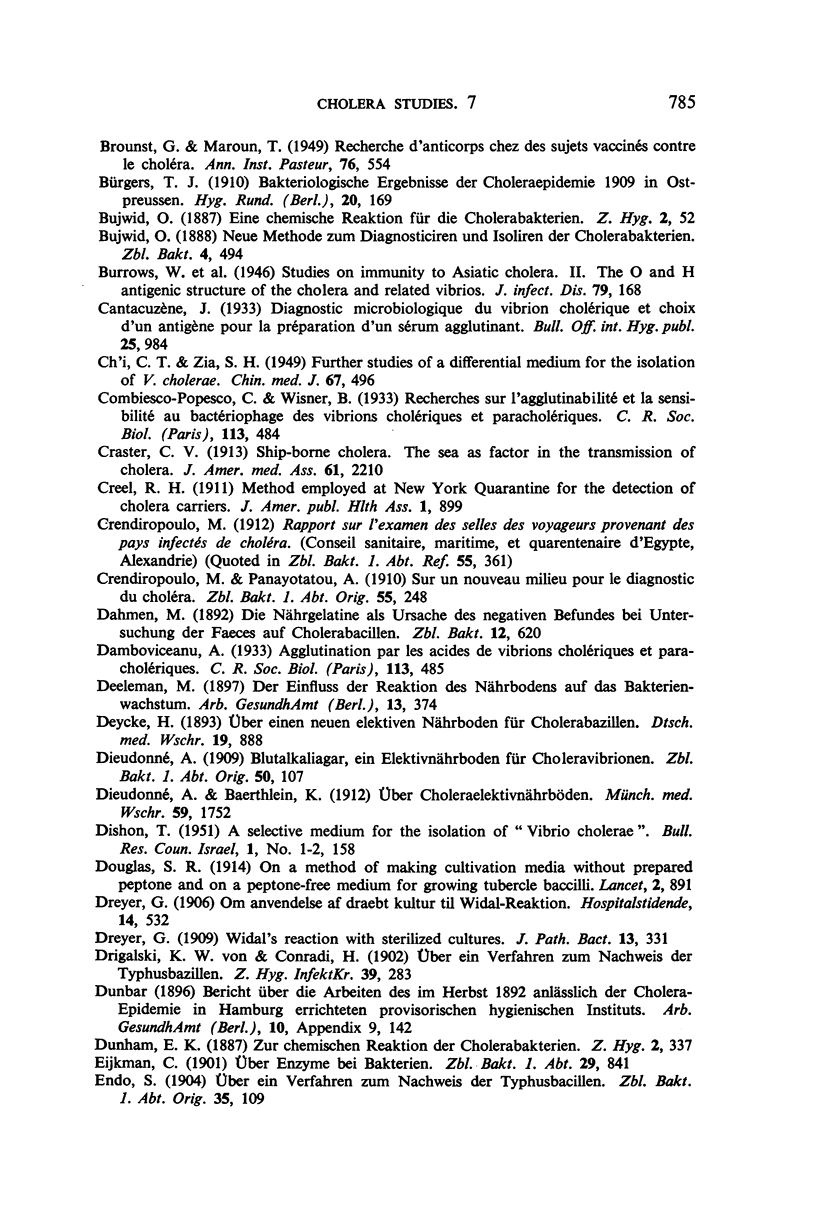
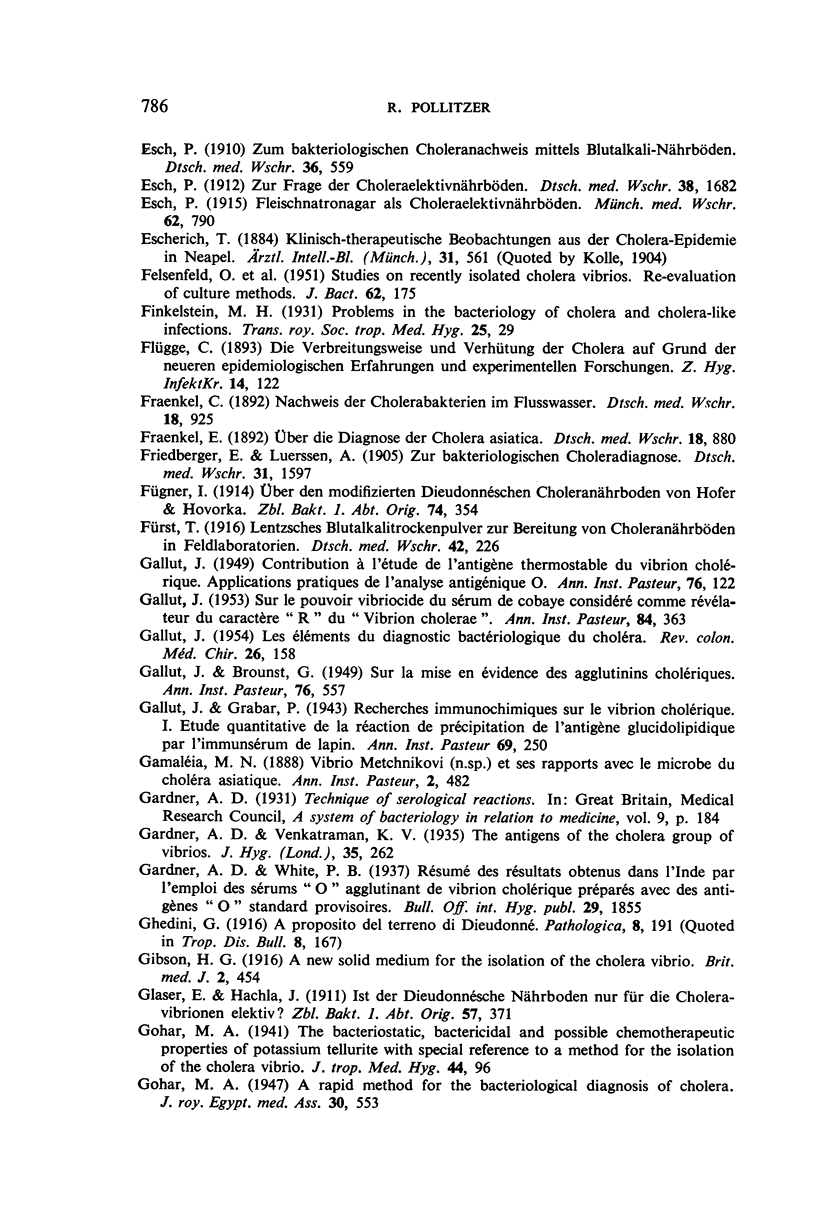
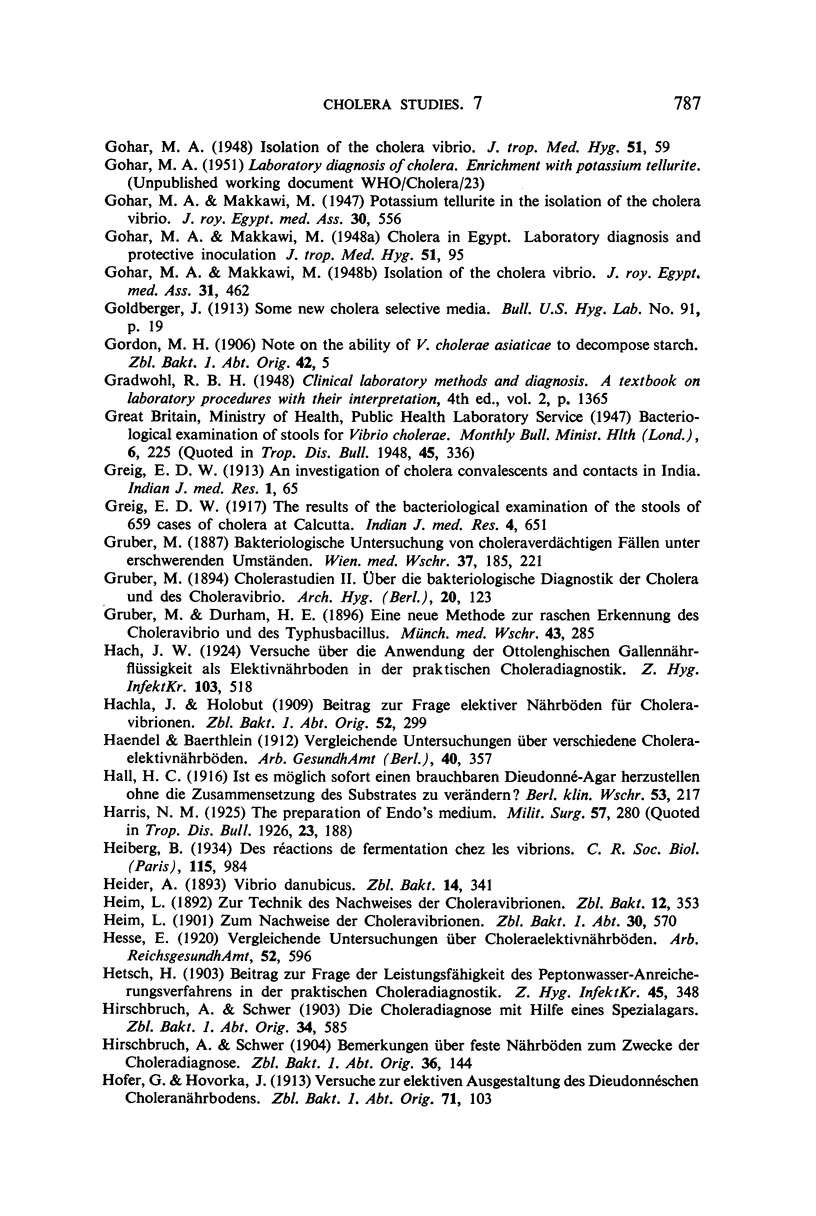
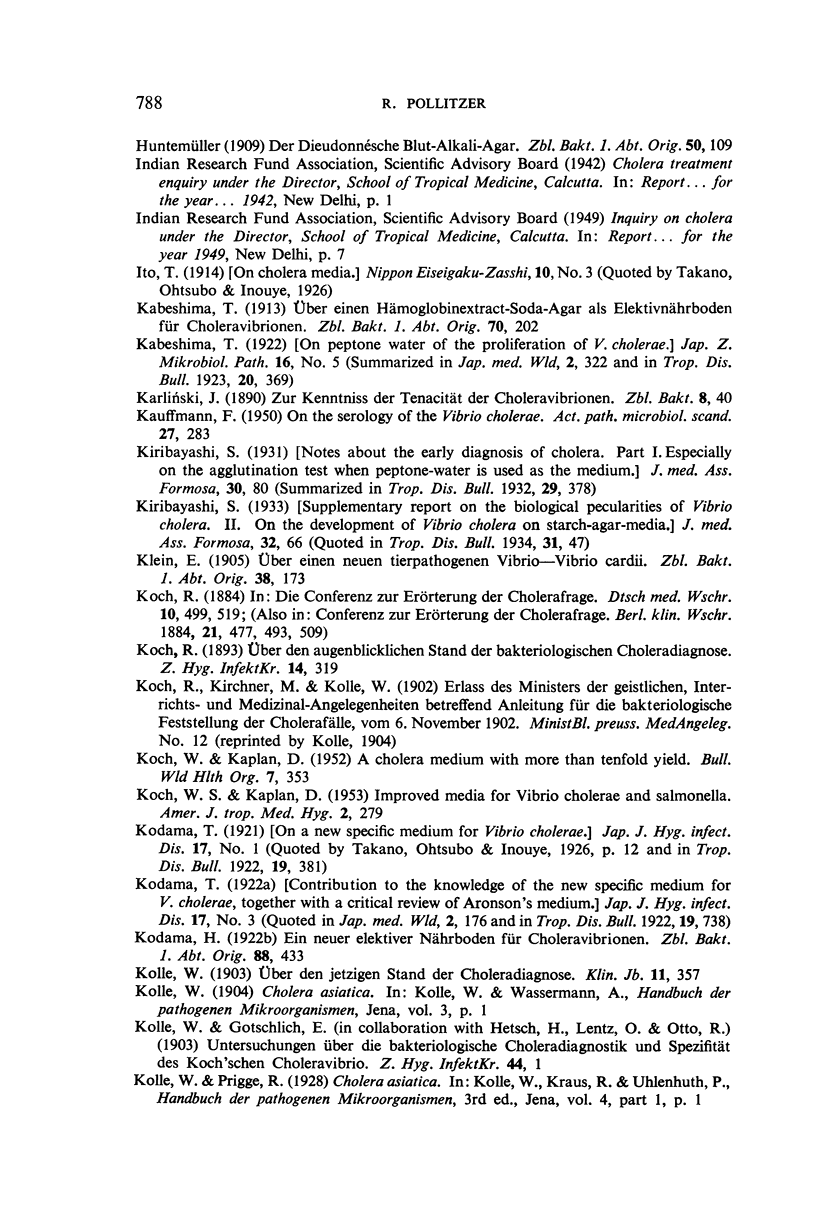
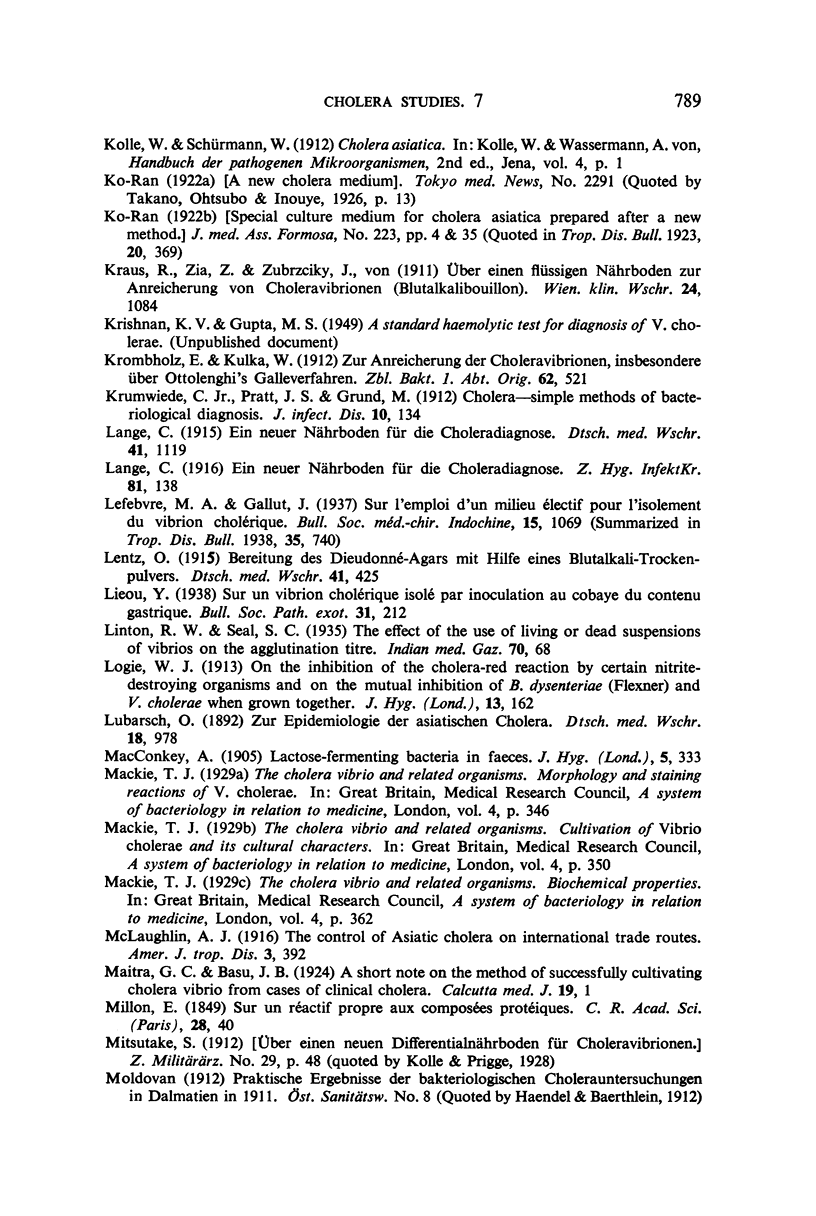
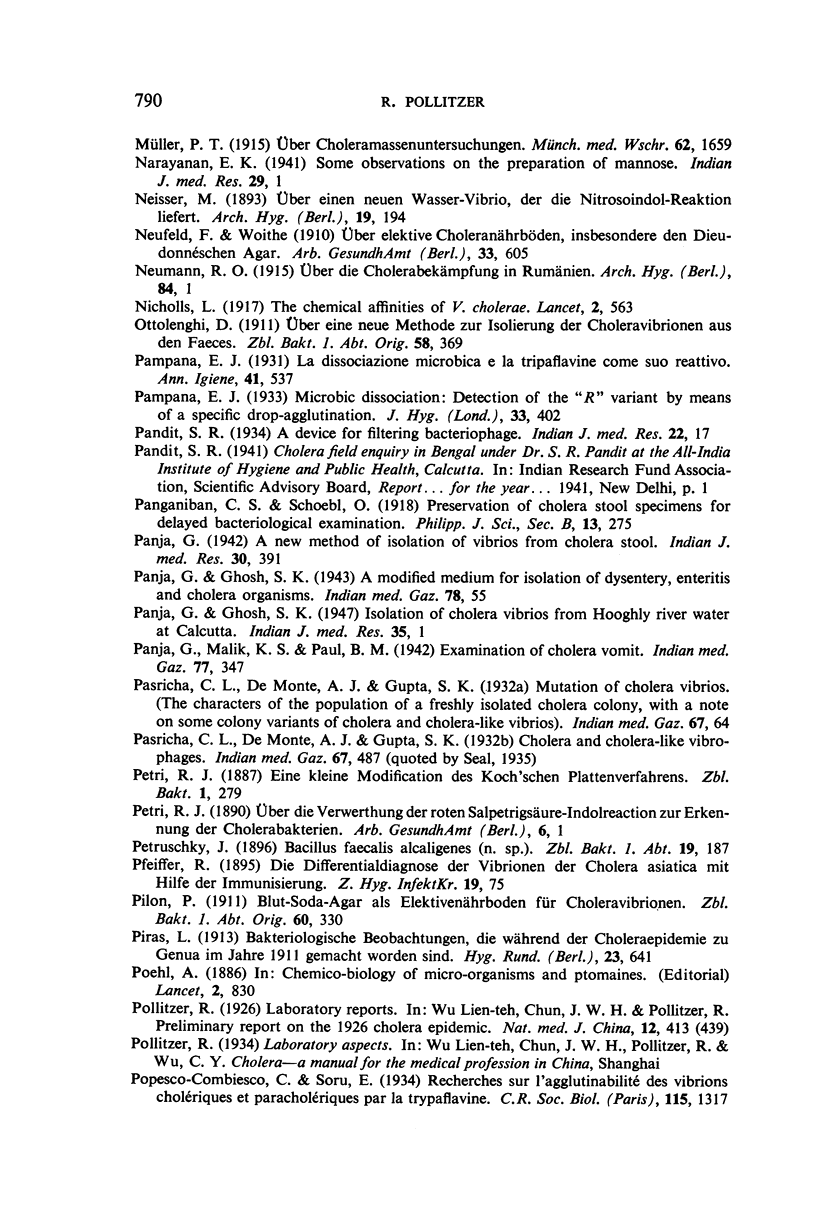
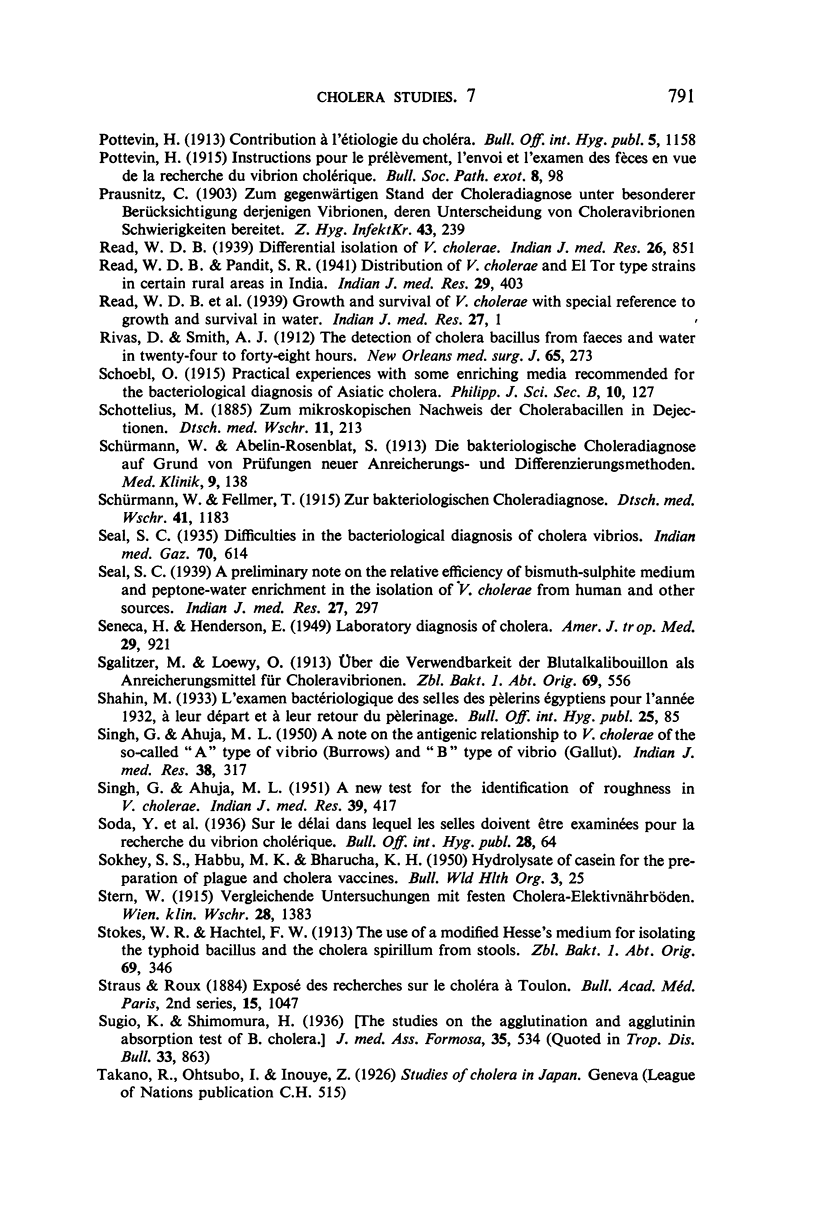
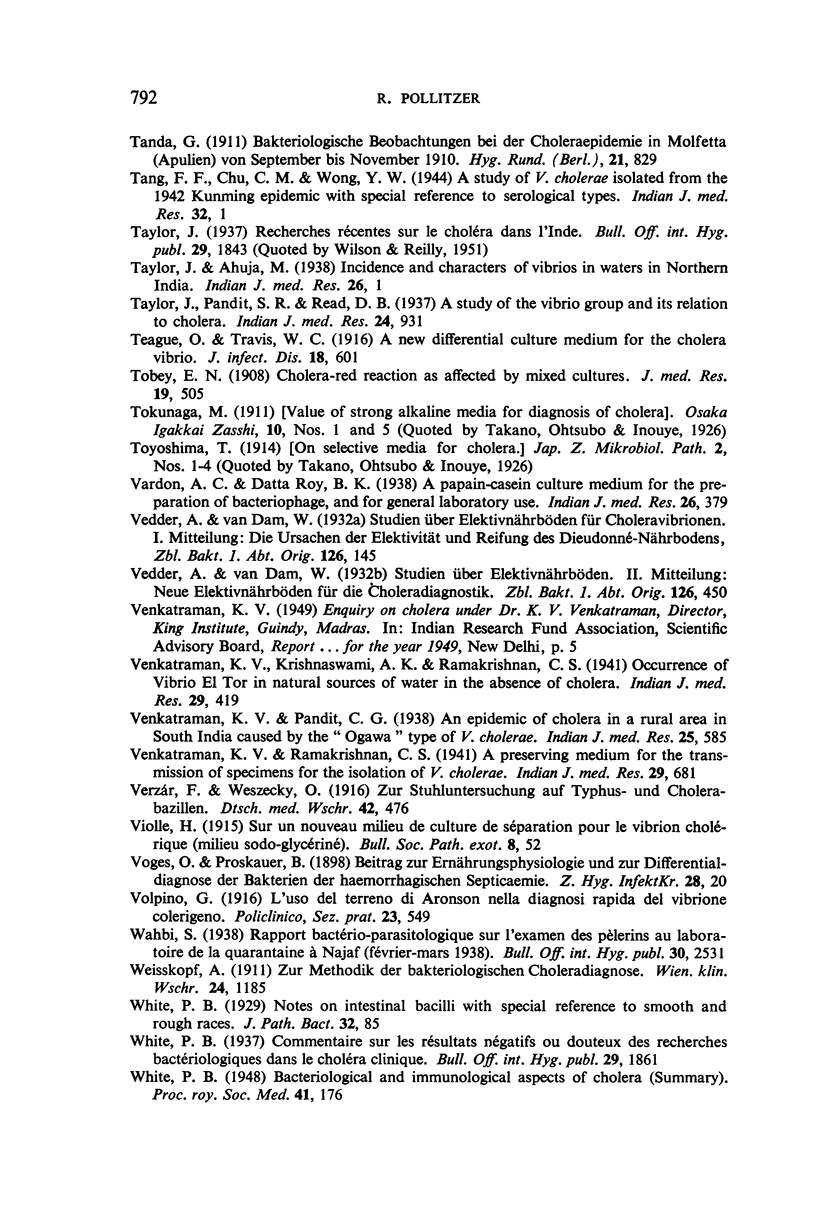
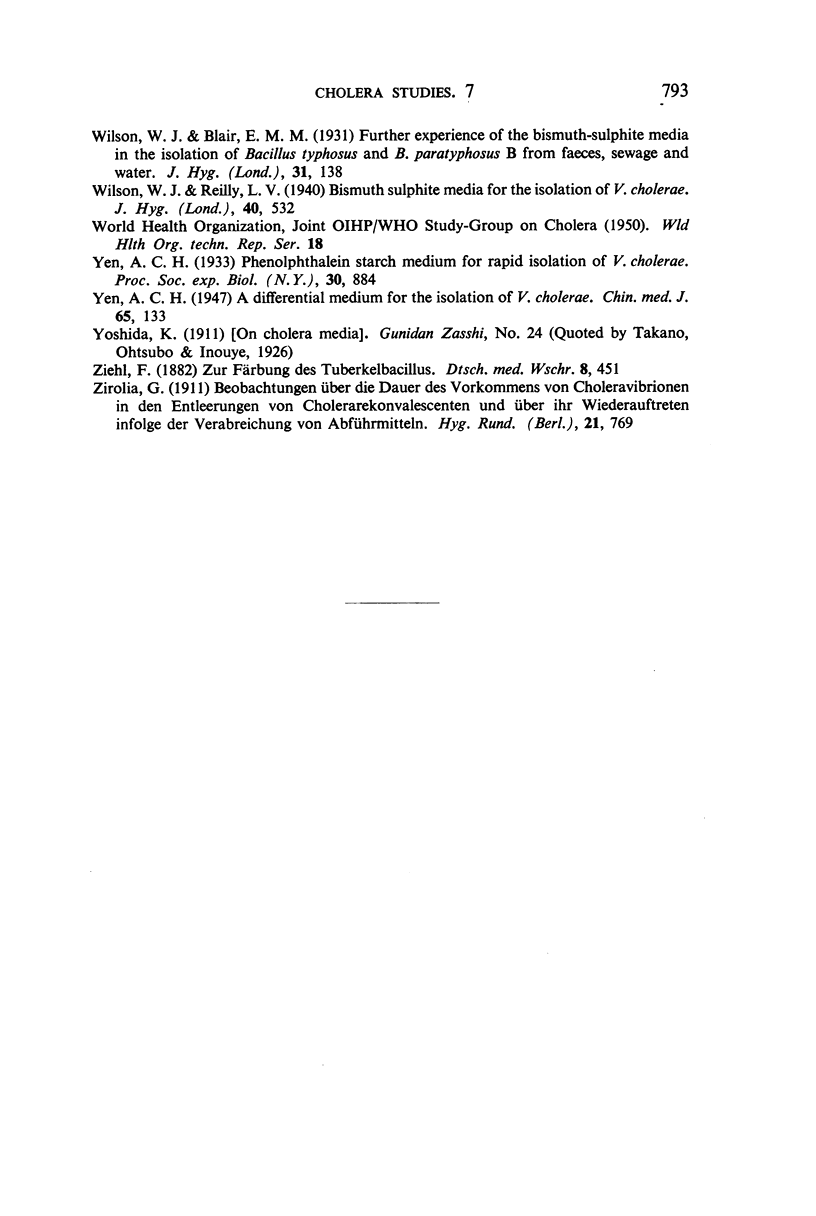
Selected References
These references are in PubMed. This may not be the complete list of references from this article.
- AHUJA M. L., KRISHNAN K. V., PANDIT S. R., VENKATRAMAN K. V. Laboratory diagnosis of cholera; a note on bacteriological procedures. Indian J Med Res. 1951 Apr;39(2):135–139. [PubMed] [Google Scholar]
- Andrade E. The Influence of Glycerin in differentiating certain Bacteria. J Med Res. 1906 Apr;14(3):551–556. [PMC free article] [PubMed] [Google Scholar]
- BHASKARAN K. Studies on vibrio dissociation. I. Smooth rough dissociation of V. cholerae in rosaniline agar. Indian J Med Res. 1953 Apr;41(2):143–157. [PubMed] [Google Scholar]
- Creel R. H. METHOD EMPLOYED AT NEW YORK QUARANTINE FOR THE DETECTION OF CHOLERA CARRIERS. J Am Public Health Assoc. 1911 Dec;1(12):899–905. doi: 10.2105/ajph.1.12.899. [DOI] [PMC free article] [PubMed] [Google Scholar]
- FELSENFELD O., SOMAN D. W., WATERS T., ISHIHARA S. J. Studies on recently isolated cholera vibrios; re-evaluation of culture methods. J Bacteriol. 1951 Aug;62(2):175–180. doi: 10.1128/jb.62.2.175-180.1951. [DOI] [PMC free article] [PubMed] [Google Scholar]
- GALLUT J. Sur le pouvoir vibriocide du sérum de cobaye considéré comme révélateur du caractère "R" de Vibrio cholerae. Ann Inst Pasteur (Paris) 1953 Feb;84(2):363–369. [PubMed] [Google Scholar]
- GURKIRPAL SINGH, AHUJA M. L. A new test for the identification of roughness in Vibrio cholerae. Indian J Med Res. 1951 Jul;39(3):417–421. [PubMed] [Google Scholar]
- Gibson H. G. A NEW SOLID MEDIUM FOR THE ISOLATION OF THE CHOLERA VIBRIO. Br Med J. 1916 Sep 30;2(2909):454–455. doi: 10.1136/bmj.2.2909.454-a. [DOI] [PMC free article] [PubMed] [Google Scholar]
- KOCH W., KAPLAN D. A cholera medium with more than tenfold yield. Bull World Health Organ. 1952;7(3):353–356. [PMC free article] [PubMed] [Google Scholar]
- KOCH W., KAPLAN D. Improved media for Vibrio cholerae and Salmonella used in human vaccines. Am J Trop Med Hyg. 1953 Mar;2(2):279–285. doi: 10.4269/ajtmh.1953.2.279. [DOI] [PubMed] [Google Scholar]
- SENECA H., HENDERSON E. Laboratory diagnosis of cholera. Am J Trop Med Hyg. 1949 Nov;29(6):921–924. doi: 10.4269/ajtmh.1949.s1-29.921. [DOI] [PubMed] [Google Scholar]
- SINGH G., AHUJA M. L. A note on the antigenic relationship to V. cholerae of the so-called 'A' type of vibrio (Burrows) and 'B' type of vibrio (Gallut). Indian J Med Res. 1950 Jul;38(3):317–337. [PubMed] [Google Scholar]
- SOKHEY S. S., HABBU M. K., BHARUCHA K. H. Hydrolysate of casein for the preparation of plague and cholera vaccines. Bull World Health Organ. 1950;3(1):25–31. [PMC free article] [PubMed] [Google Scholar]
- Tobey E. N. I. A new Para-Dimethyl-Amido-Benzaldehyde Test for indol. II. Cholera-Red Reaction as affected by mixed Cultures. J Med Res. 1908 Dec;19(4):499–505. [PMC free article] [PubMed] [Google Scholar]
- WHITE P. B. Bacteriological and immunological aspects of cholera. Proc R Soc Med. 1948 Mar;41(3):176–178. [PMC free article] [PubMed] [Google Scholar]


